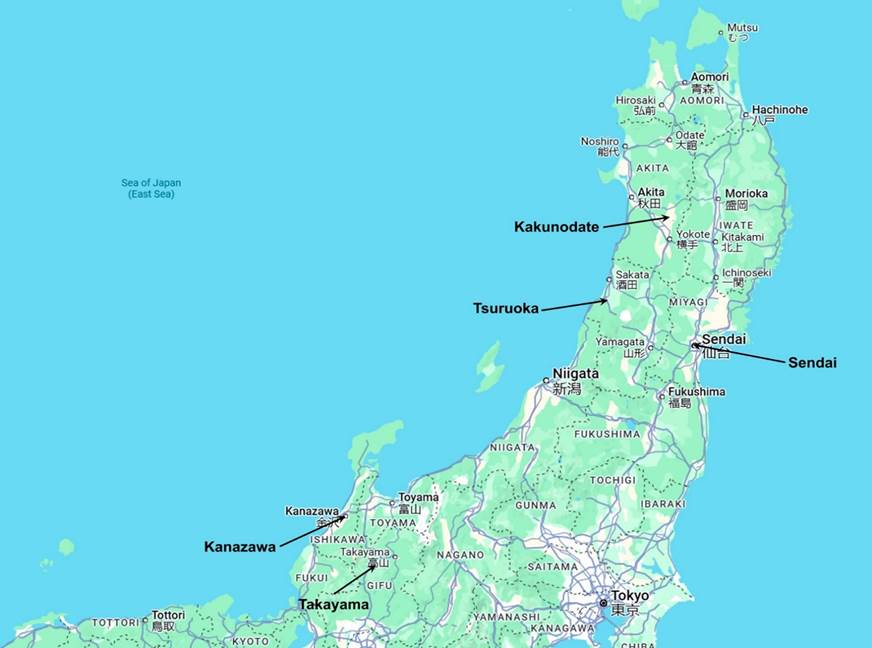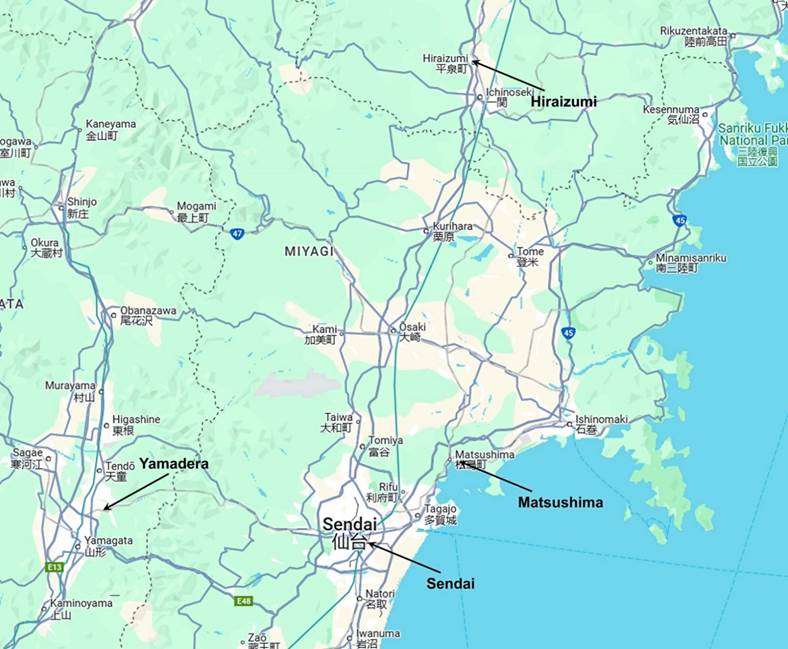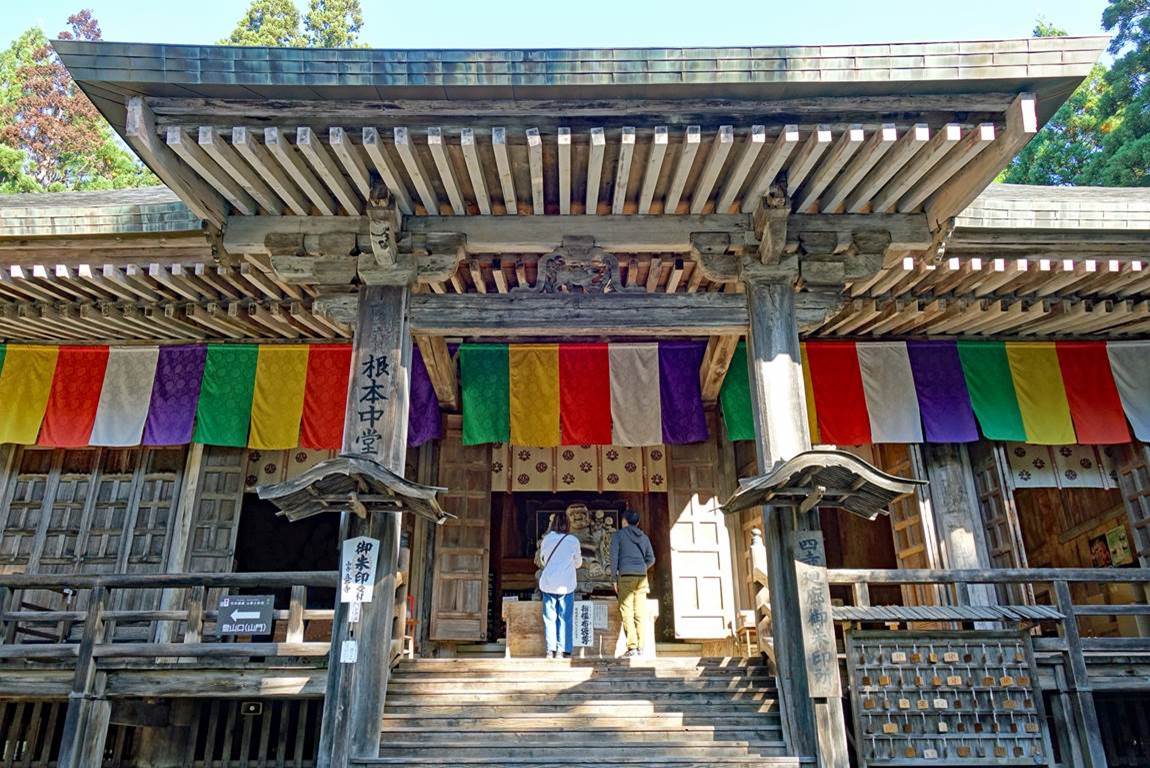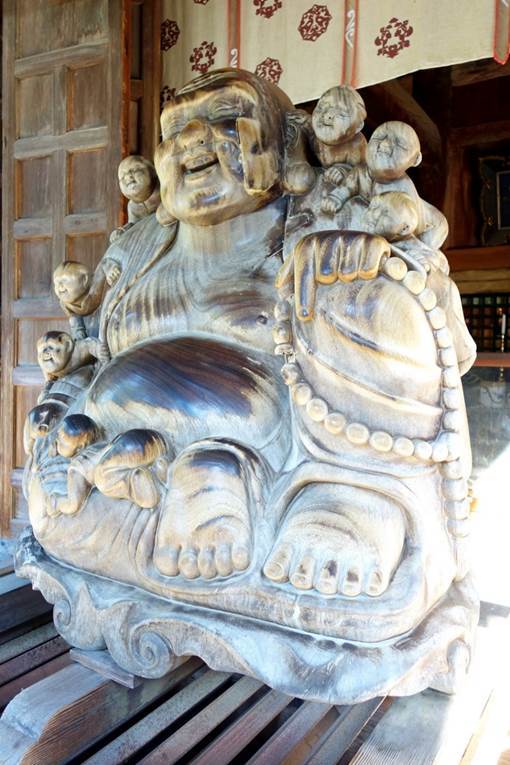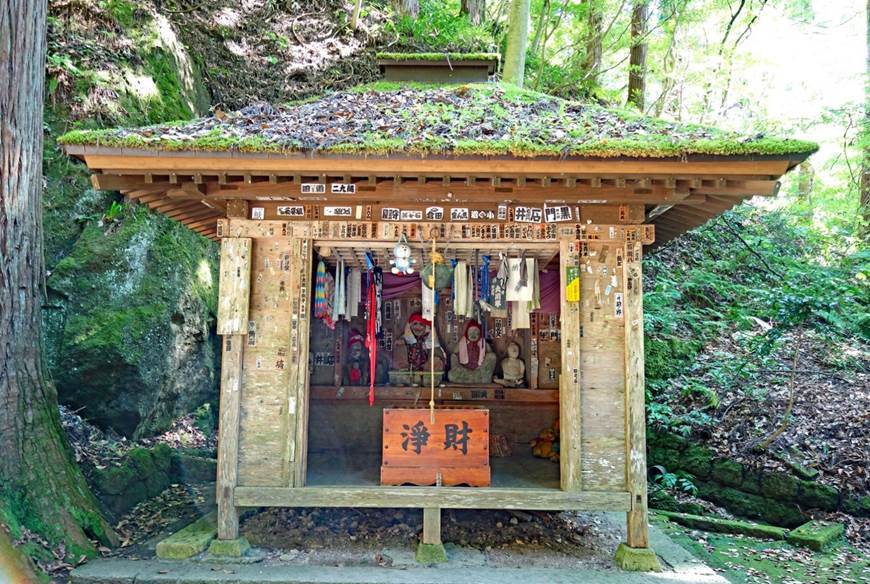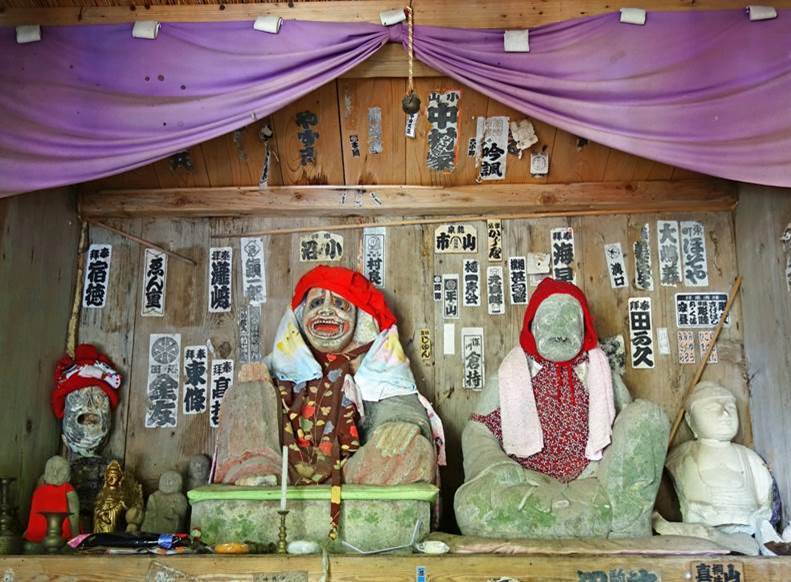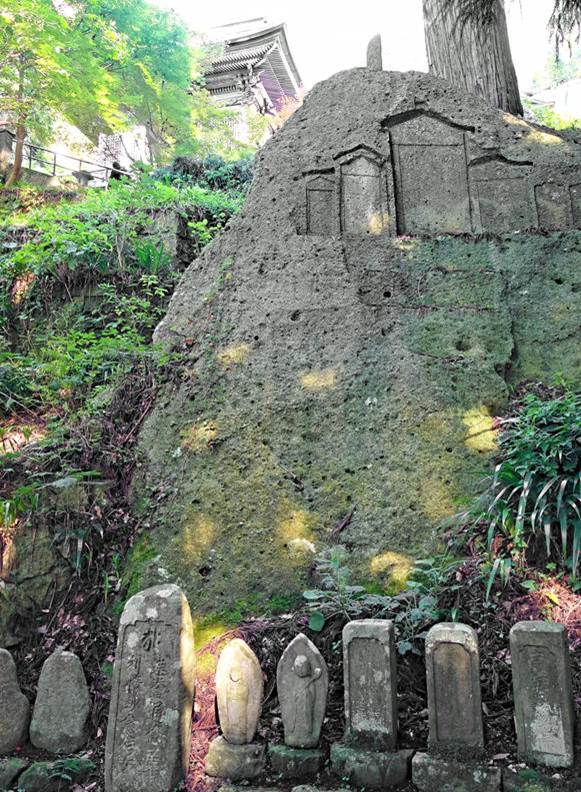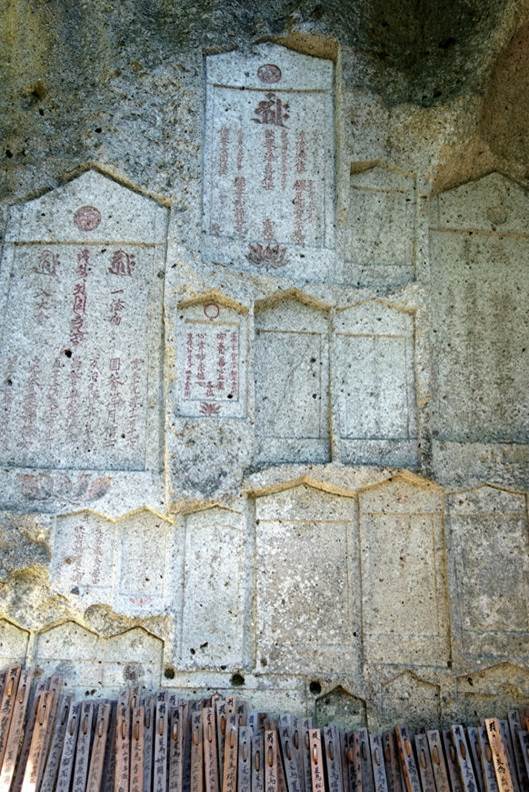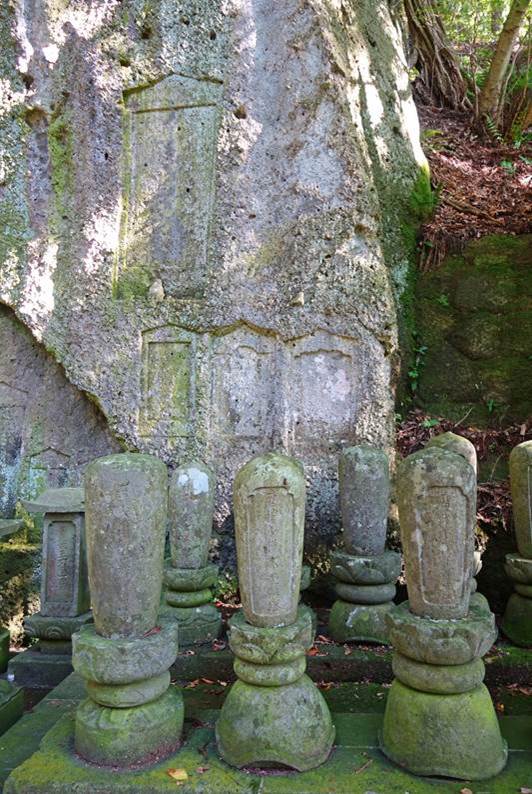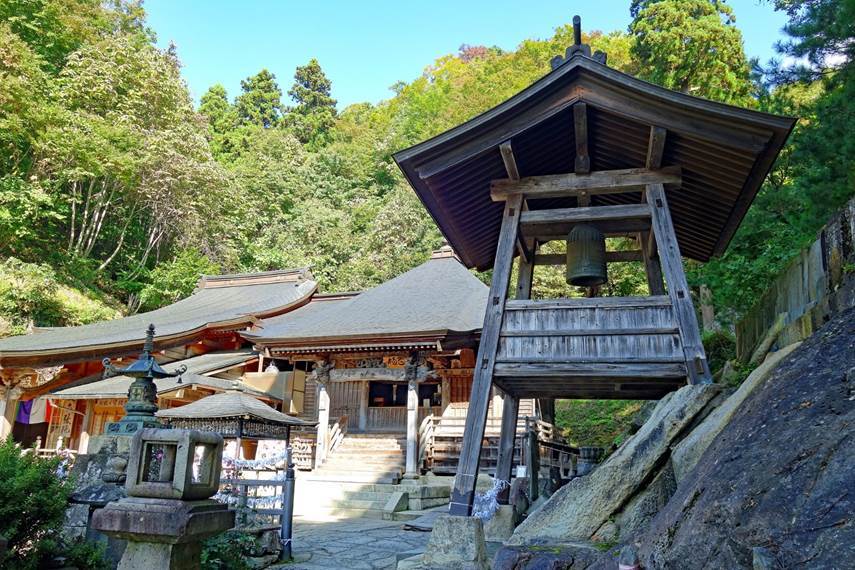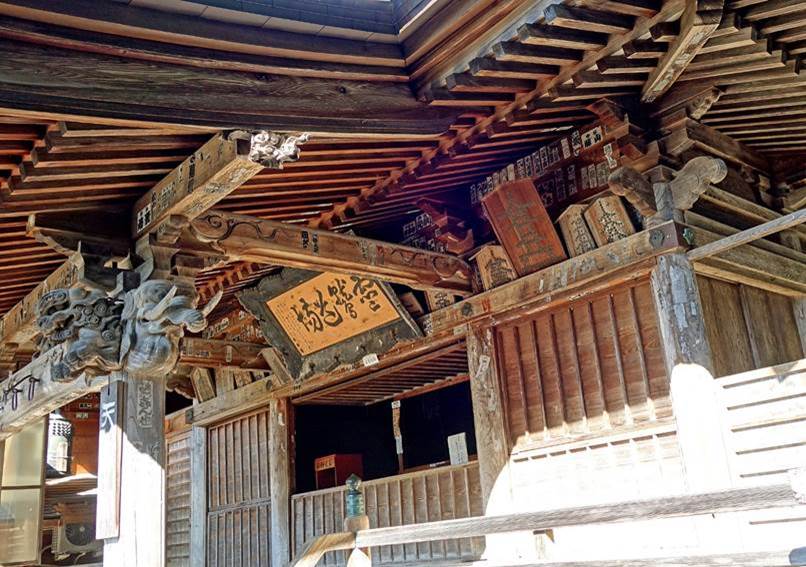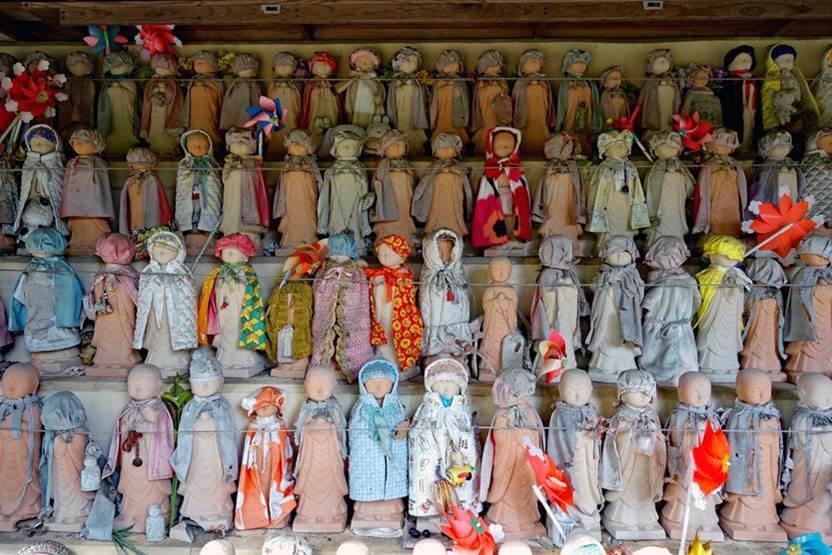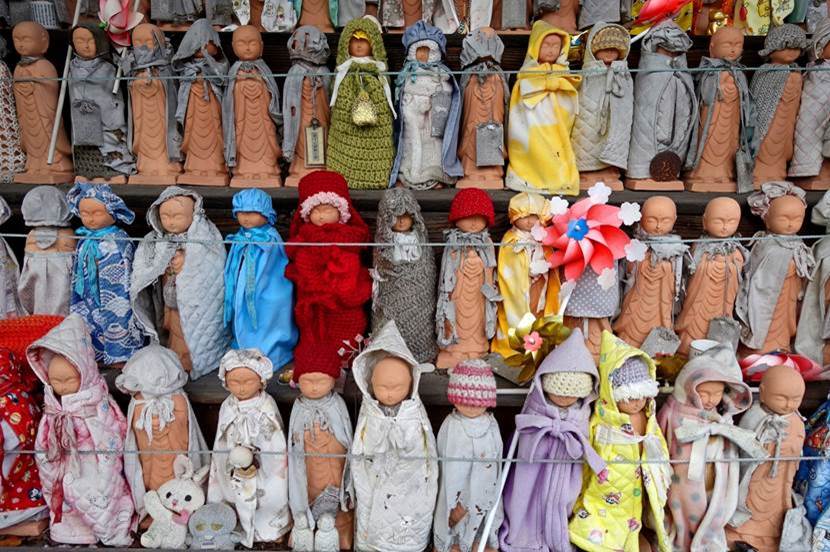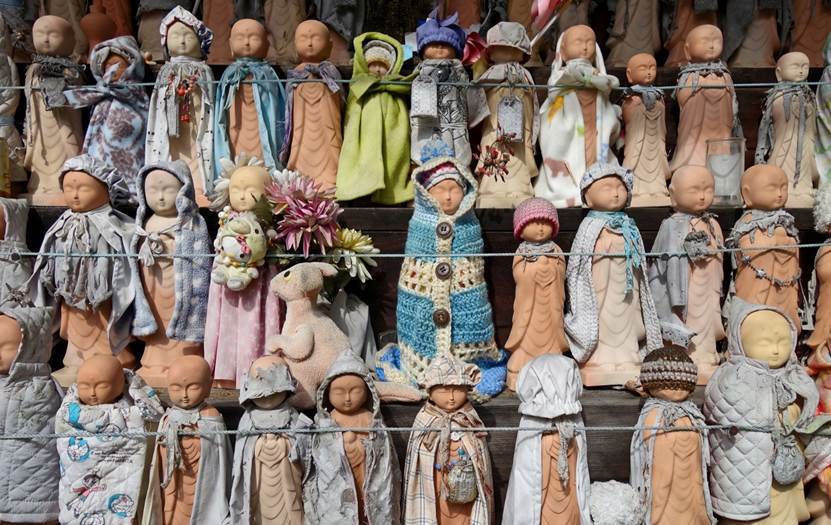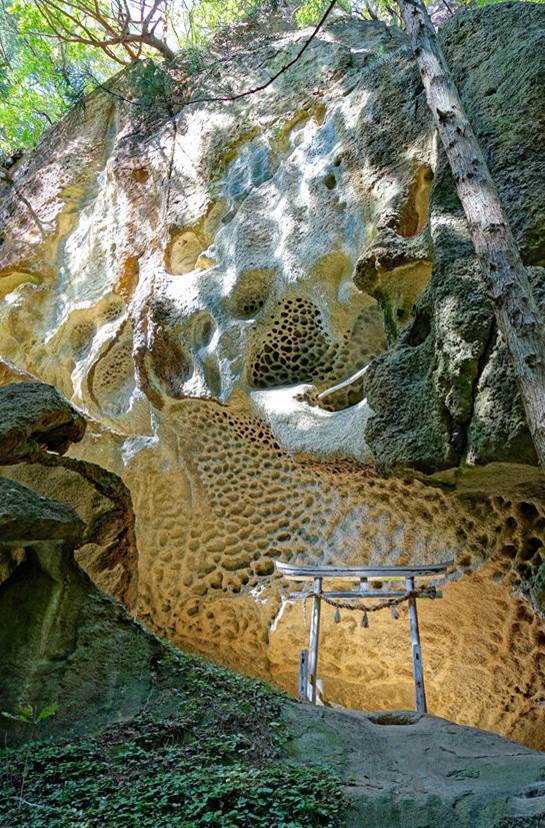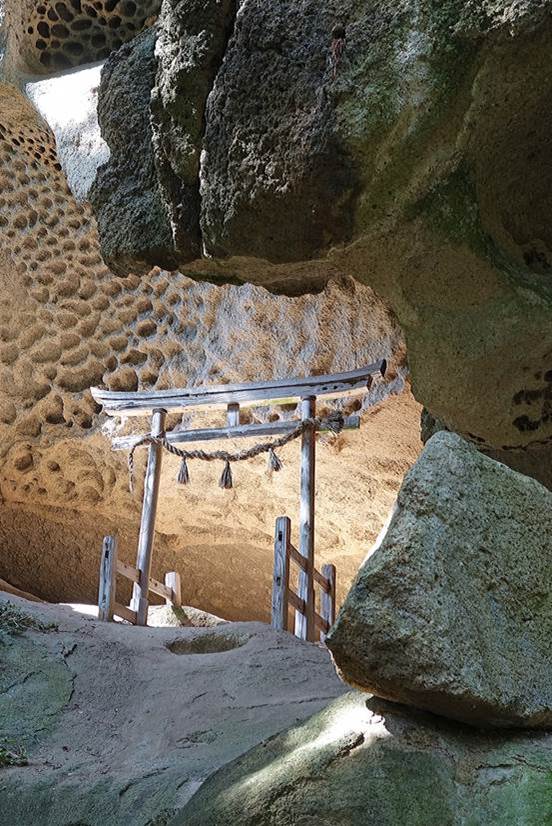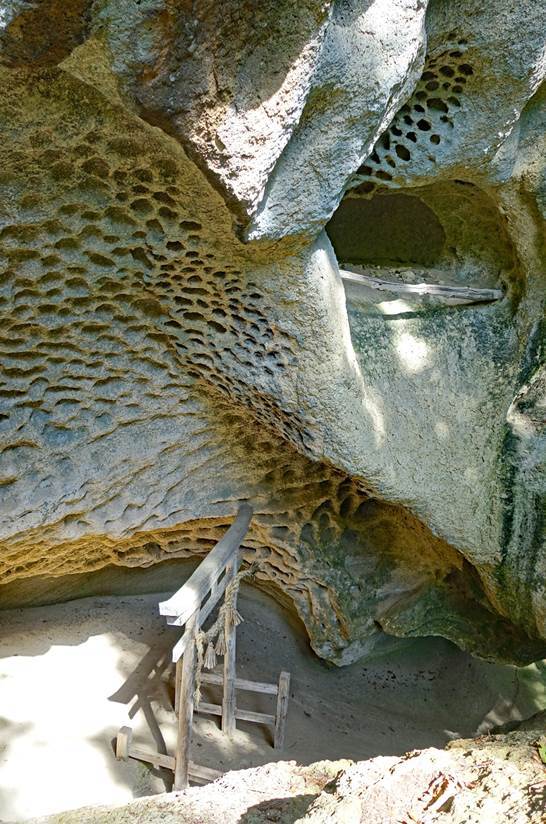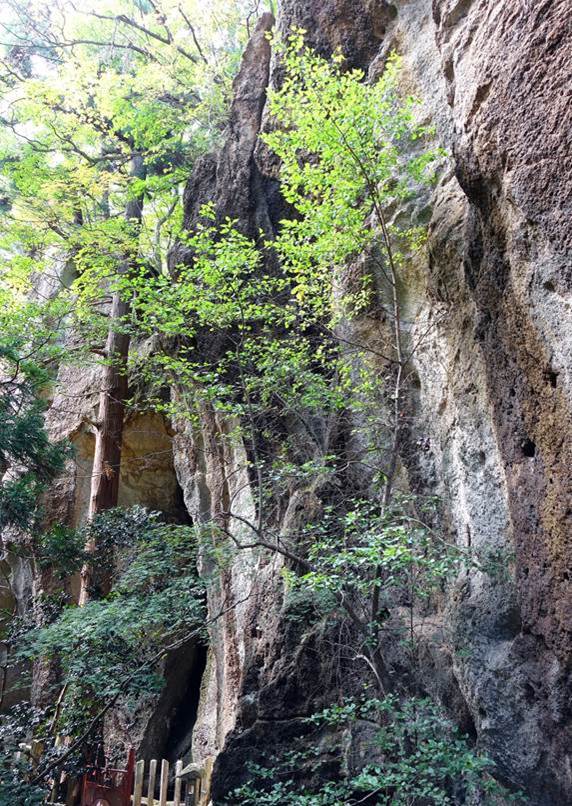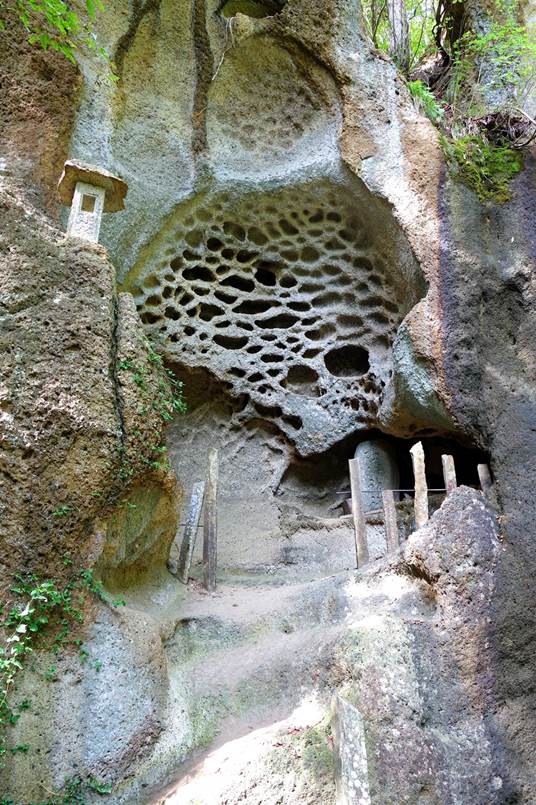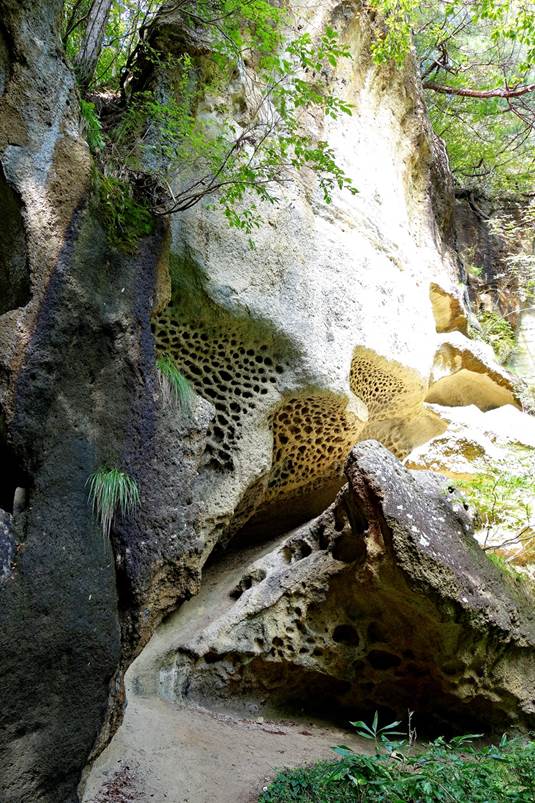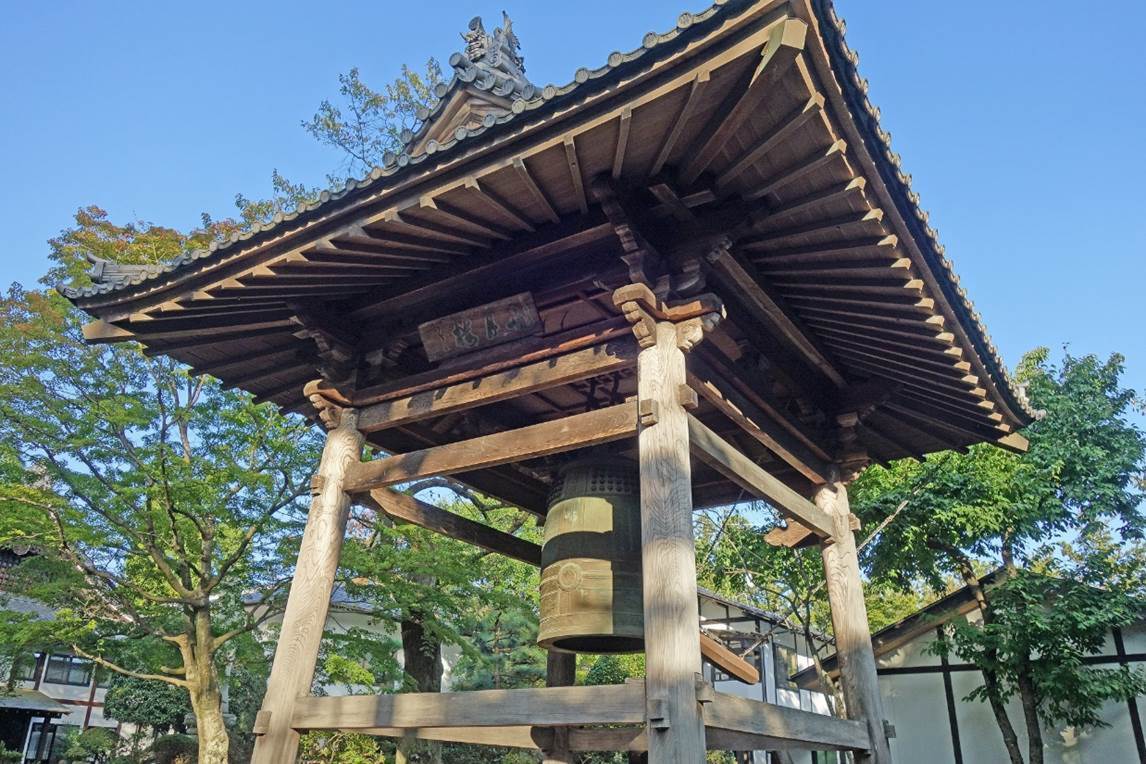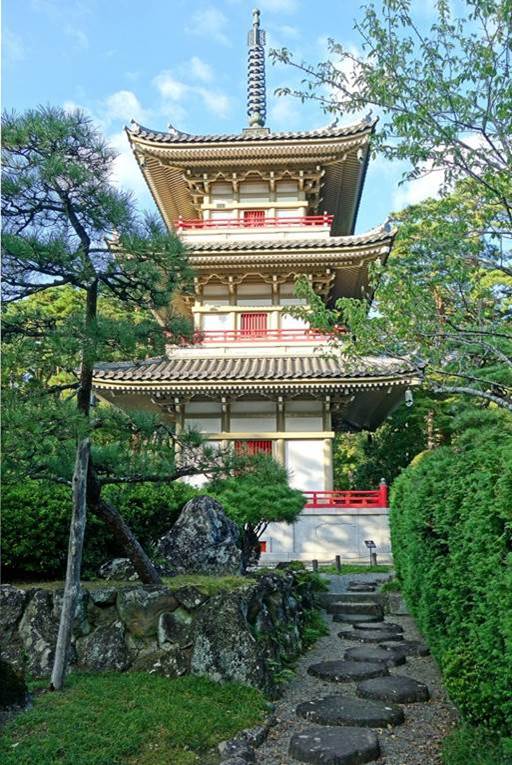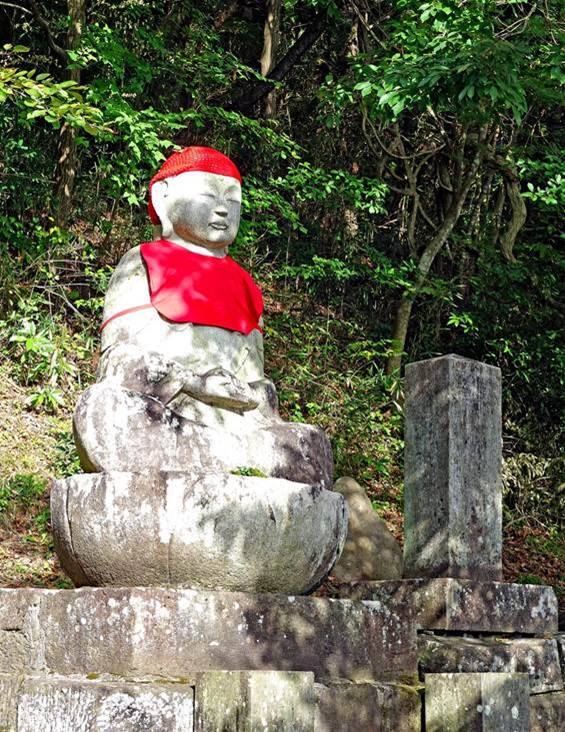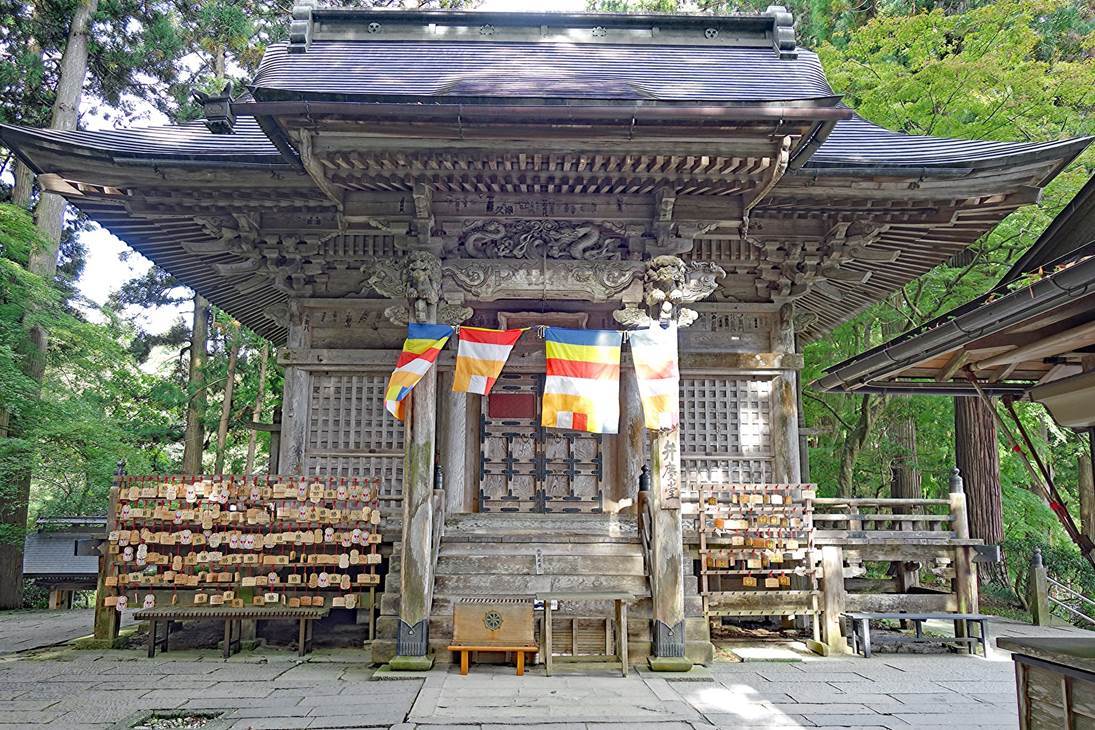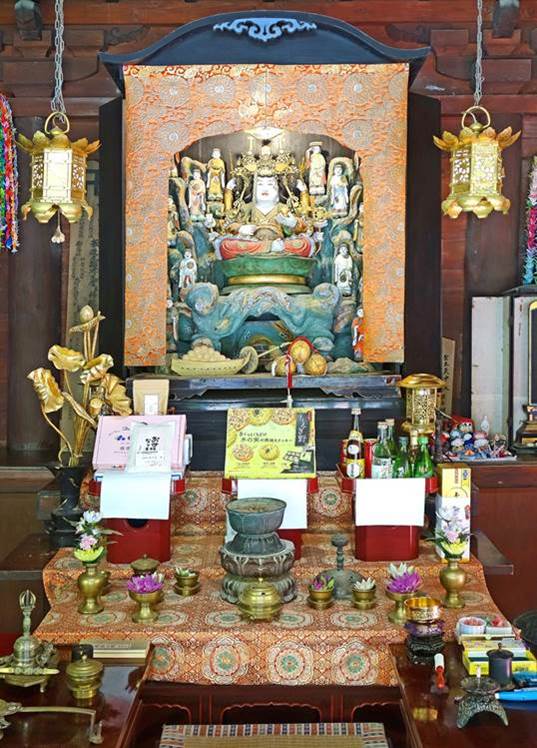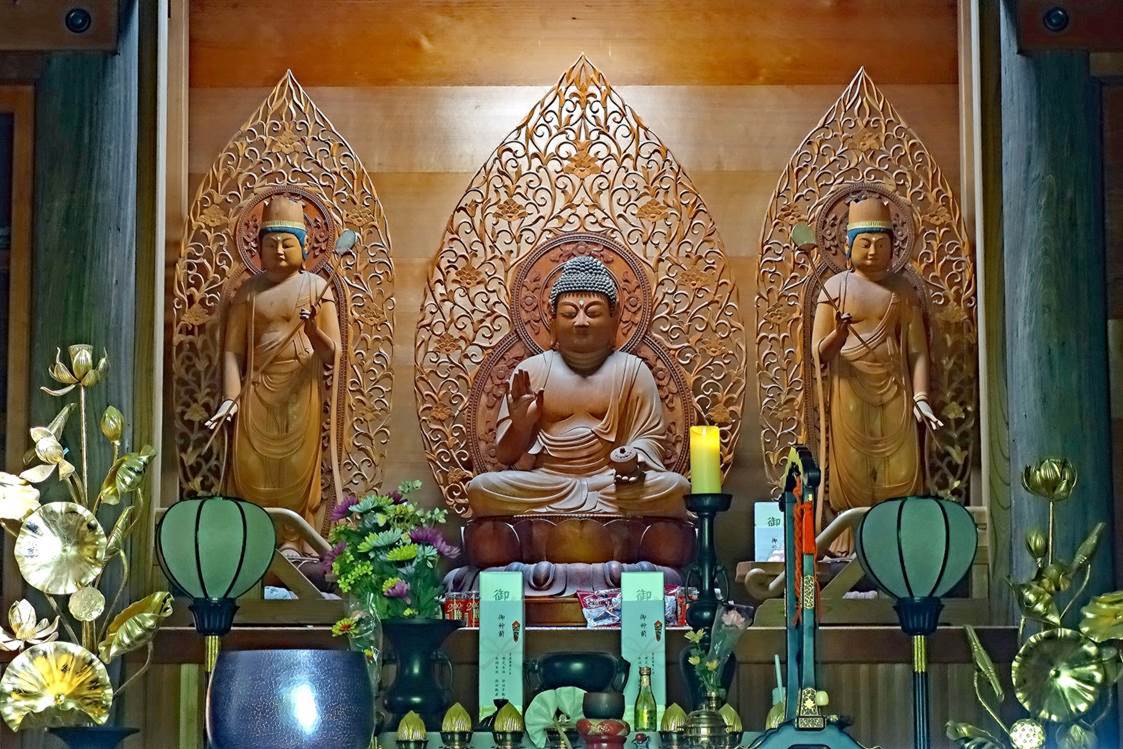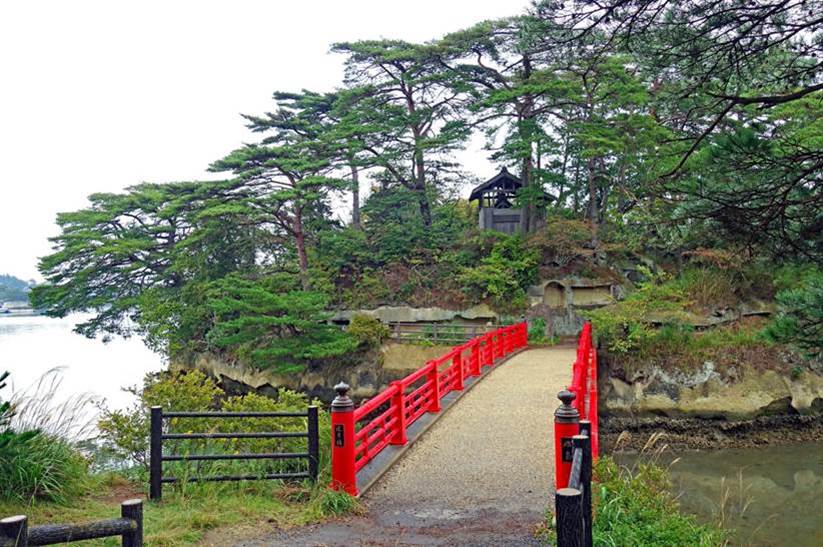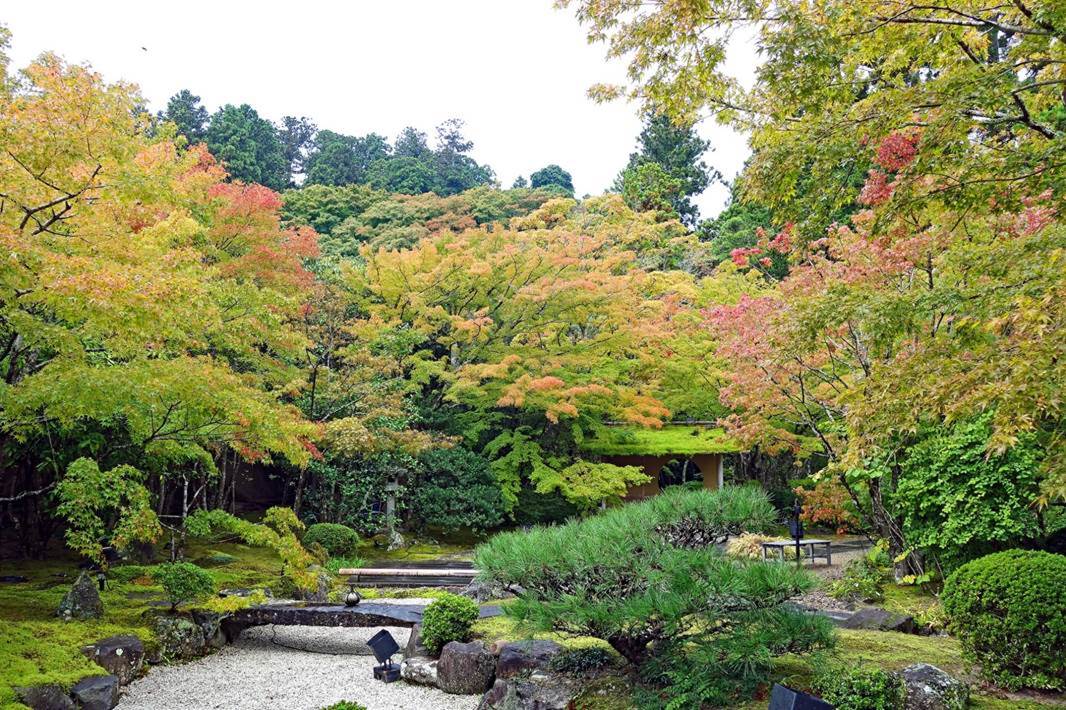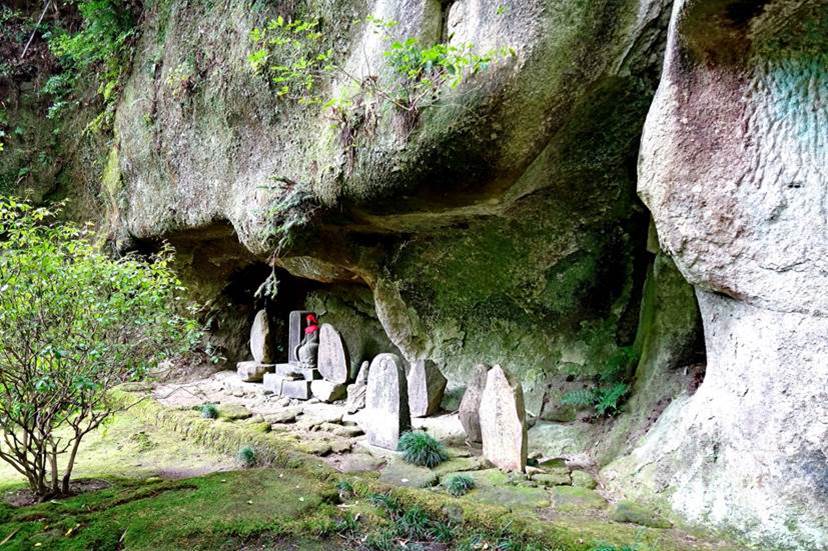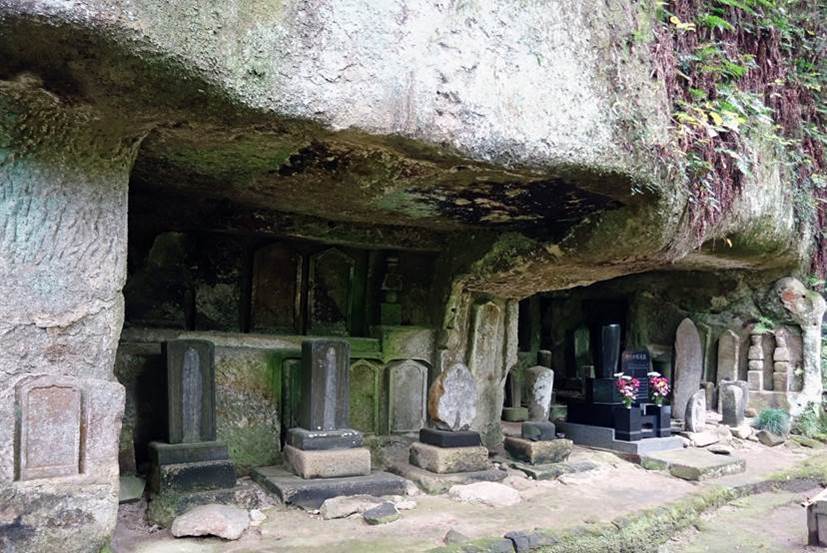Yamadera, Sendai, Hiraizumi, and
Matsushima
Northeastern Honshu, Japan (October
2024)
![]()
Back to main Japan October 2024 page
|
|
|
Yamadera
Yamadera
(lit. ″Mountain Temple″) is a small town on the banks of the
Tachiya river, 12km northeast of Yamagata City. It is the site of Risshaku-ji,
a Buddhist temple founded in 860, which has been a major place of
pilgrimage ever since. This temple consists of a series of structures built on
a steep forested slope above the Tachiya river. Starting from the Konponchudo,
a prayer hall at the foot of the compound, a stone path comprising 1,015 steps
provides access to the other buildings, up to the Okunoin sanctuary at the top
of the compound.
View over the
Tachiya valley near Yamadera.

Site of
Risshaku-ji seen from Yamadera. A few buildings of the temple are visible in
the picture.
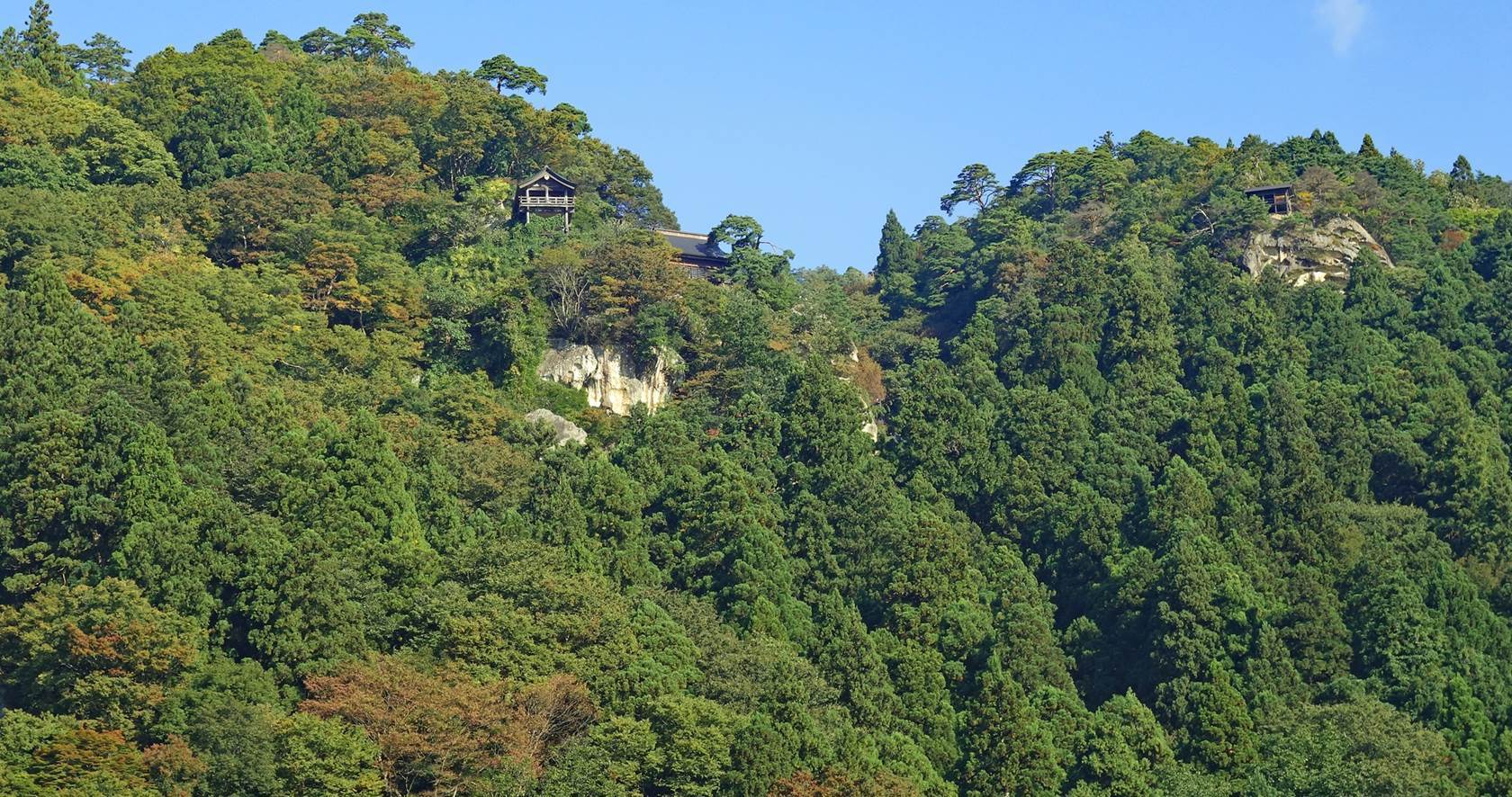
The Konponchudo (the main prayer hall at the base of the
temple) and its statue of a seated Buddha, in front of which people come to
pray. Konponchudo hosts an ″eternal flame″ said to have been
burning since the founding of the temple.
|
|
|
The Ubado, a
small hall seen shortly after the start of the ascent. The two main statues
represent the fearsome woman Datsueba and the demon Keneo, who guard the
crossing of the Sanzu river, believed in Japanese Buddhism to separate the
world of the living from the world of the afterlife. Here, passing by the Ubado
symbolizes entry into the next world. So, pilgrims should purify their bodies
and souls before proceeding further.
|
|
|
Midahora, a
large rock face with carved features located below the Niomon (see below). The
shape of the whole rock is said to resemble Amida Nyorai Buddha (the Healing
Buddha).
|
|
|
|
The Niomon.
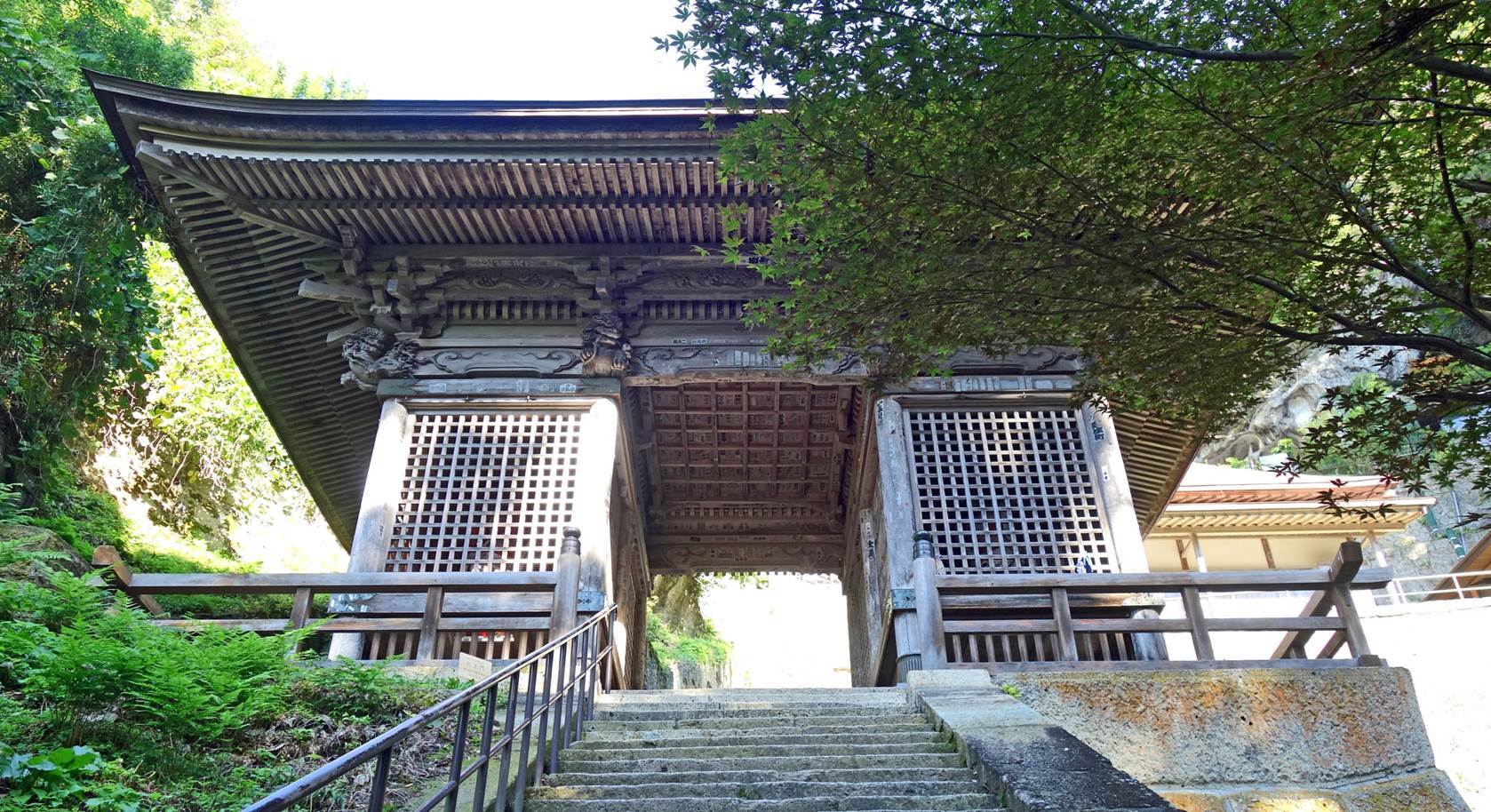
Nokyodo, a
small structure erected on a rock, and the Kaisando on its right, both
overlooking the valley of the Tachiya river.
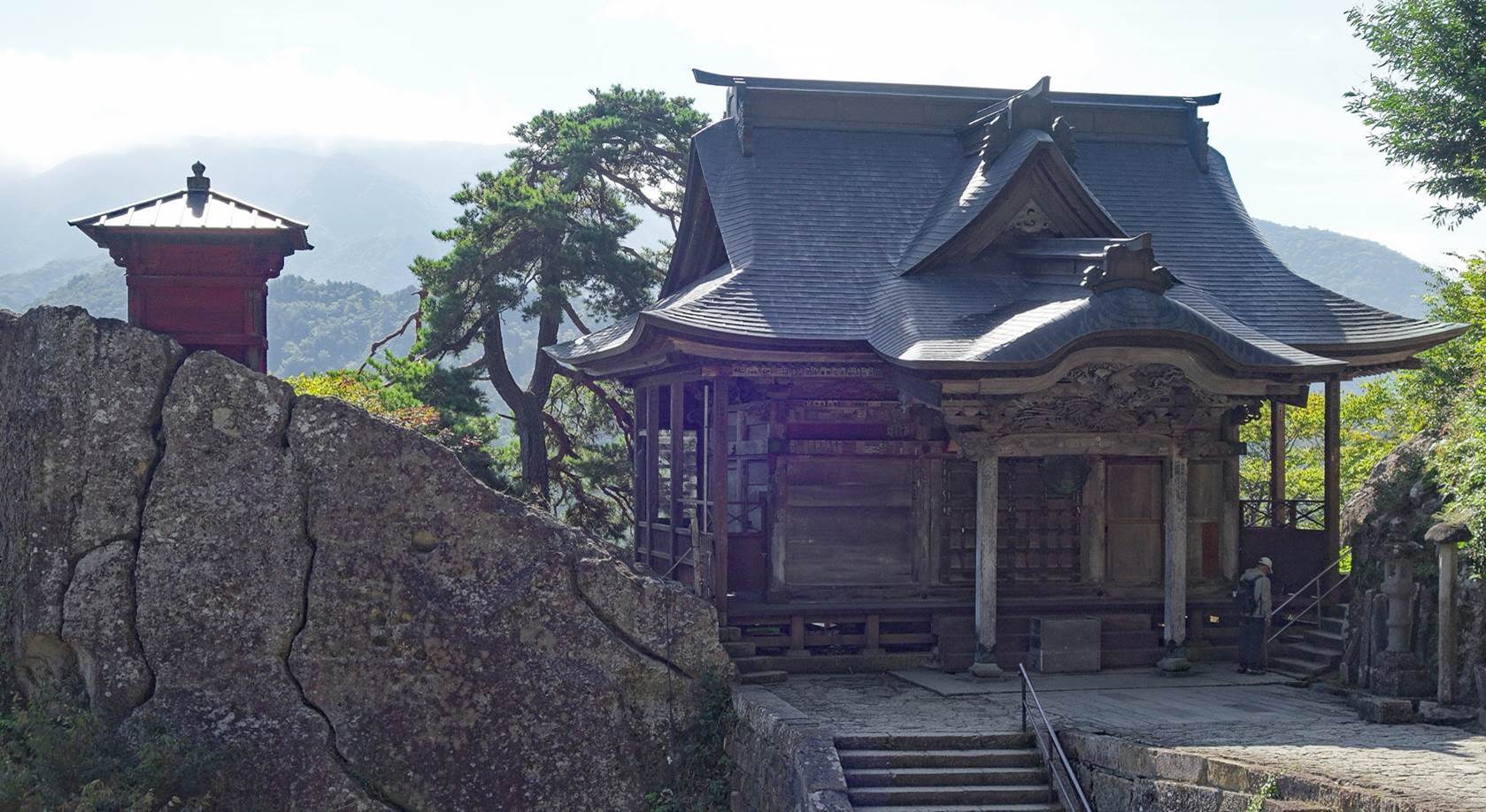
The Nokyodo
and the valley of the Tachiya river.
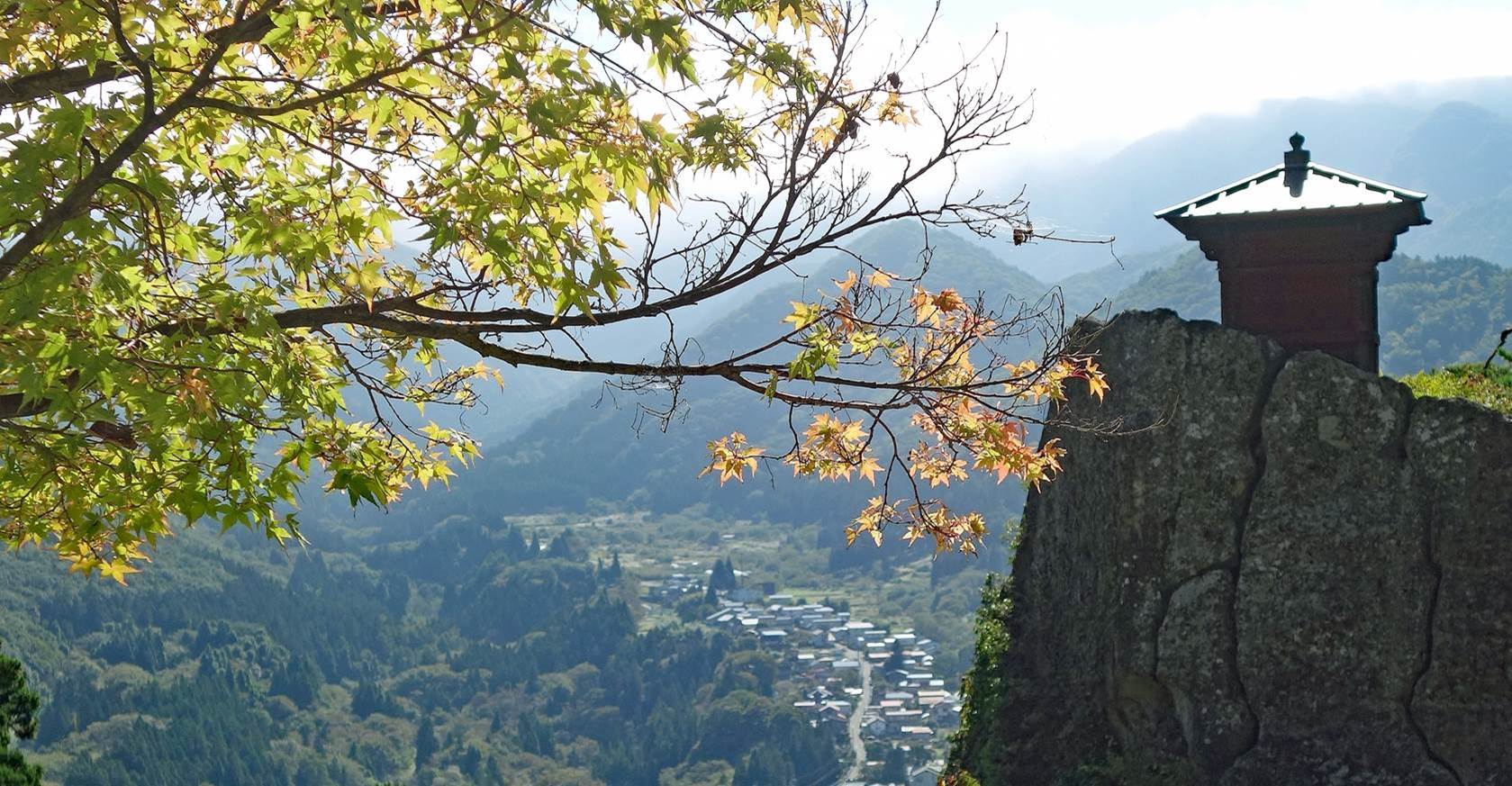
Views of the
Okunoin sanctuary at the the end of the stone staircase.
|
|
|
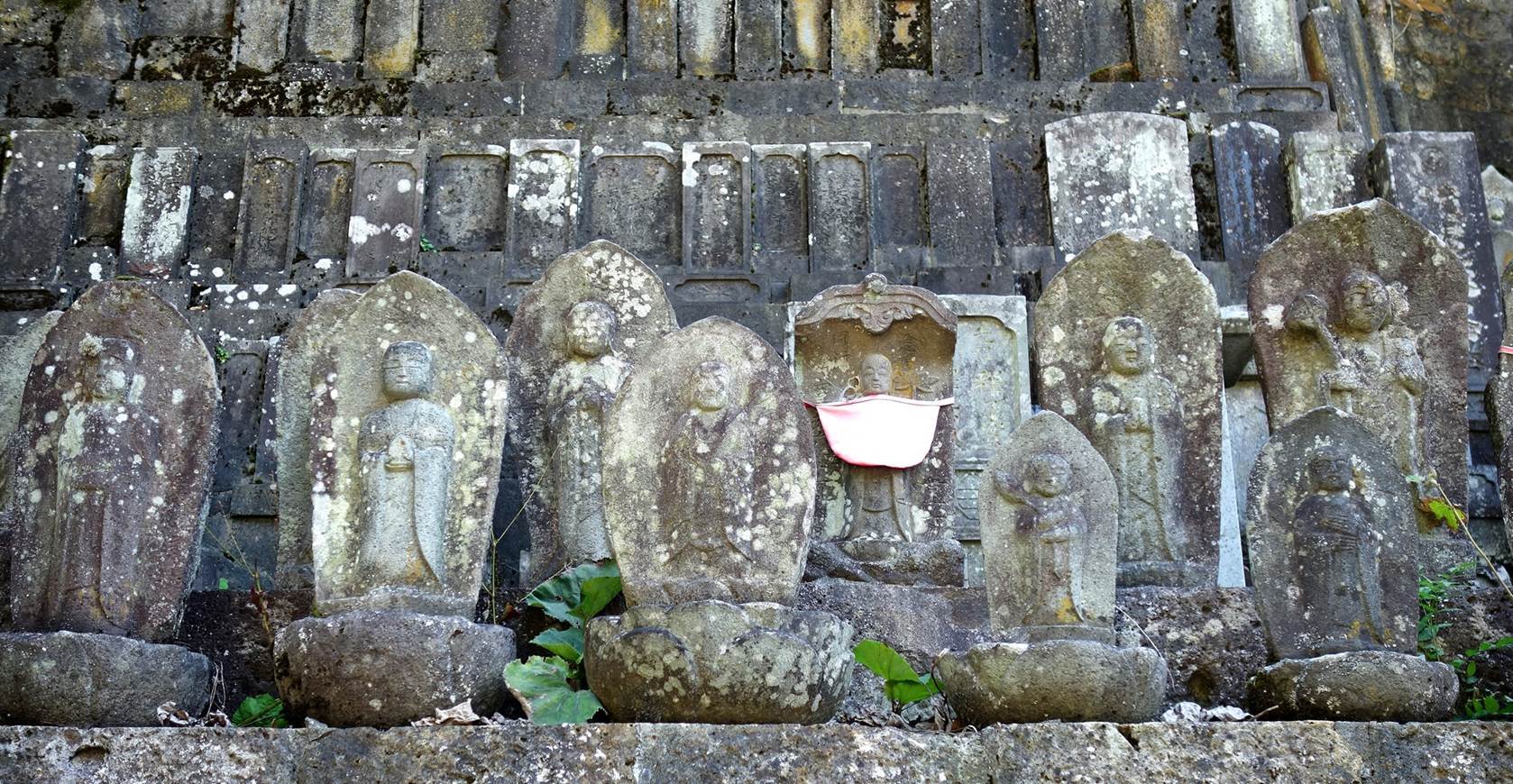
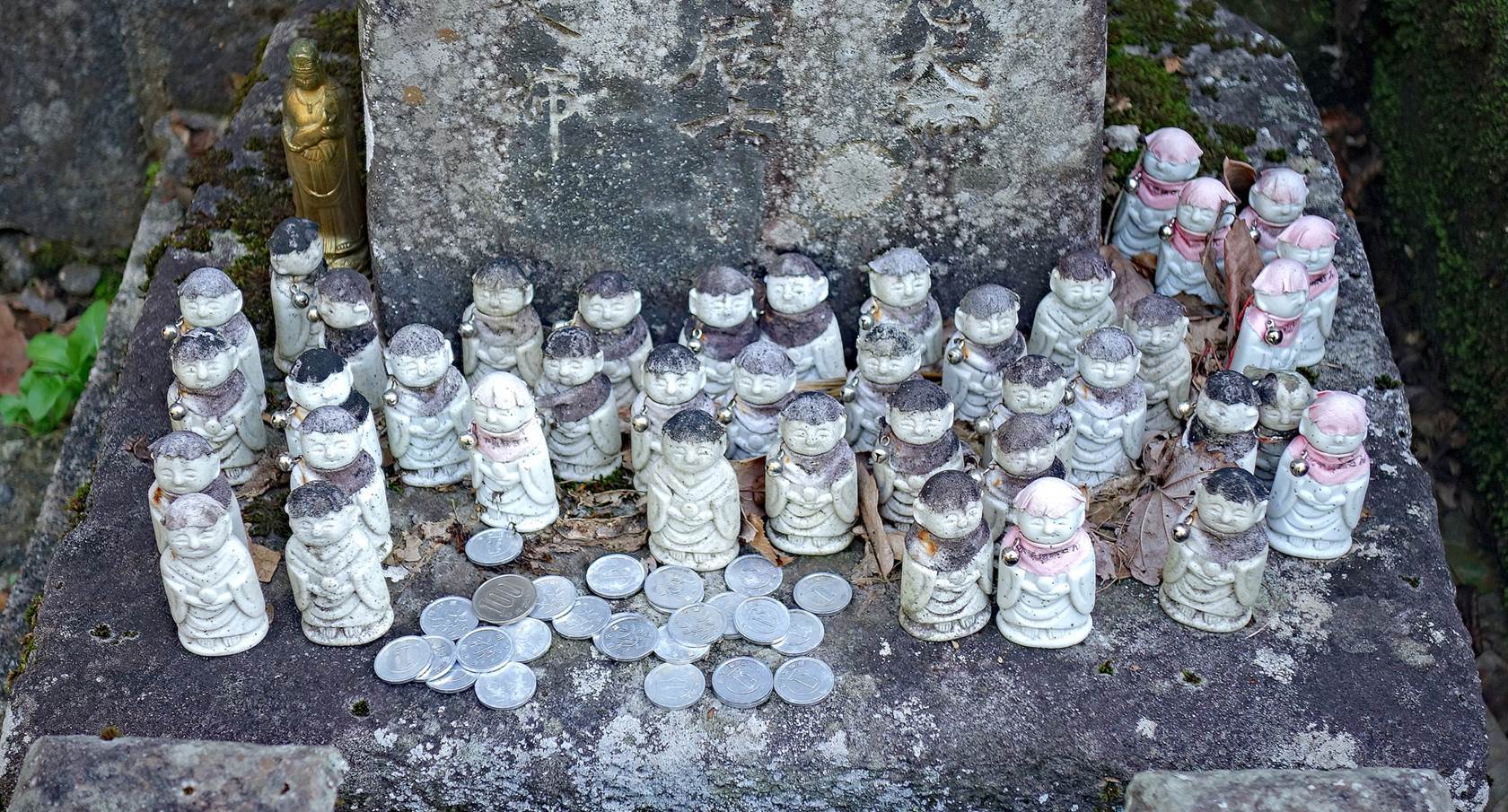
Rows of
statues in the Yamadera cemetery, a short walk east of the
Konponchudo. These statues have been brought by families who were looking
for some comfort after the death of an infant or a miscarriage. Their large
number (only a fraction of them is shown in the photos) highlights the
important spiritual role played by the temple, which attracts pilgrims from far
away in Japan.
|
|
|
|
|
|
A short hike
further, about 1km northeast of the Konponchudo, there is a mysterious place
called Tarumizu. It is an unusual ensemble of natural caves carved in white
rock cliffs textured with honeycomb-like patterns. A solitary wooden torii
stands in one of the caves, under a small Inari shrine, itself built into a
smaller cavity. This site may have been, and may well still be, a training
ground for Shugendo practitioners known as yamabushi.
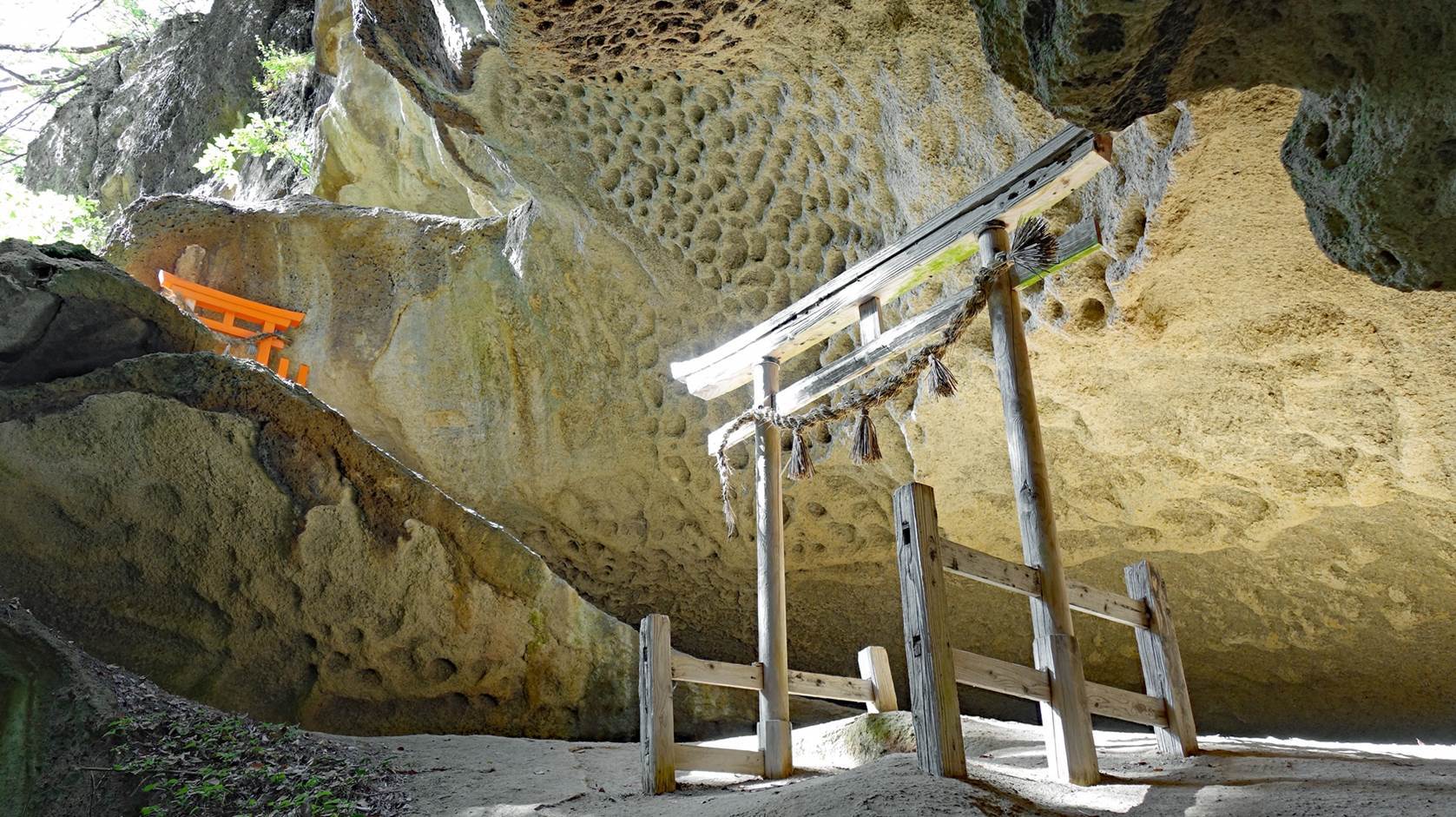
|
|
|
|
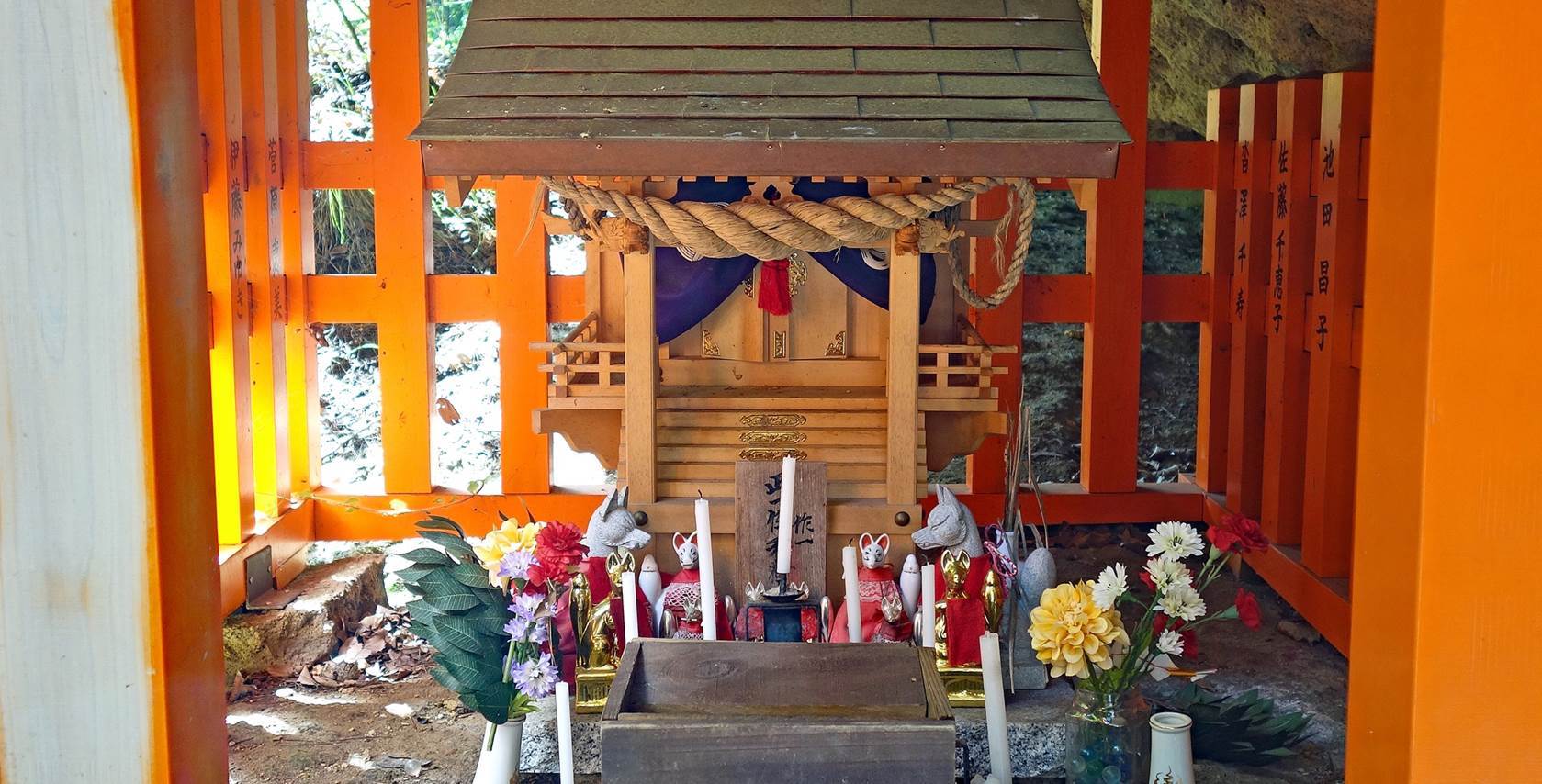
|
|
|
|
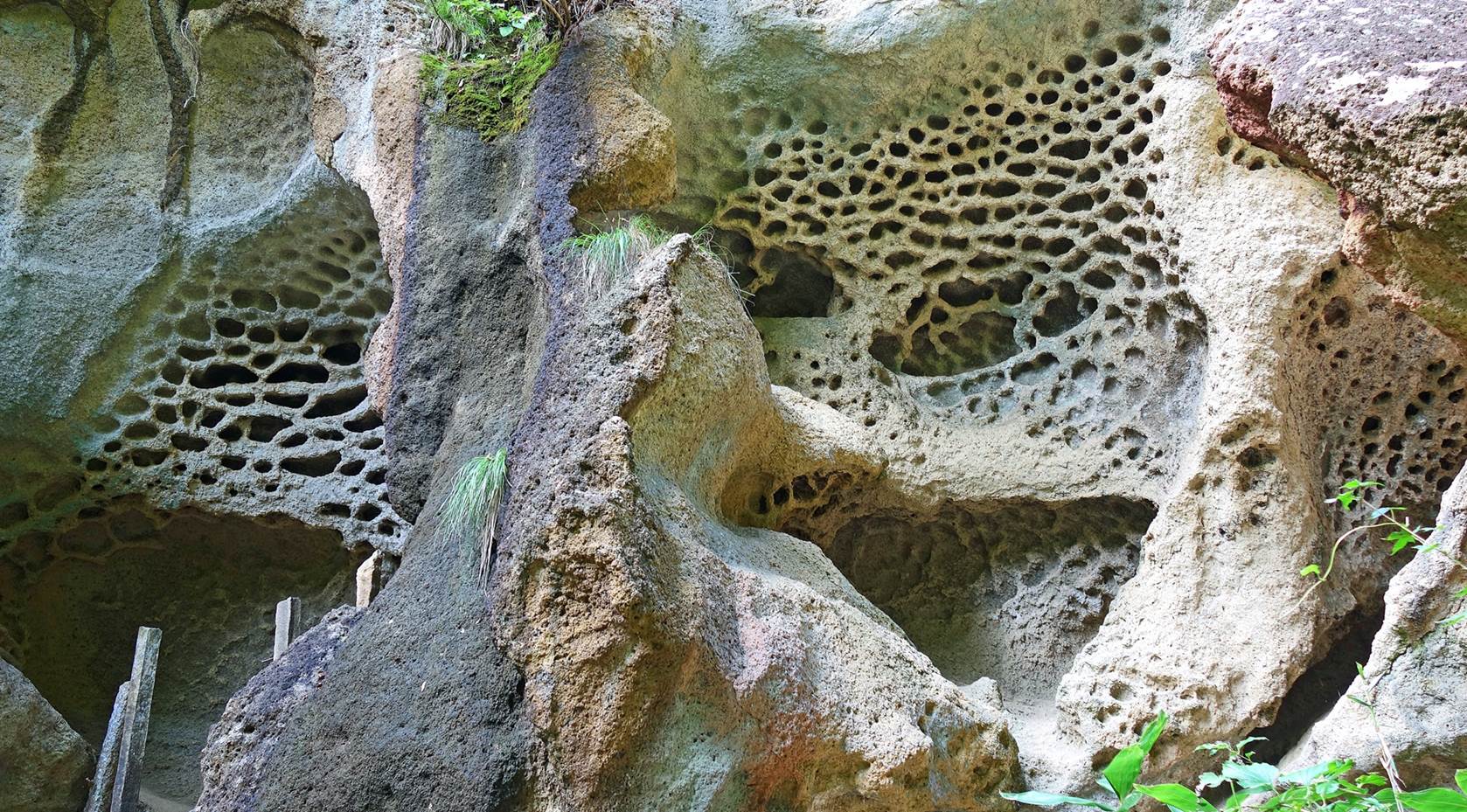
Sendai
Sendai is the
capital of the Miyagi prefecture. With a population of just over one million,
it is the 12th largest city in Japan. Its history as a city began when the
Sendai domain was founded at the beginning of the Edo period. Date Masamune
(1567-1636) was then granted this domain. He immediately started the
construction of both the Sendai castle on Mount Aoba (Aoba-yama) and the
surrounding castle town. The Date clan ruled the Sendai domain from this castle
throughout the entire Edo period until the Meiji restauration in 1868. Much of
the historic center of Sendai, including the castle, was destroyed in July 1945
during the bombing of the city.
Equestrian
statue of Date Masamune on Mount Aoba.
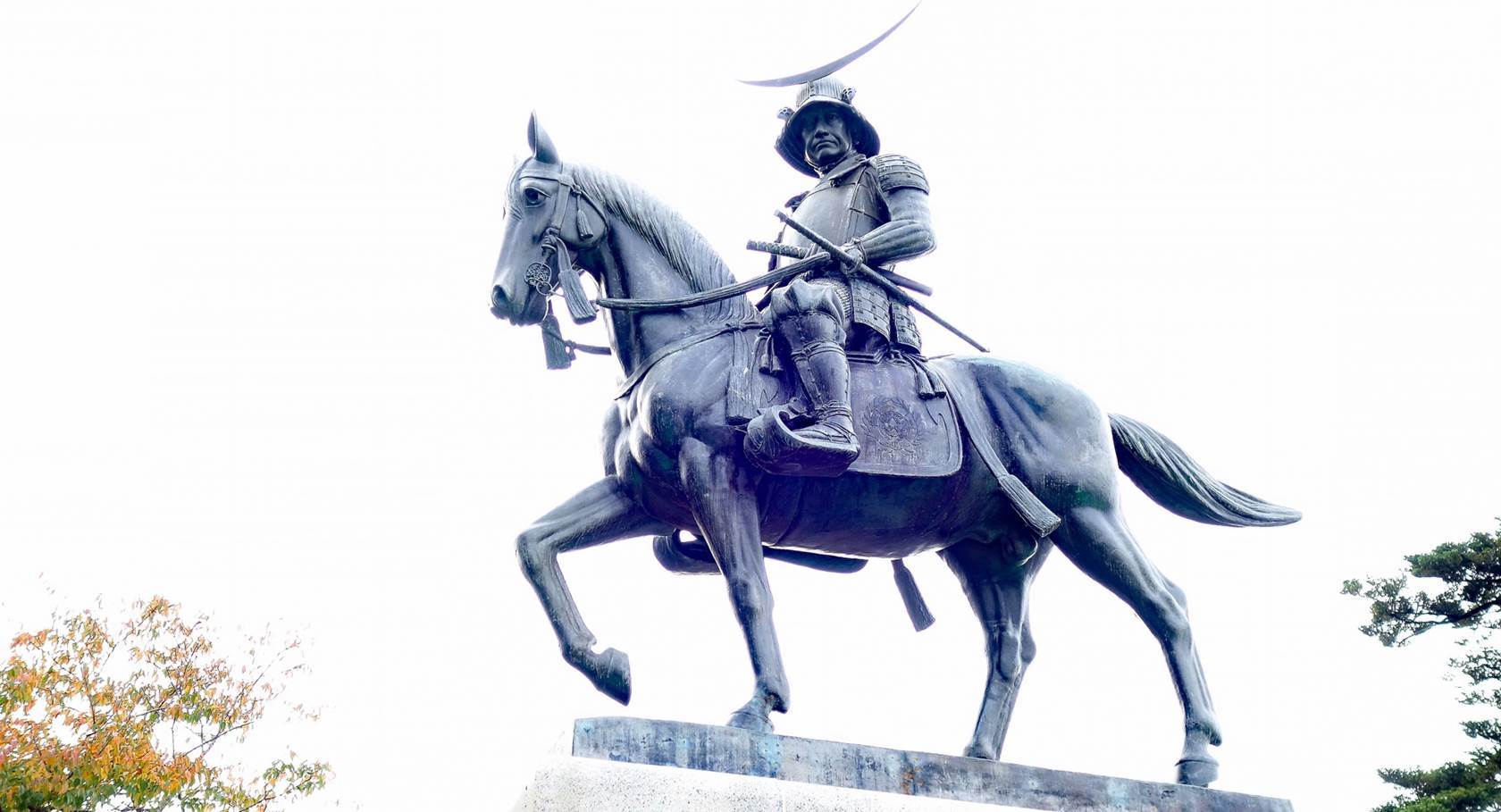
View of
Sendai from Mount Aoba.
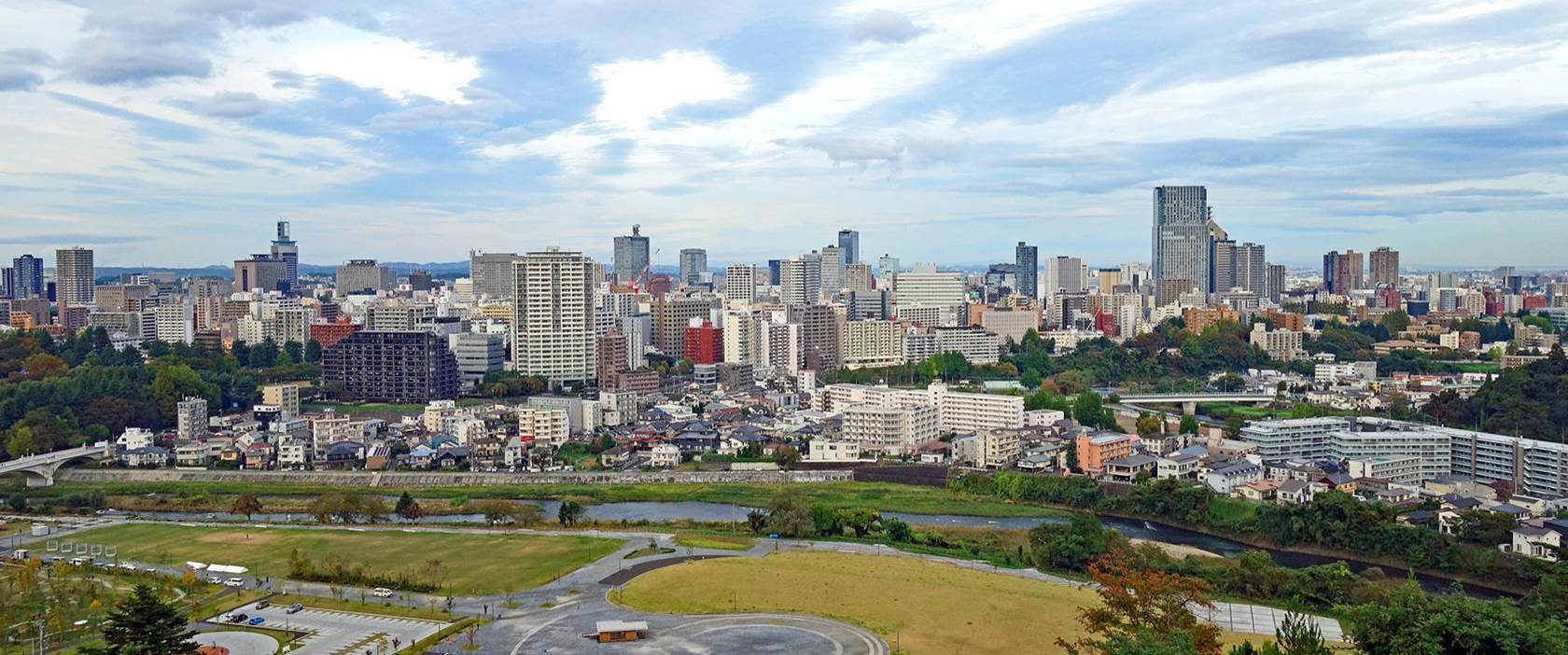
The Zuihoden,
the mausoleum of Date Masamune.
The original
mausoleum, built one year after the death of Masamune, was destroyed during the
bombing of July 1945. The current mausoleum is a near-exact replica built in
1979. Designed in the ornate style of the Momoyama period (1573-1603), it
features an exuberant combination of intricate shapes, vibrant colors, gold
leaf, and beautiful decorations.
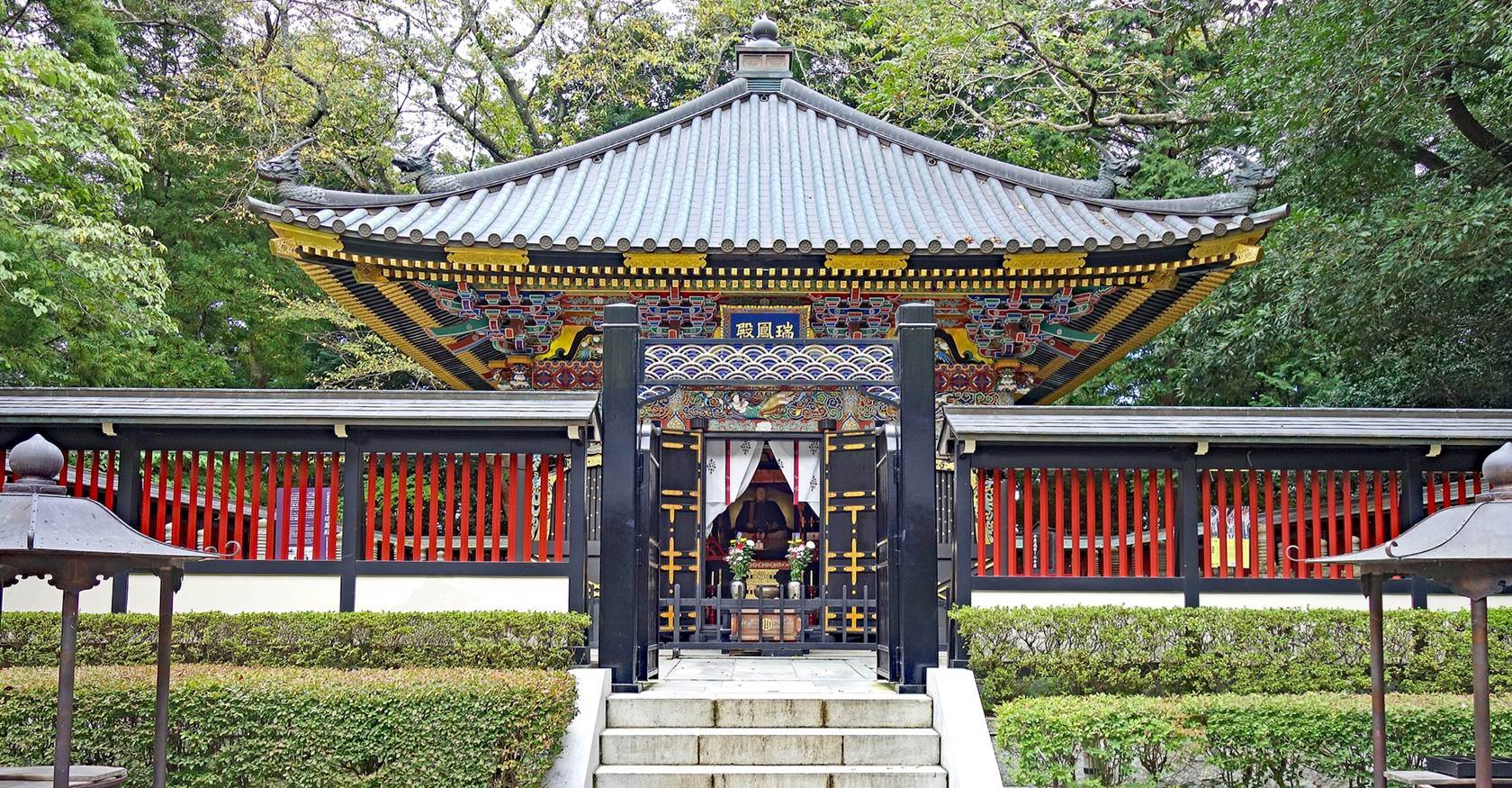
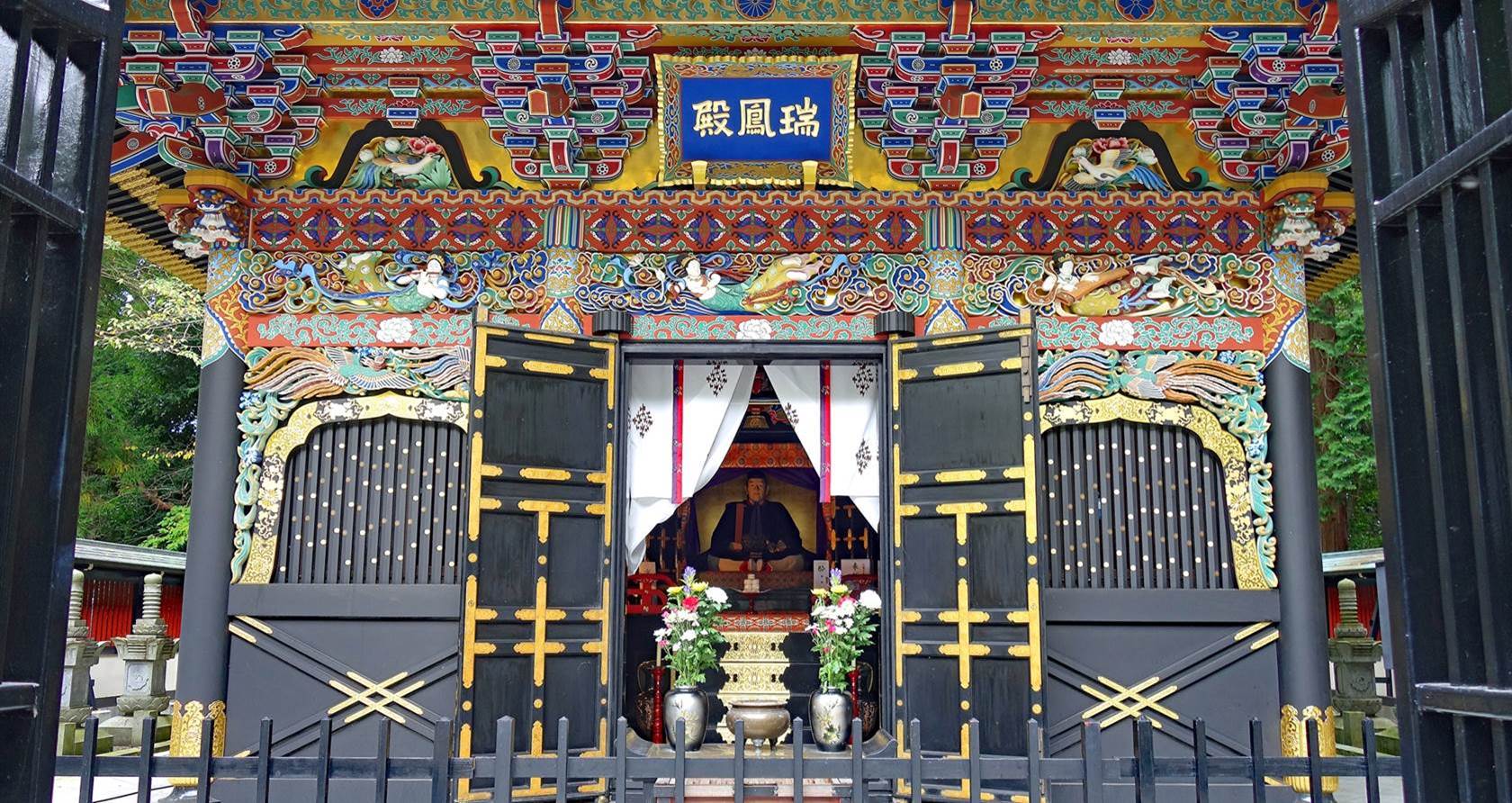
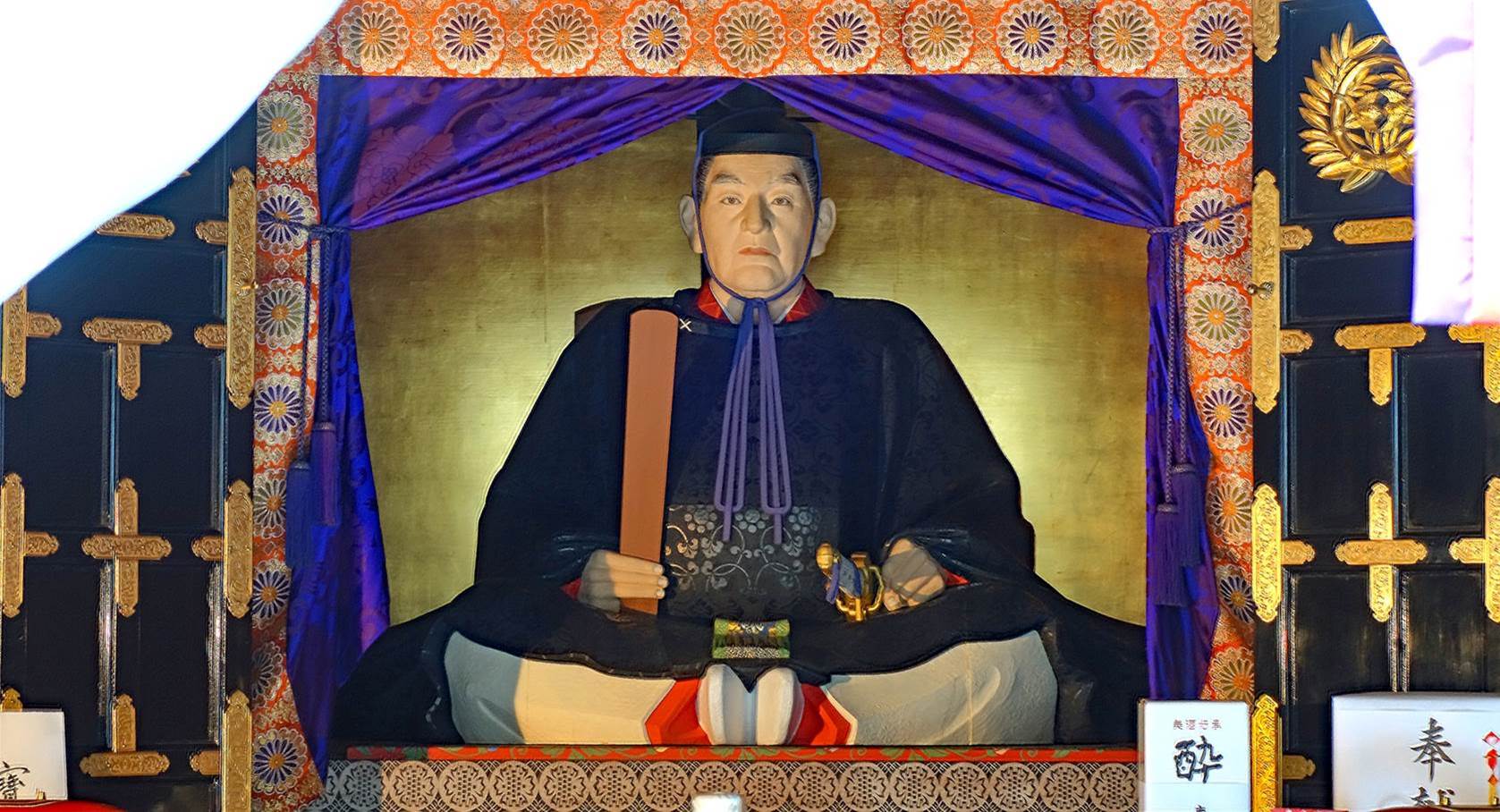
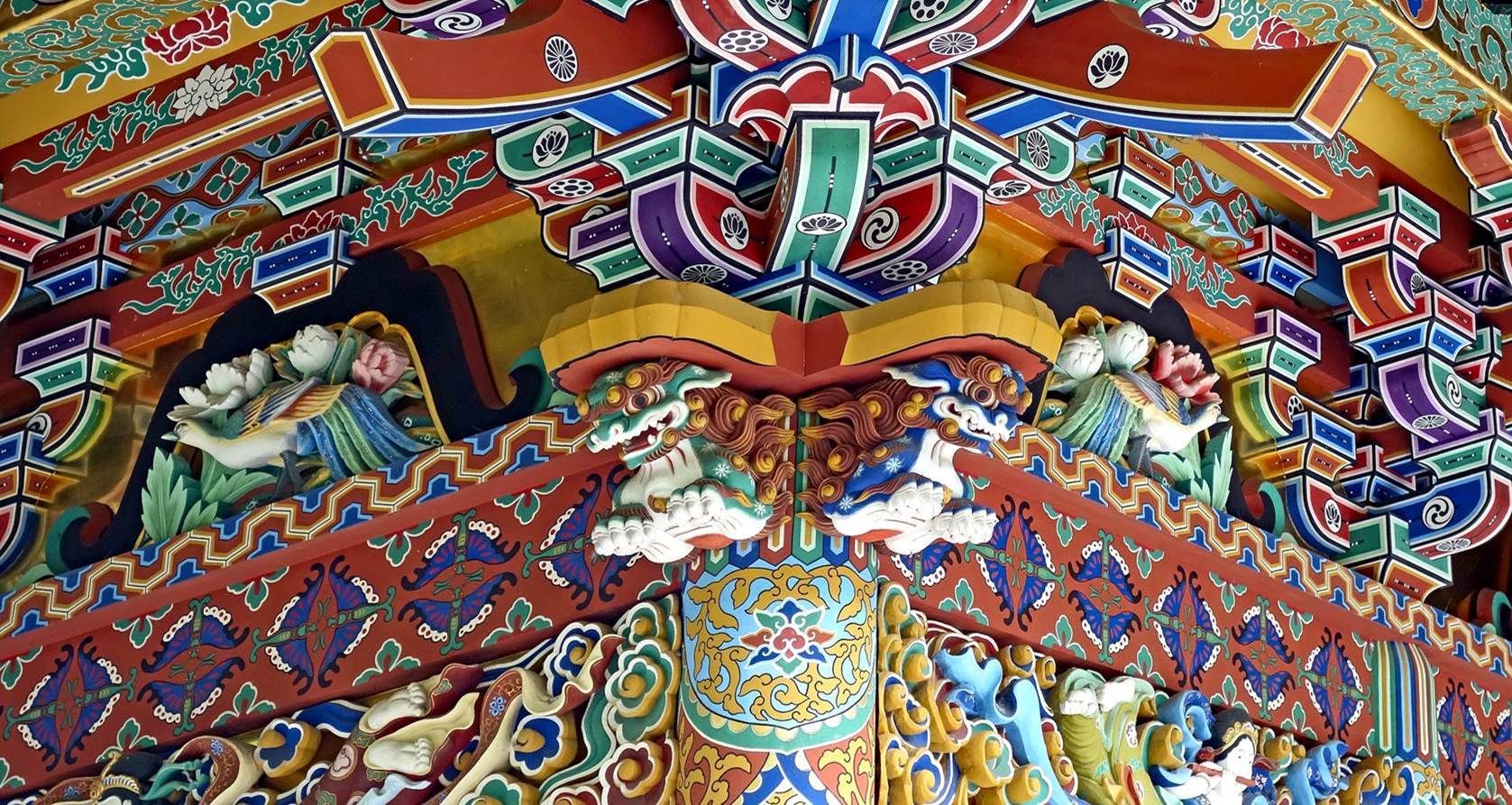
Osaki
Hachimangu.
This Shinto
shrine was built in 1607 as the guardian of the Sendai castle and the city.
First
building encountered on the shrine's grounds. Called the Nagatoko, it forms a
kind of gate before reaching the main building formed by the connected haiden
(the hall of worship) and honden (the hall where the gods reside).
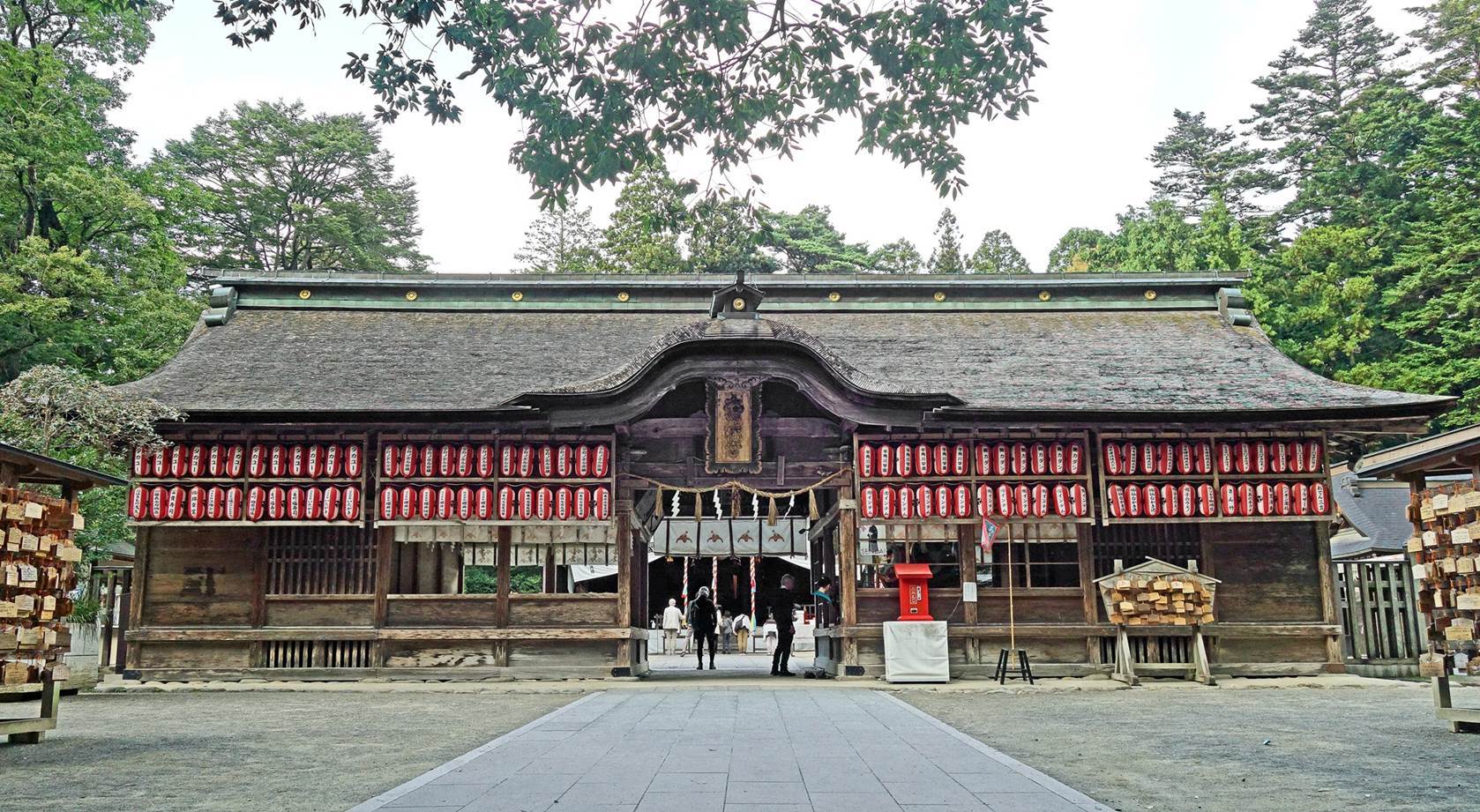
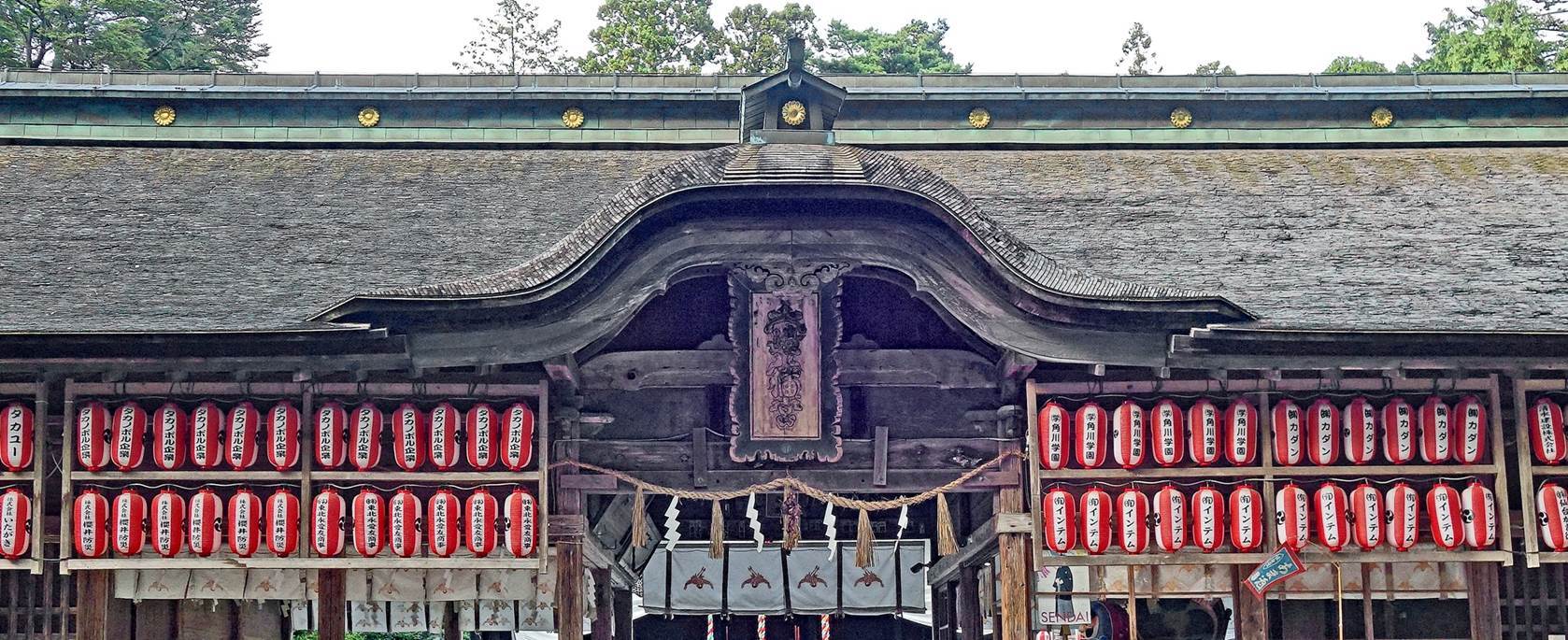
Facade of the
haiden, covered in black lacquer in its lower part and decorated with a
Momoyama-style combination of brilliant colors and gold leaf in its upper part.
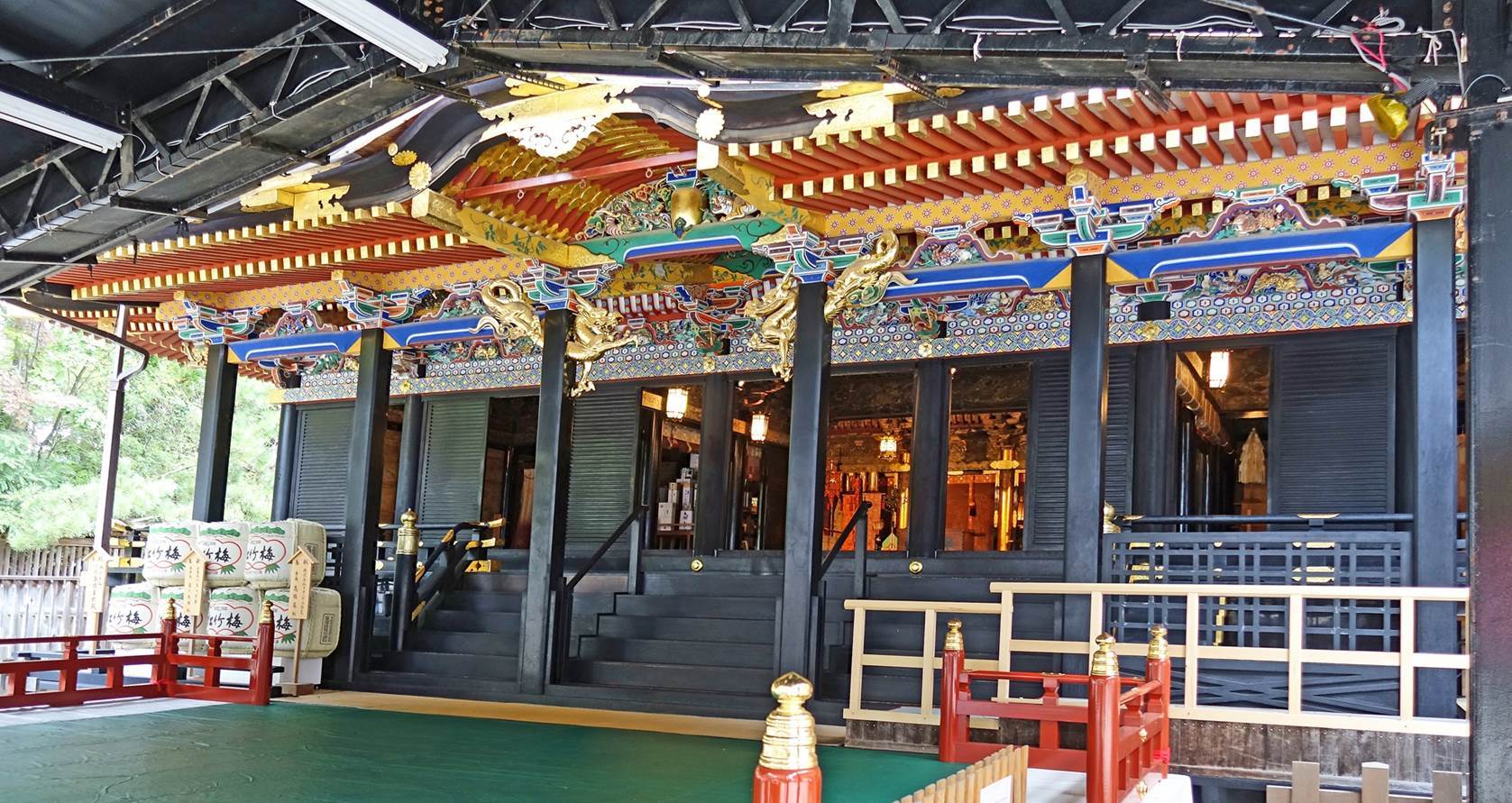
Close-up on
the decorations of the upper central part of the facade of the haiden.
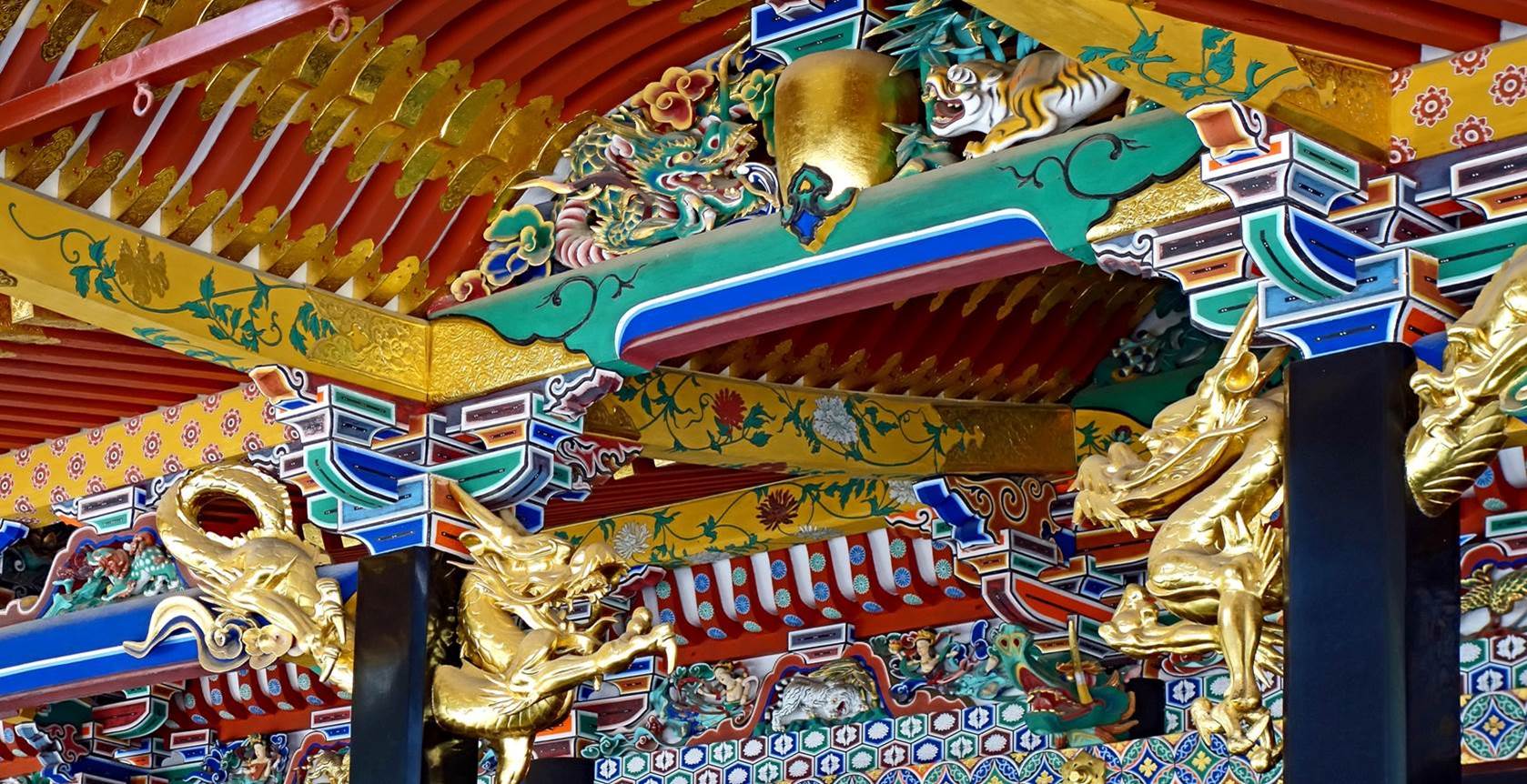
Rinno-ji.
This Buddhist
temple was established in 1441 in Yanagawa by Date Mochimune as the temple of
the Date clan. It changed sites several times with the moves of the clan,
before finally settling down in Sendai in 1602 at a location north of the
castle. The patronage of the Date clan ceased at the Meiji restoration. After a
fire destroyed most of the buildings in 1876, some were rebuilt in 1915 and a
garden was added. More buildings were added later, including the three-storied
pagoda.
The sanmon.
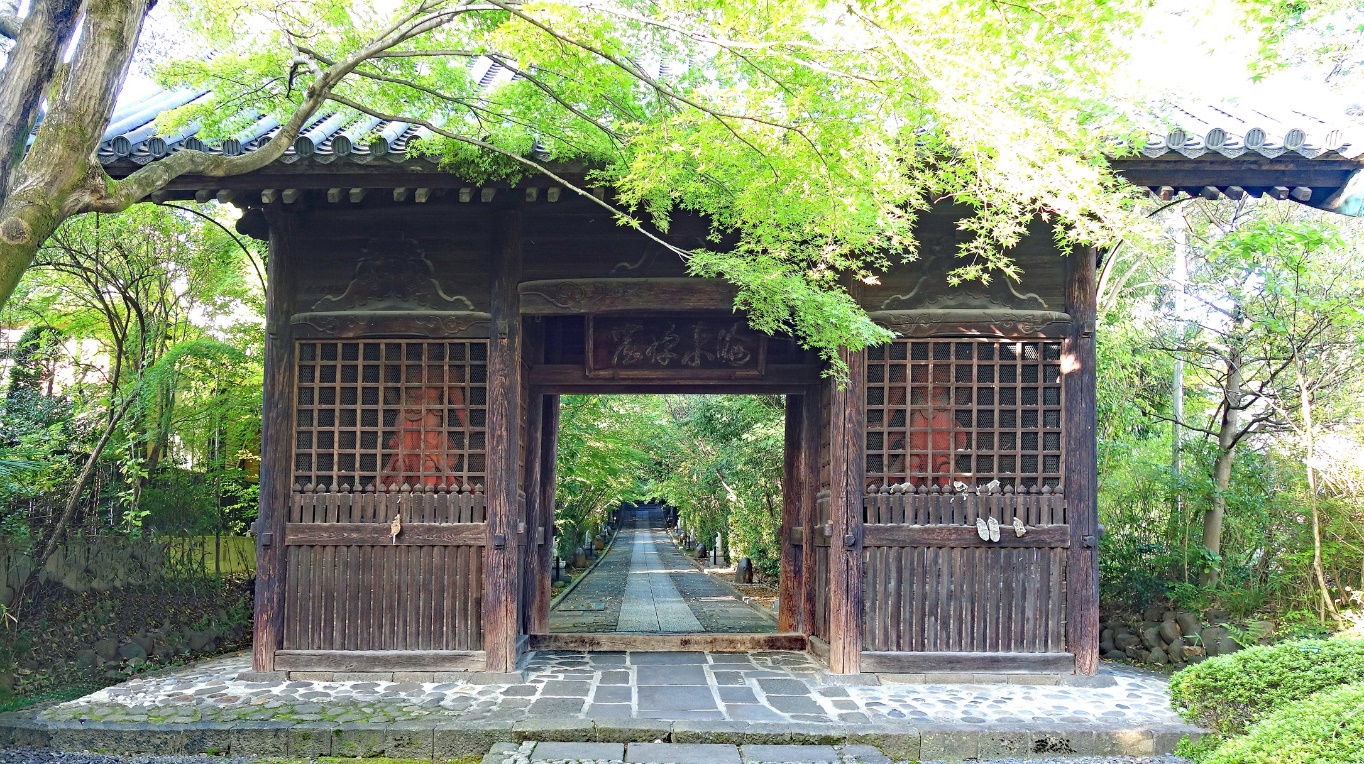
Main prayer
hall.
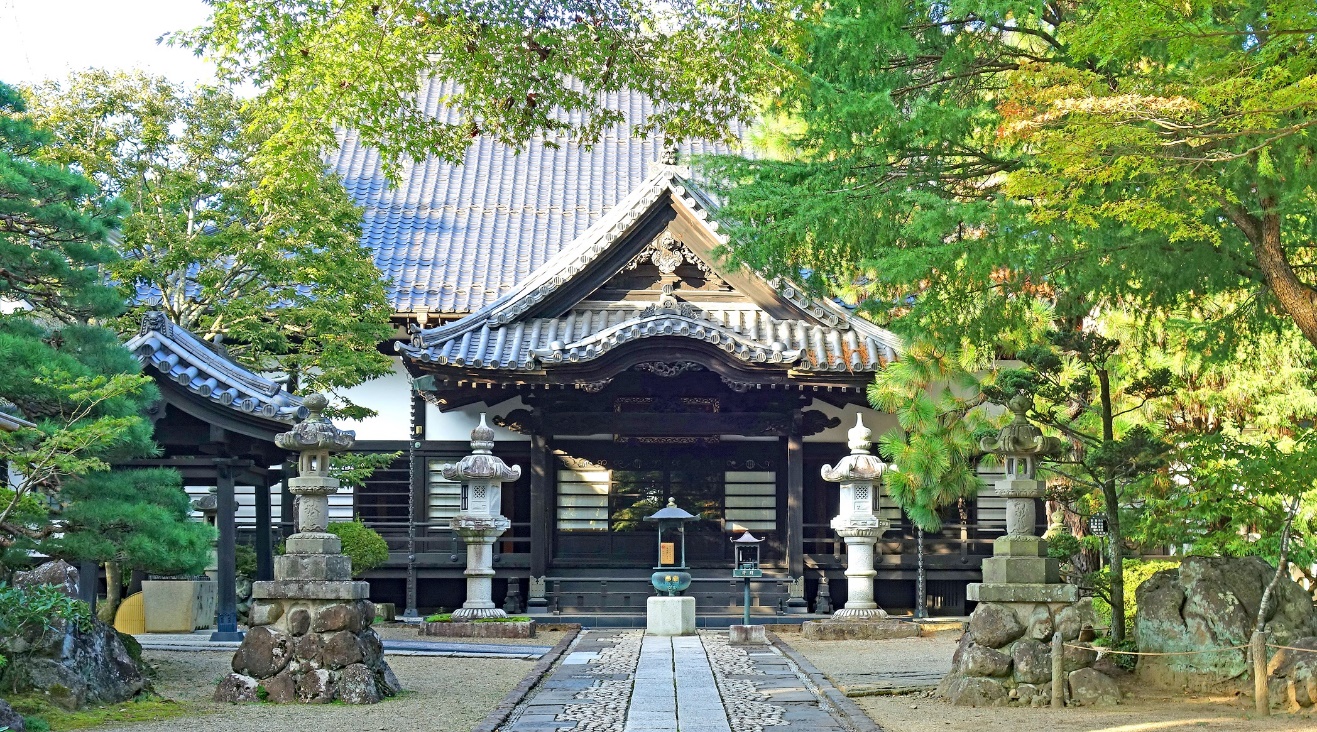
Belfry and
pagoda.
|
|
|
Pyramid of
stelae adjacent to the temple's cemetery.
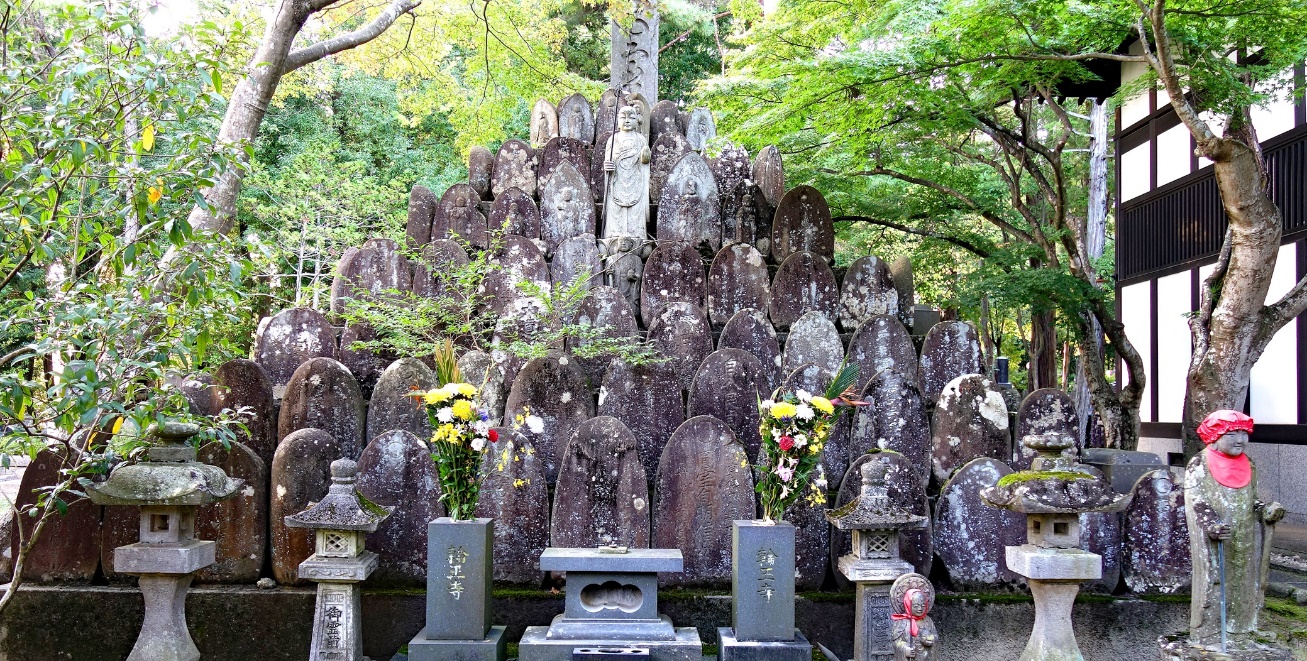
Dry garden in
a courtyard.
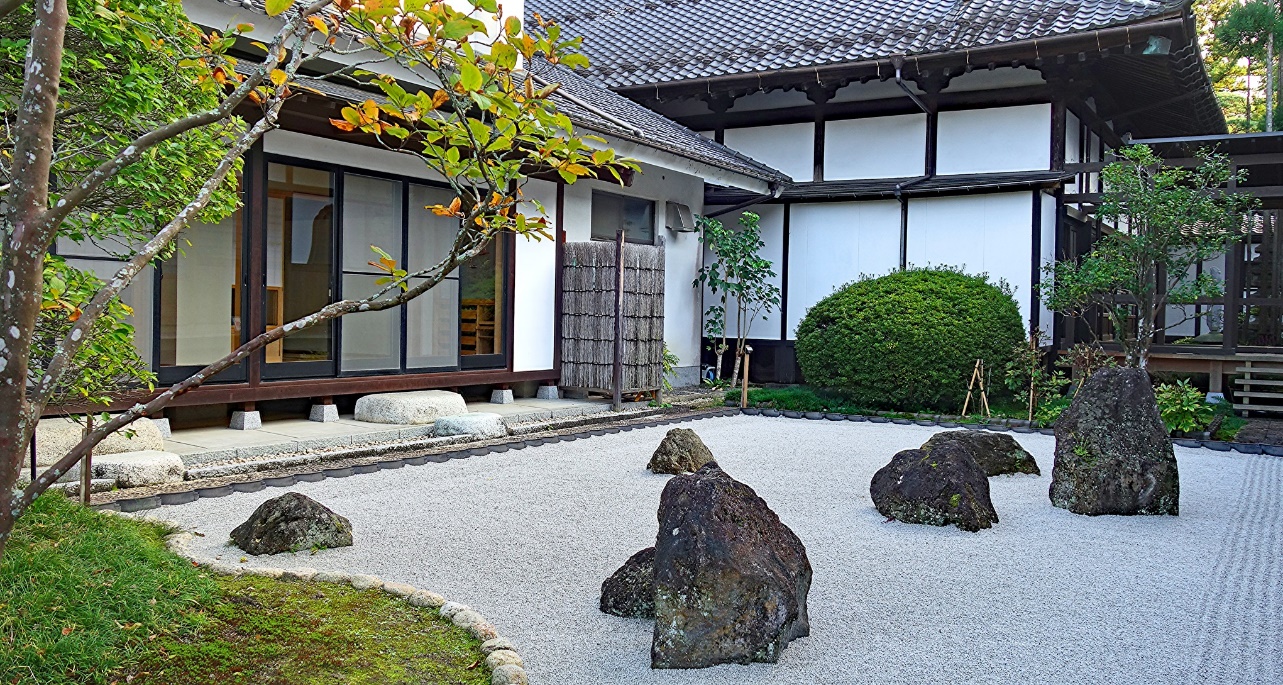
Garden with
ponds in the back of the temple.
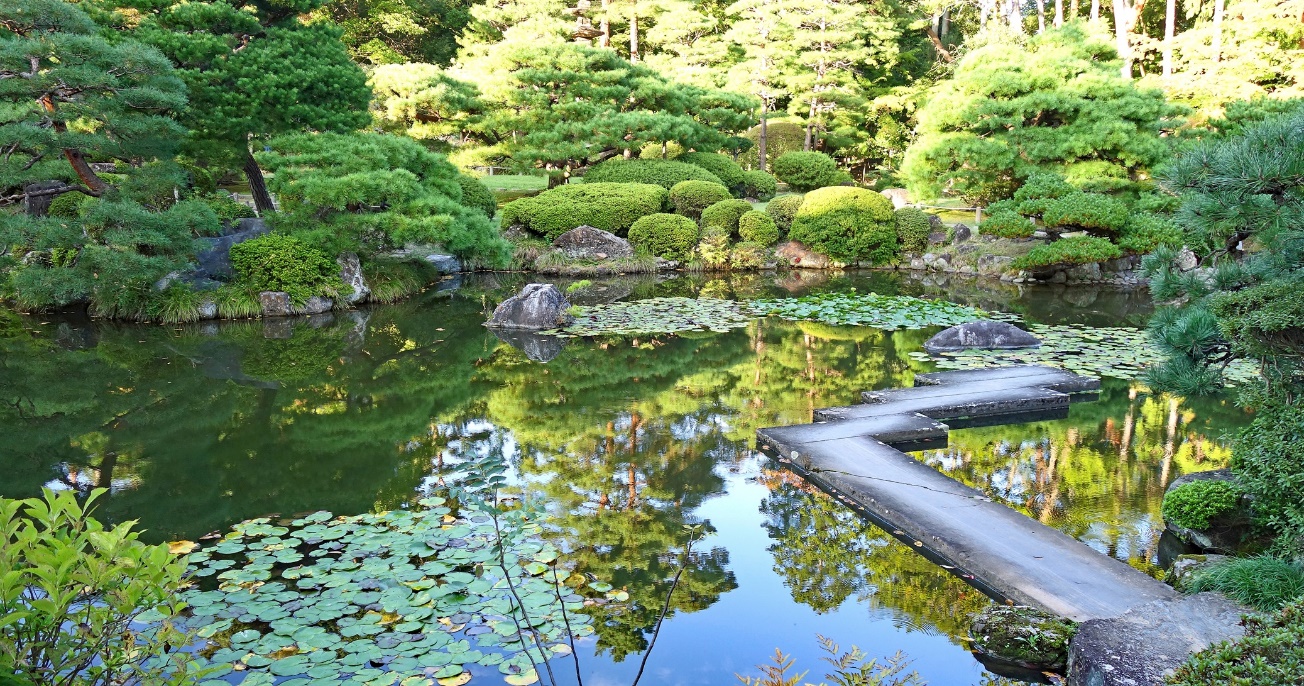
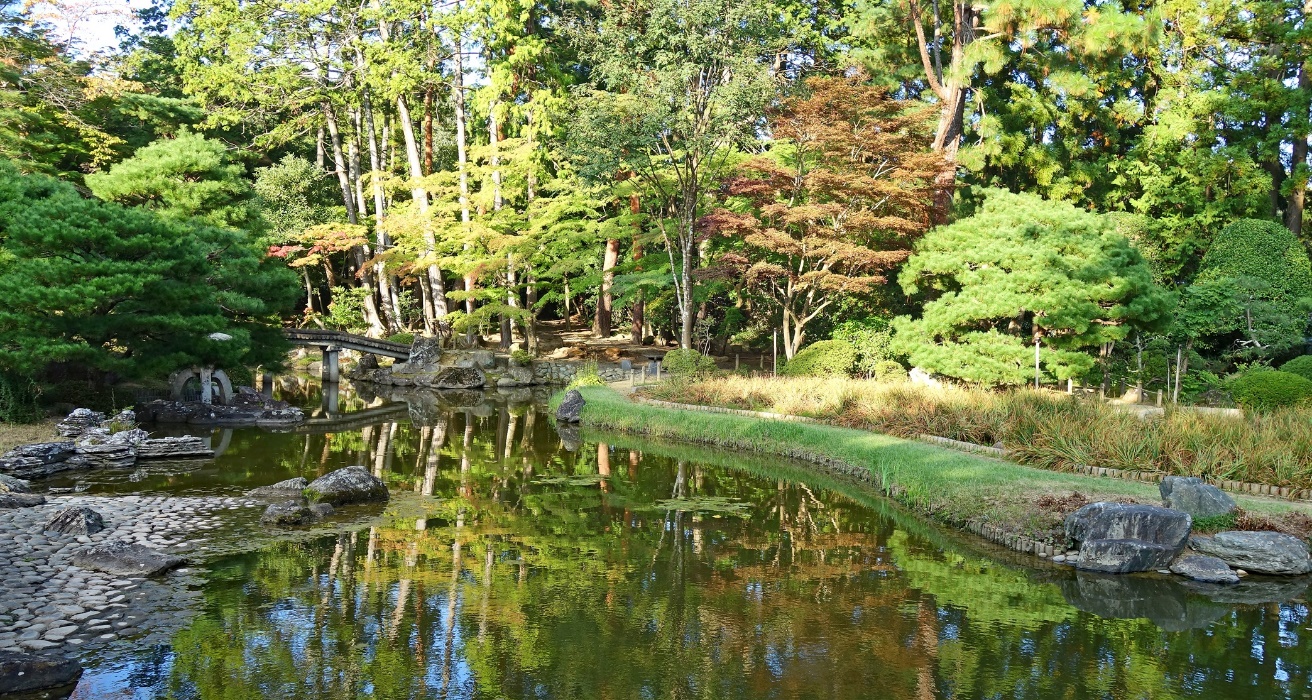
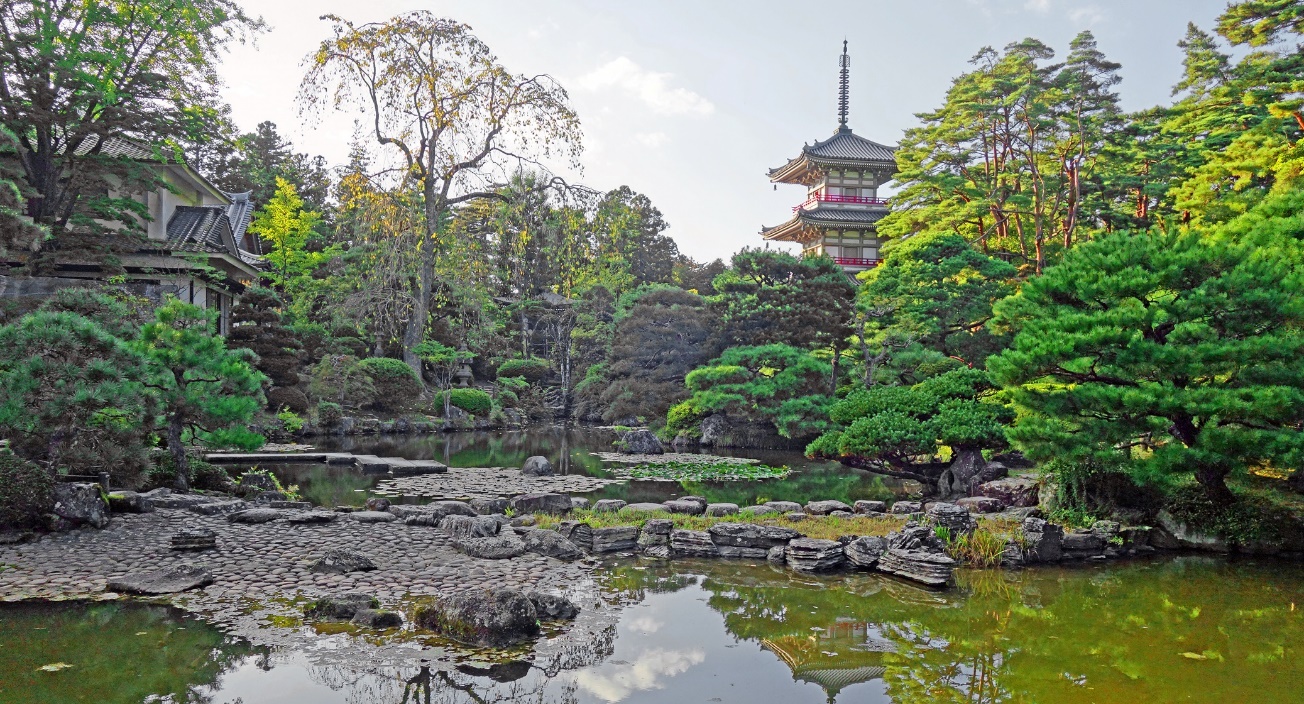
Hiraizumi
Hiraizumi is
located about 85km north of Sendai. Today, it is a small, quiet town. But in
the late Heian period, from 1089 to 1189, three generations of the Fujiwara
clan, using gold extracted from their mines in Mutsu, made Hiraizumi a wealthy
city of around 100,000 people, rivaling Kyoto in splendor and culture. They
attempted to create a kind of Buddhist utopia on earth with large temples and
monasteries. Although this wealth attracted the envy of other feudal lords, the
end of Hiraizumu's splendor was triggered by a family issue in Kamakura. There,
Minamoto Yoshitsune, who won many battles, became
considered the greatest warrior of his time. His older half-brother Minamoto
Yoritomo, the founder and first shogun of the Kamakura shogunate, became
angered by this fame. Yoshitsune fled Kamakura and took refuge in Hiraizumi. In
retaliation, Yoritomo attacked the Fujiwara domain, won, and destroyed
Hiraizumi.
Chuson-ji
temple.
Founded in
850, Chuson-ji was considerably expanded in the 12th century by the Fujiwara
family. Today it forms a large complex comprising many buildings scattered
among Japanese cedars planted by the Date family of Sendai. But only two of
them are original constructions from the 12th century. One is the magnificent
Konjikido completed in 1124. It contains 11 statues, including one of Amida
Nyorai (the Buddha of Infinite Light) and one of Kannon. Almost all of its
surfaces, including those of the statues, are gilded with gold leaf. To ensure
its long-term protection, the Konjikido was encased in a huge concrete building
in 1963. Photos are not allowed.
Left: Statue
marking the entrance to the Chuson-ji compound. Right: The Benkeido, one of the
first prayer halls seen after entering the compound. It is dedicated to the god
of war and contains a wooden statue of a warrior named Benkei who remained
loyal to Minamoto Yoshitsune.
|
|
|
The
Yakushido, believed to bring good fortune to the eyes.
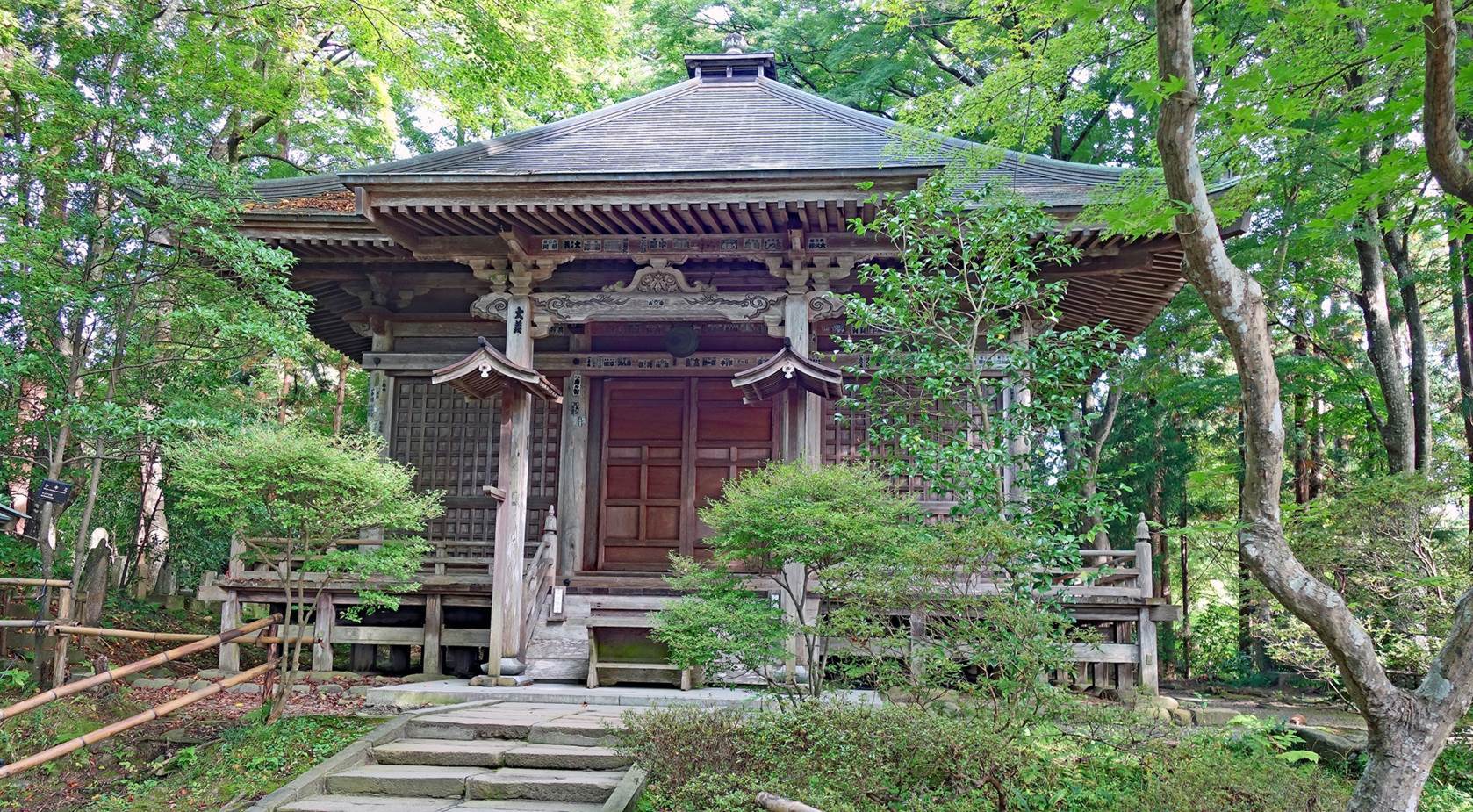
Interior of
the Hondo (the main hall of Chuson-ji).
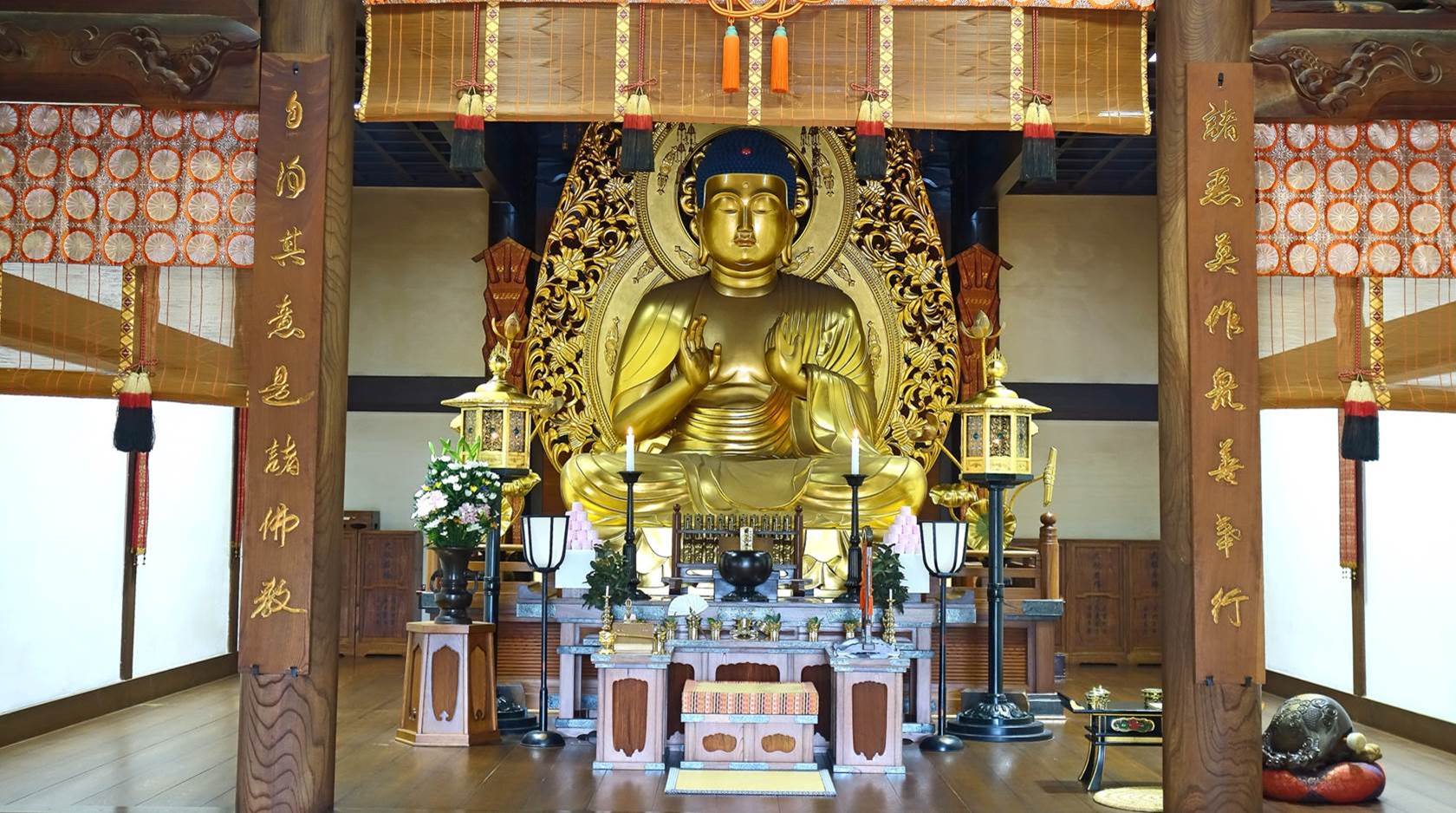
Statues
inside the Dainichido.
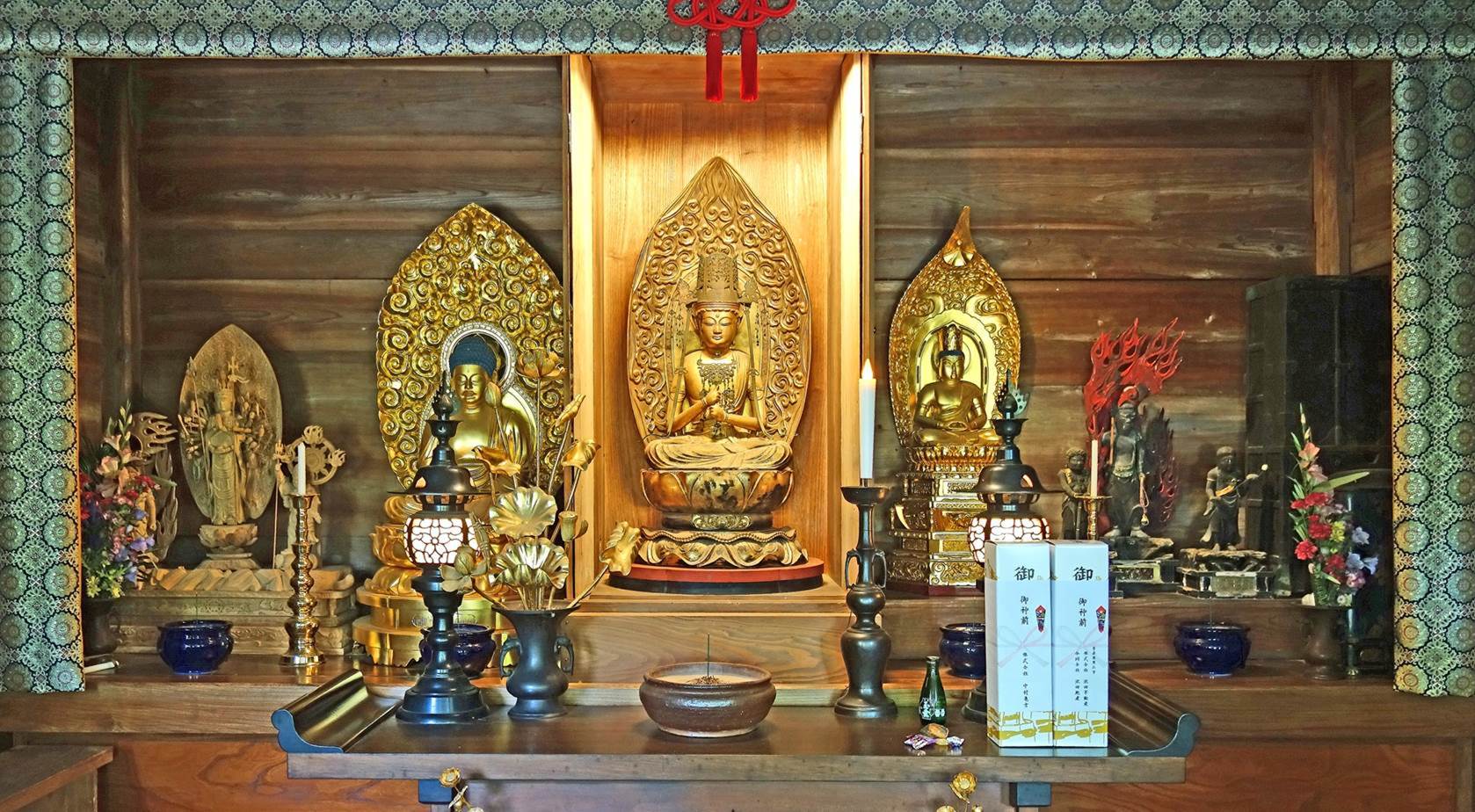
The
Daichojuin.
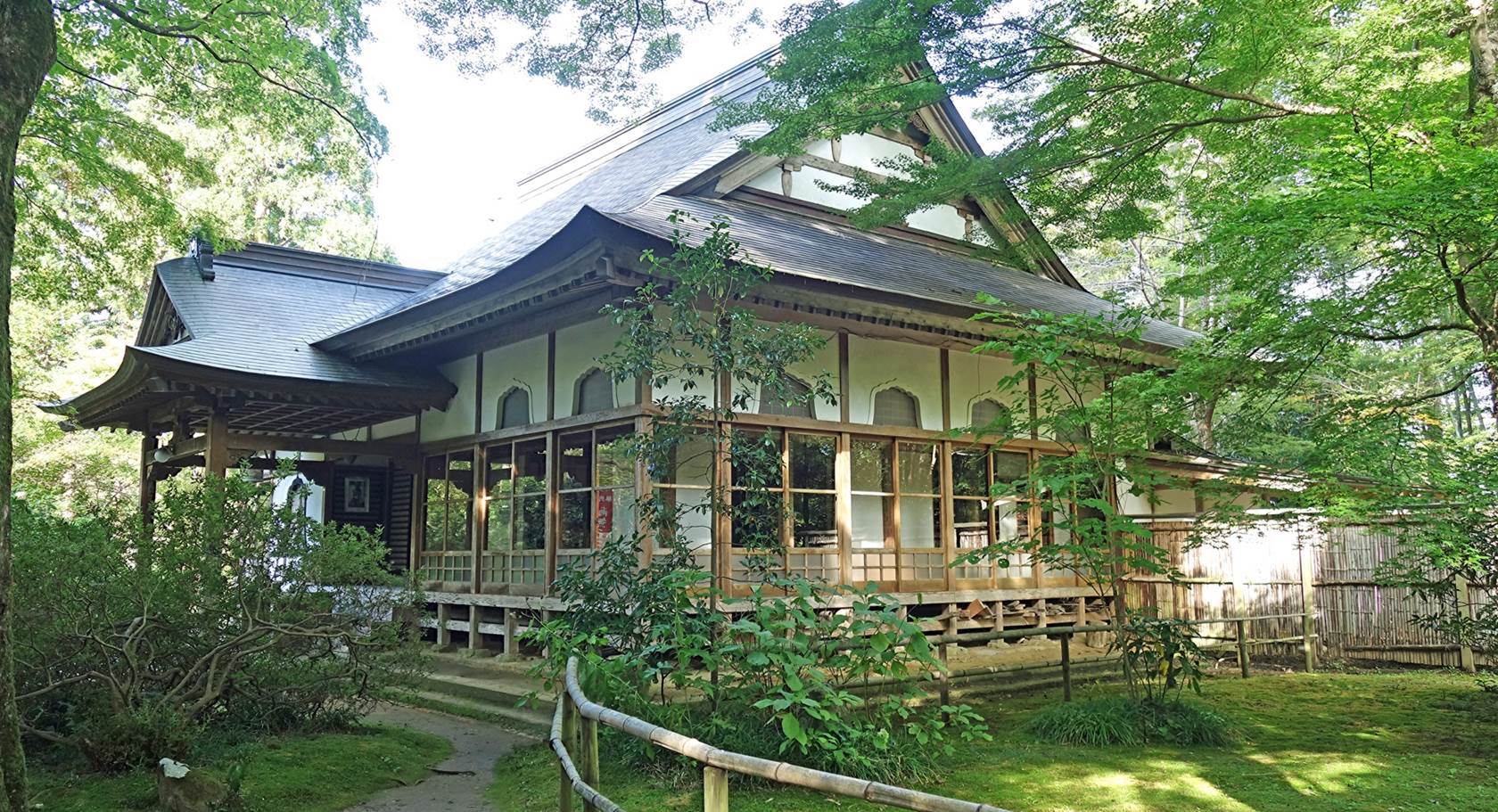
Interiors of
the Benzaitendo (left) and the Mine no Yakushido (right).
|
|
|
Motsu-ji
temple.
Like Chuson-ji,
this temple was founded around 850. Under the Fujiwara lords, it had numerous
buildings spread around a pond. None of them have survived and only a few have
been reconstructed. But its beautiful jodo teien centered around the pond
remains. (A jodo teien is a type of Buddhist temple garden aimed at replicating
the concept of Pure Land on earth.)
Basho Haiku
monument seen immediately after entering the temple grounds. It is a large
stone engraved with a poignant haiku on the impermanence of glory, written by
Basho in 1689 following his visit to the nearby memorial of Minamoto
Yoshitsune: Summer grass / It's all that's left / Of warriors' dreams.
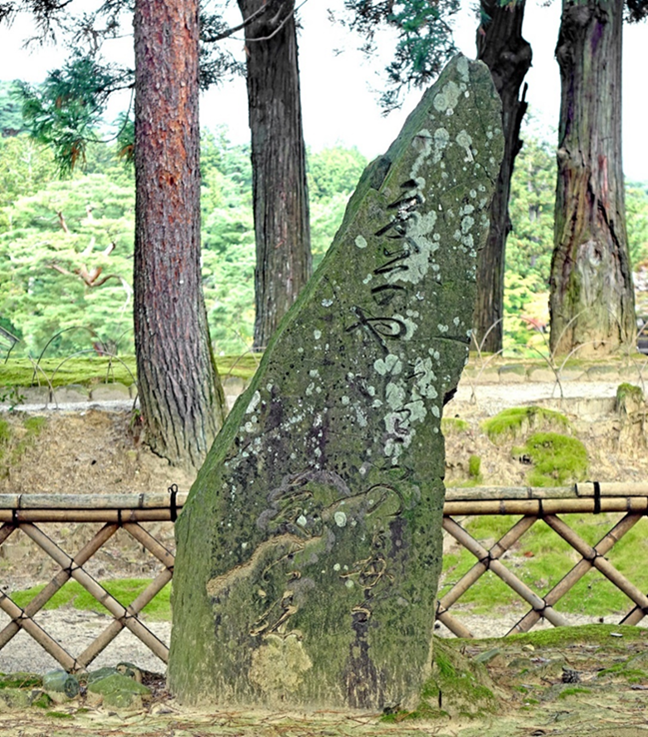
View of the
pond of the jodo teien.
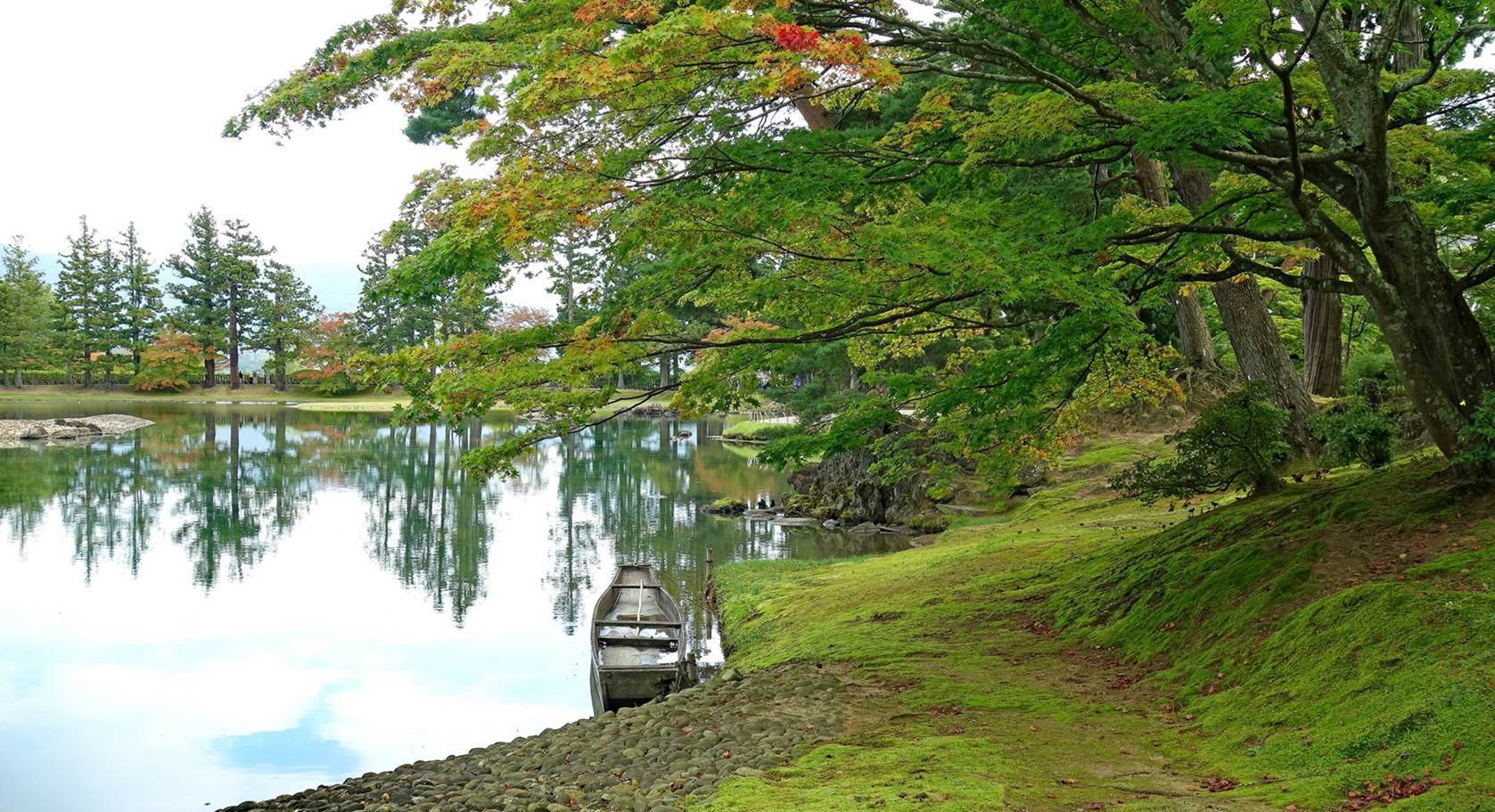
Prayer room
in the Hondo, the main hall of the temple (rebuilt in 1989), with a statue of Yakushi Nyorai (Healing Buddha) in the center and
statues of Bodhisattva on its sides.
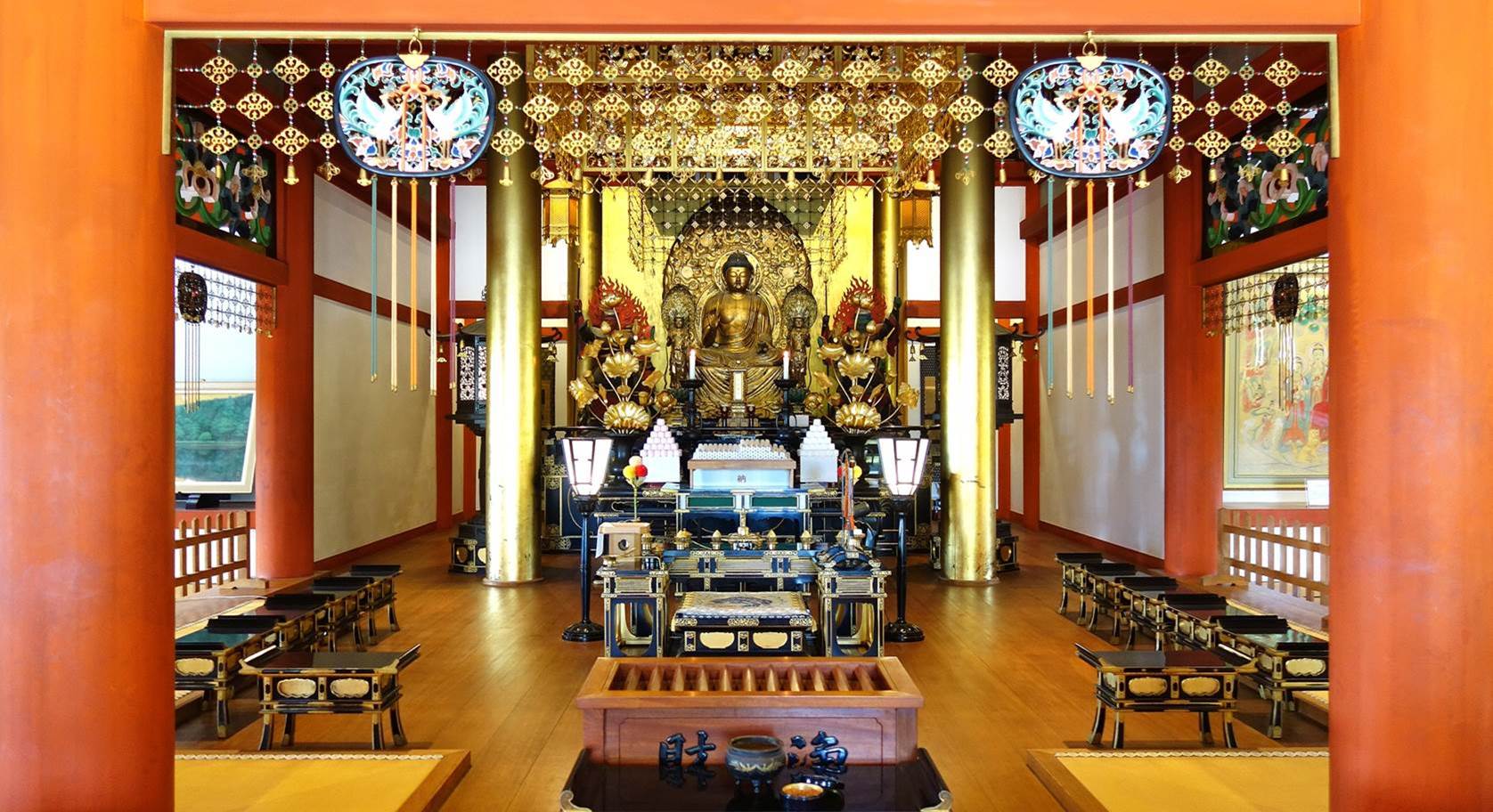
The Kaisando,
dedicated to Buddhist priest Ennin, who founded Risshaku-ji in Yamadera and
both Chuson-ji and Motsu-ji in Hiraizumi.
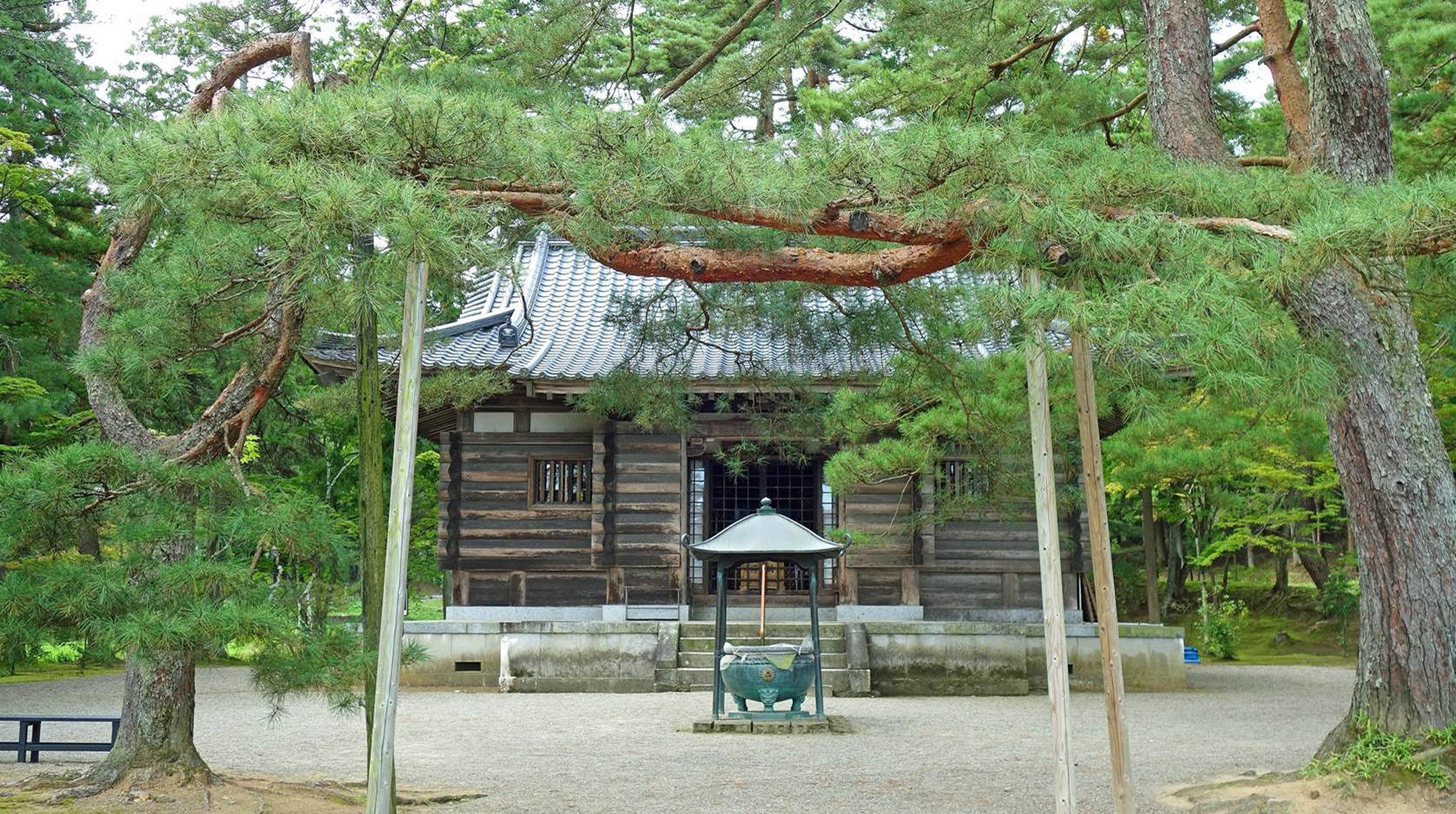
Statue of
Jizo Bosatsu, the guadian deity of children and travelers.
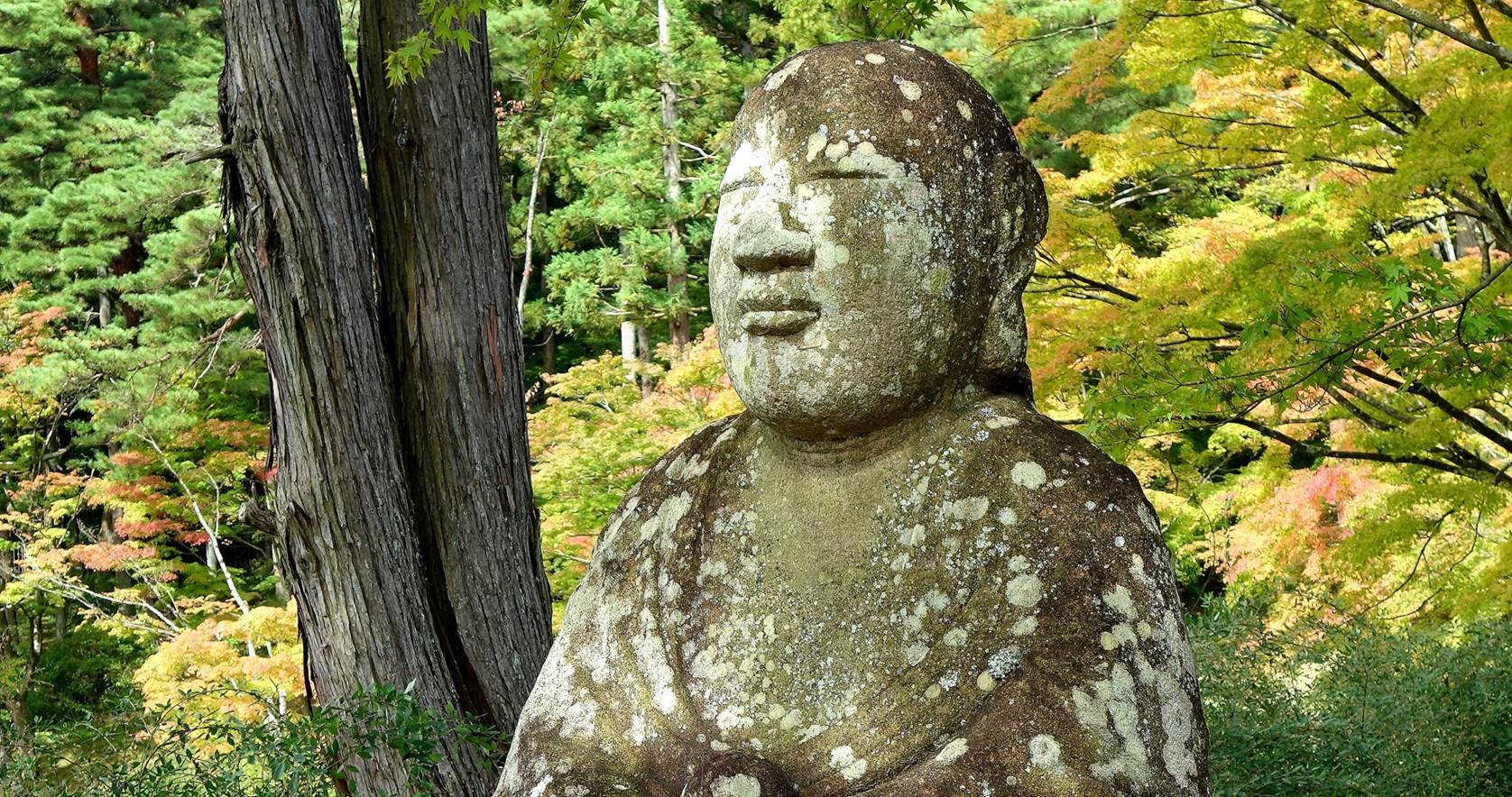
Jogyodo
(circumambulation hall) rebuilt in 1732.
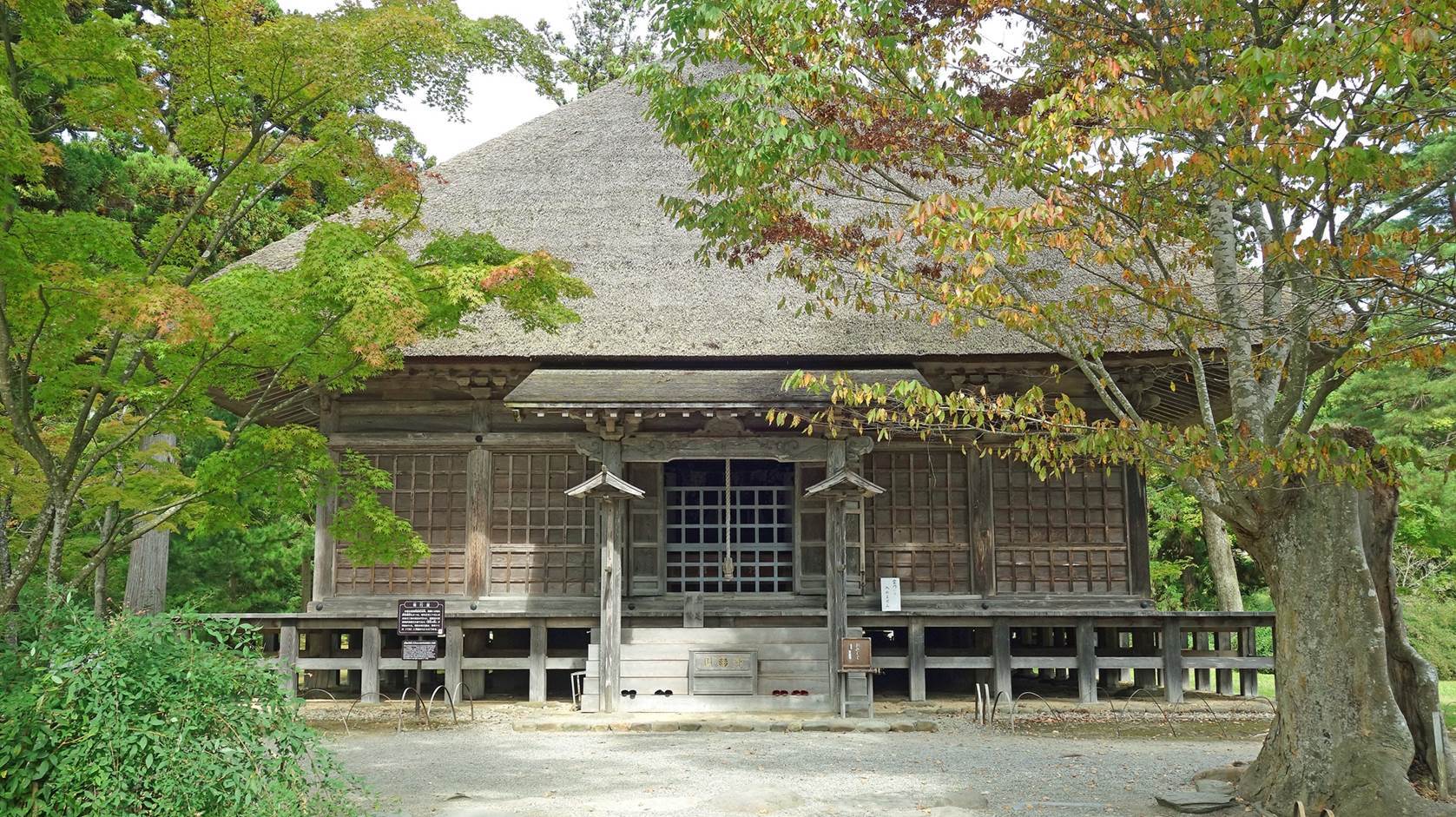
Statue of
Amida Nyorai (Buddha of Infinite Light) in the Jogyodo.
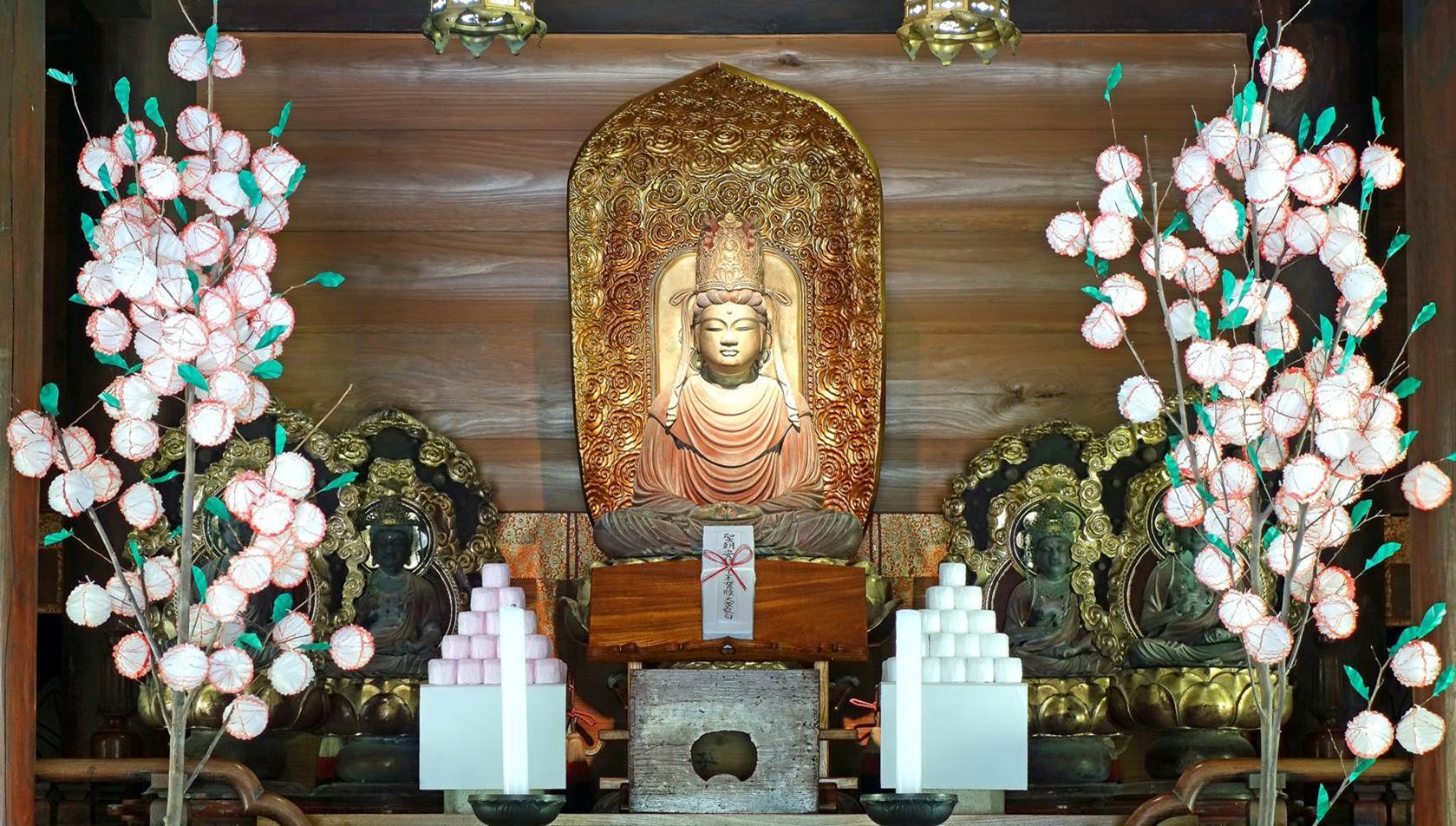
Matsushima
Located some
20km northeast of Sendai, Matsushima faces a famous bay dotted with over 200
islets covered with pine trees. The southern part of the city is home to two
important Buddhist temples, Entsu-in and Zuigan-ji, close
to each other.
Oshima.
This tiny
island is located south of Matsushima and is accessed via a short footbridge.
It contains numerous hand-made caves that may have served for meditation and
training, and, for some of them, as cinerarium. The making of some of these
caves date back to the Kamakura period (1192-1333). Their use continued until
the end of the Edo period.
View of
Oshima from the mainland, with the footbridge on the right. Rectangular caves
and a small Shinto shrine are visible on the island.
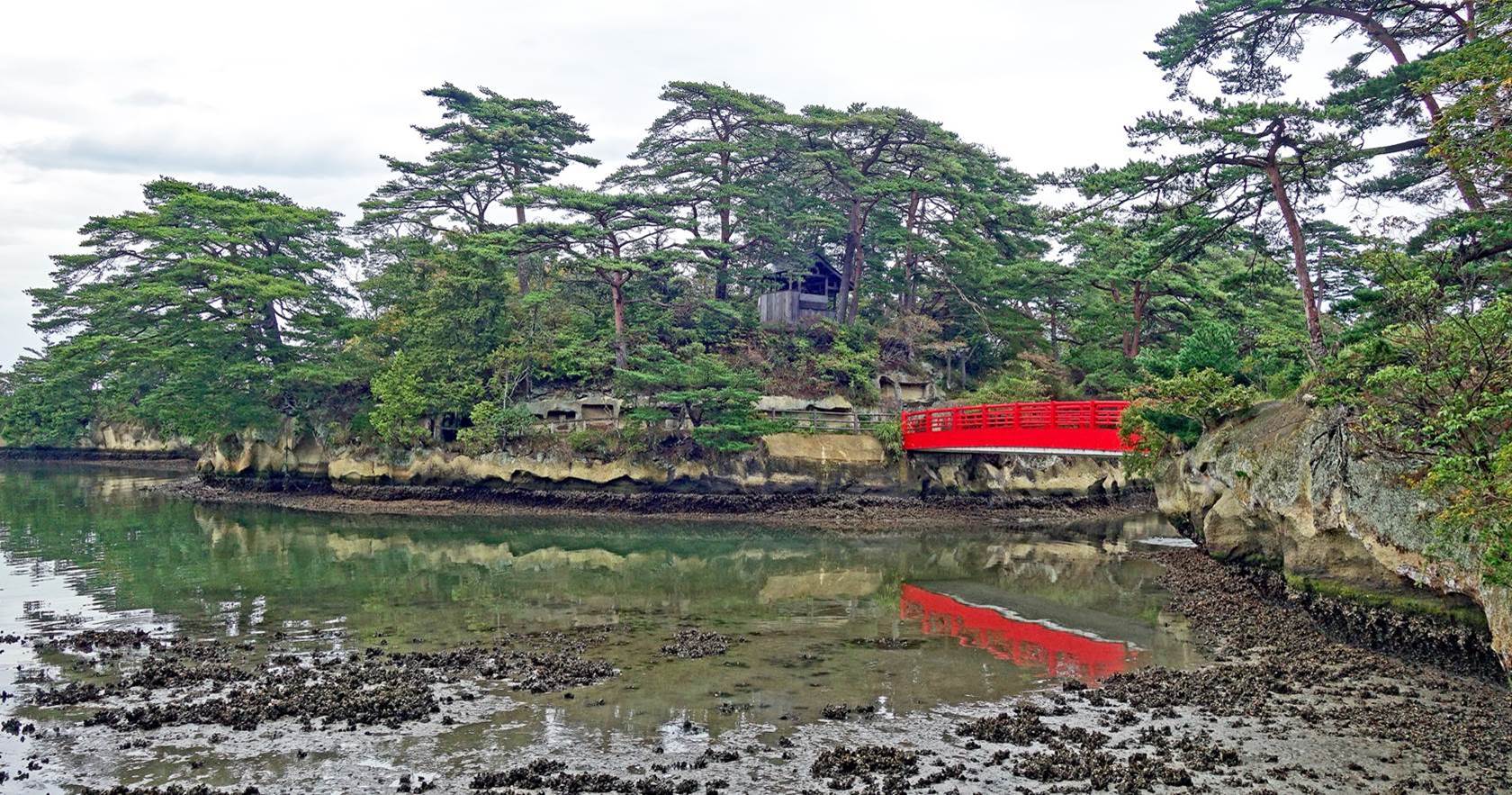
Left: Another
view of the island. Right: The shrine's torii and the
bridge seen from the shrine.
|
|
|
Some of the
many caves cut into the rock faces of the island. There are similar caves in
the precincts of Entsu-in and Zuigan-ji.
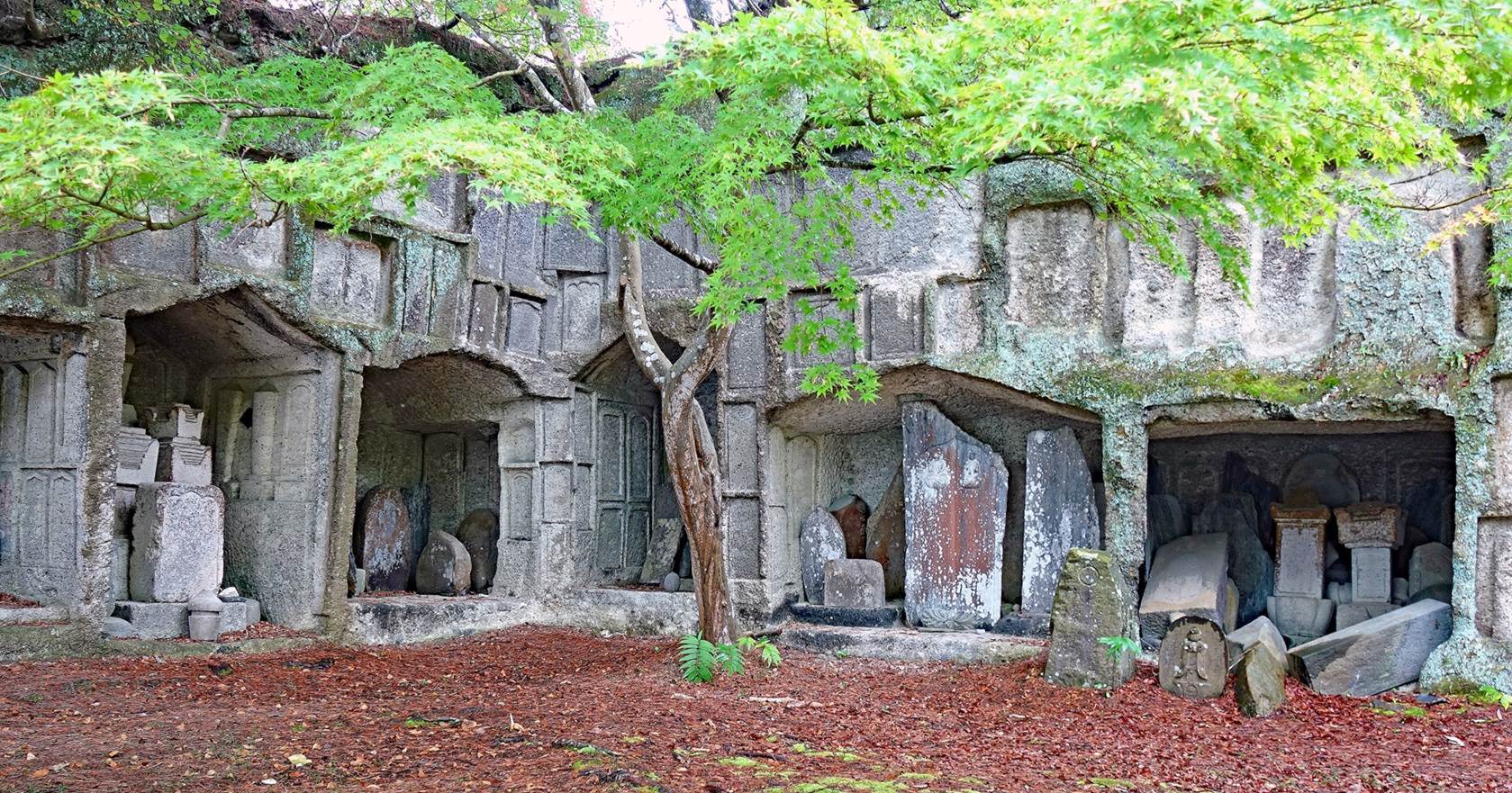
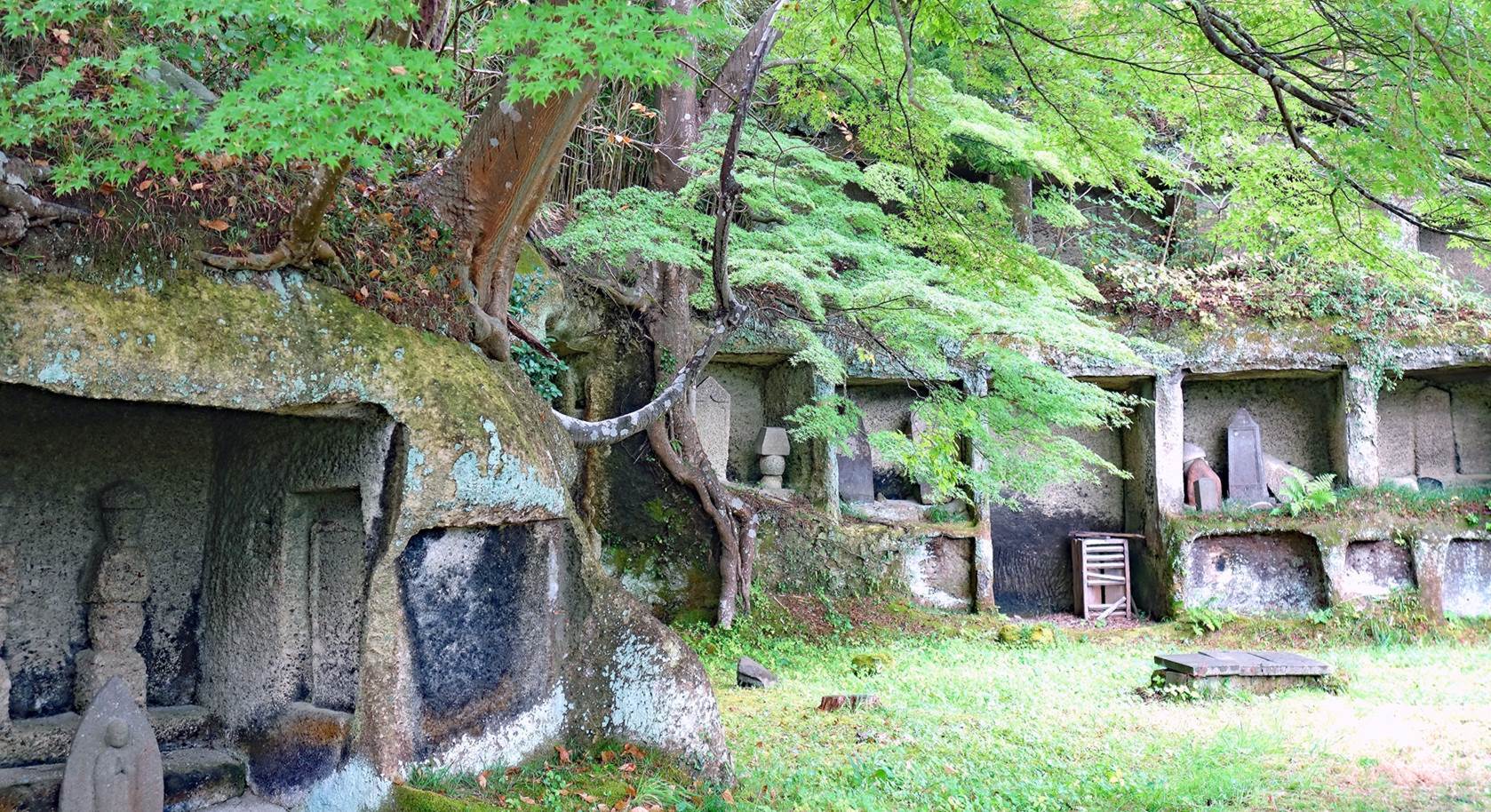
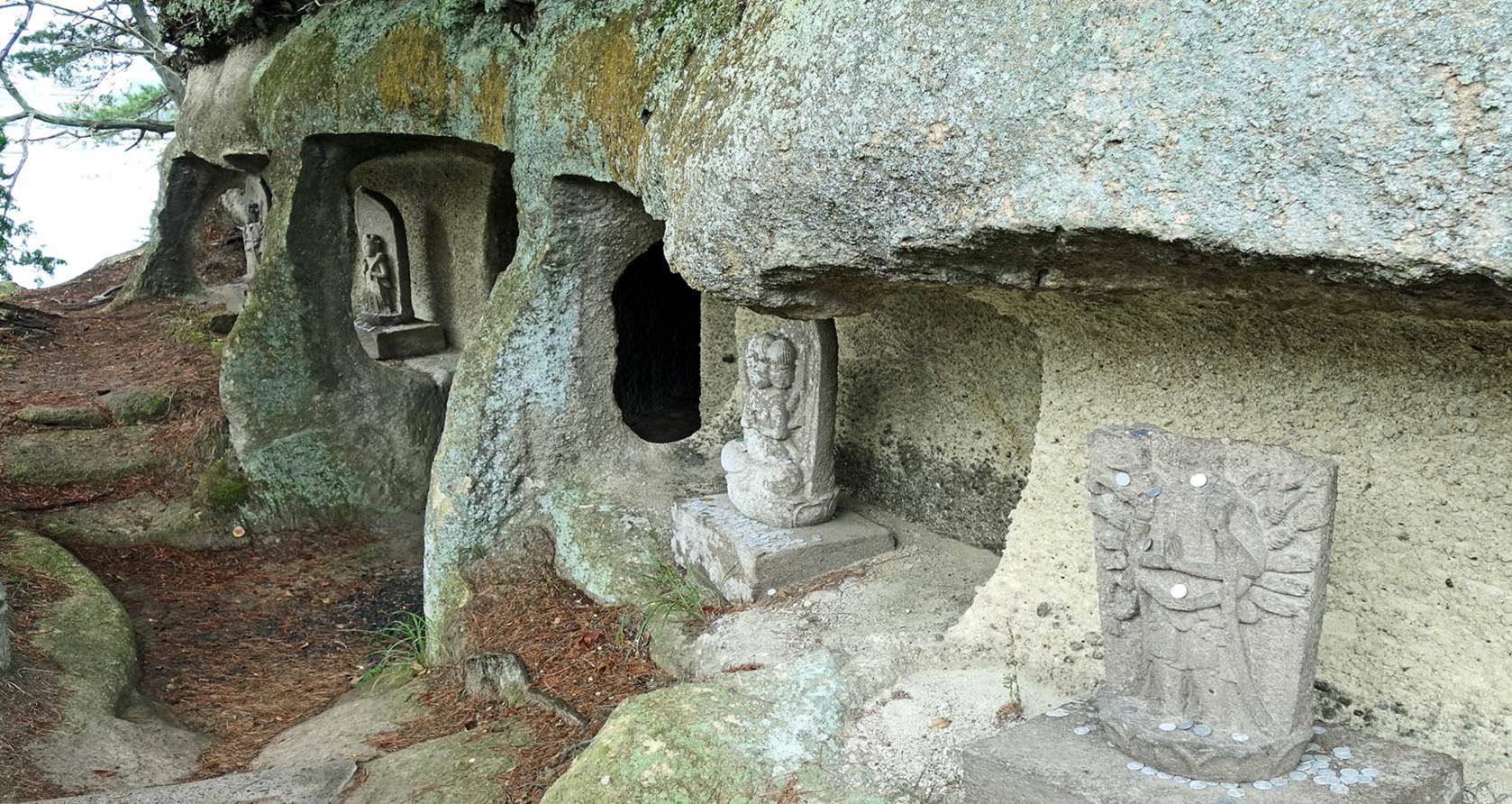
Megaliths on
the eastern side of the island.
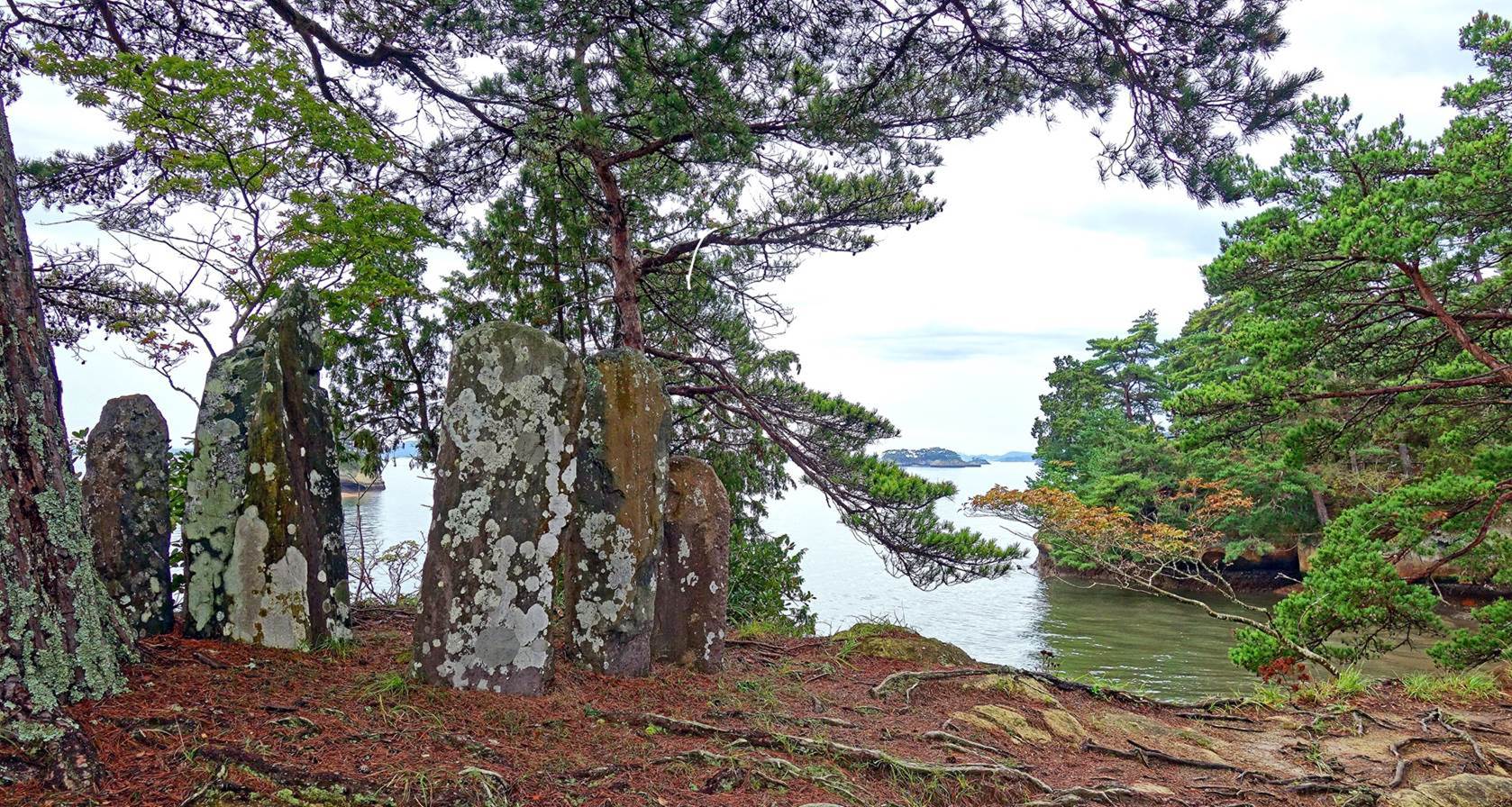
View from the
east side of the island.
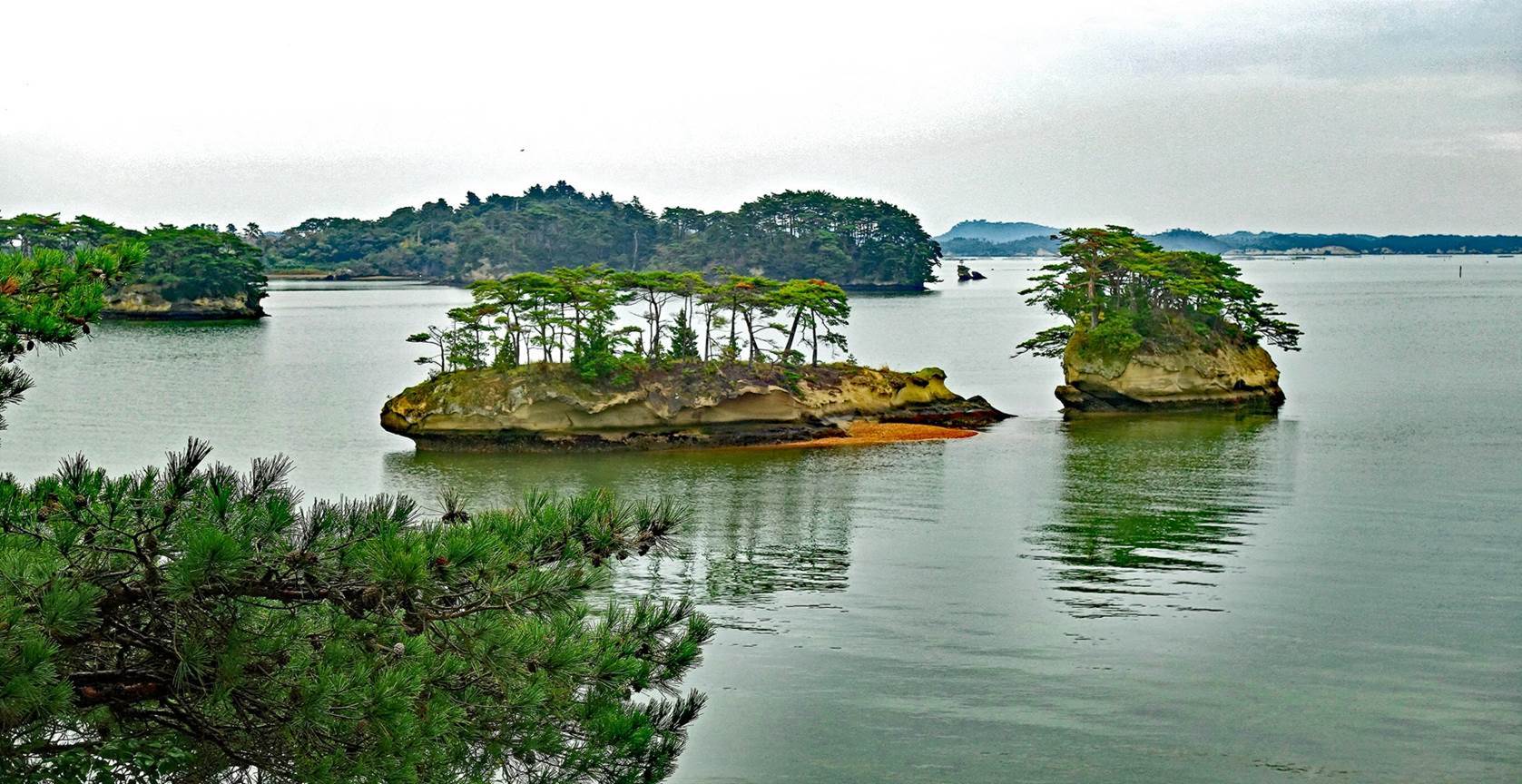
Entsuin
temple.
This temple
is dedicated to Kannon, the Japanese Buddhist goddess of mercy. It was built in
1647 by Date Tadamune, son of Date Masamune and second lord of the Sendai
domain, to house the mausoleum of his son, Date Mitsumune, who died suddenly at
age 19.
Somptuous
gardens at the entrance of the temple.
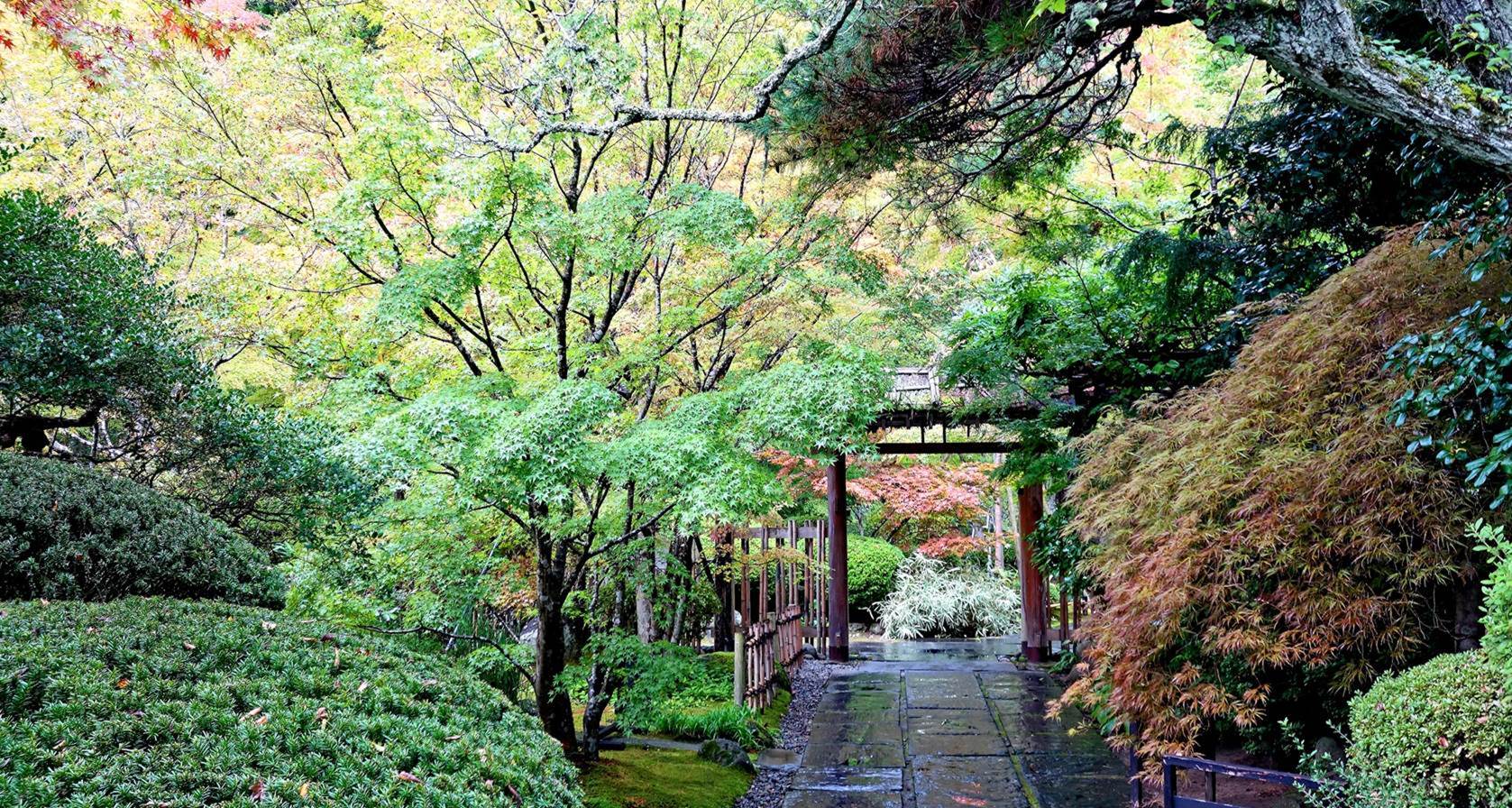
|
|
|
In the
Daihitei (main hall). The statue at the center represents Kannon in a sitting
meditation position. It was carved during the Kamakura period (1185-1333) out
of hinoki (Japanese cypress).
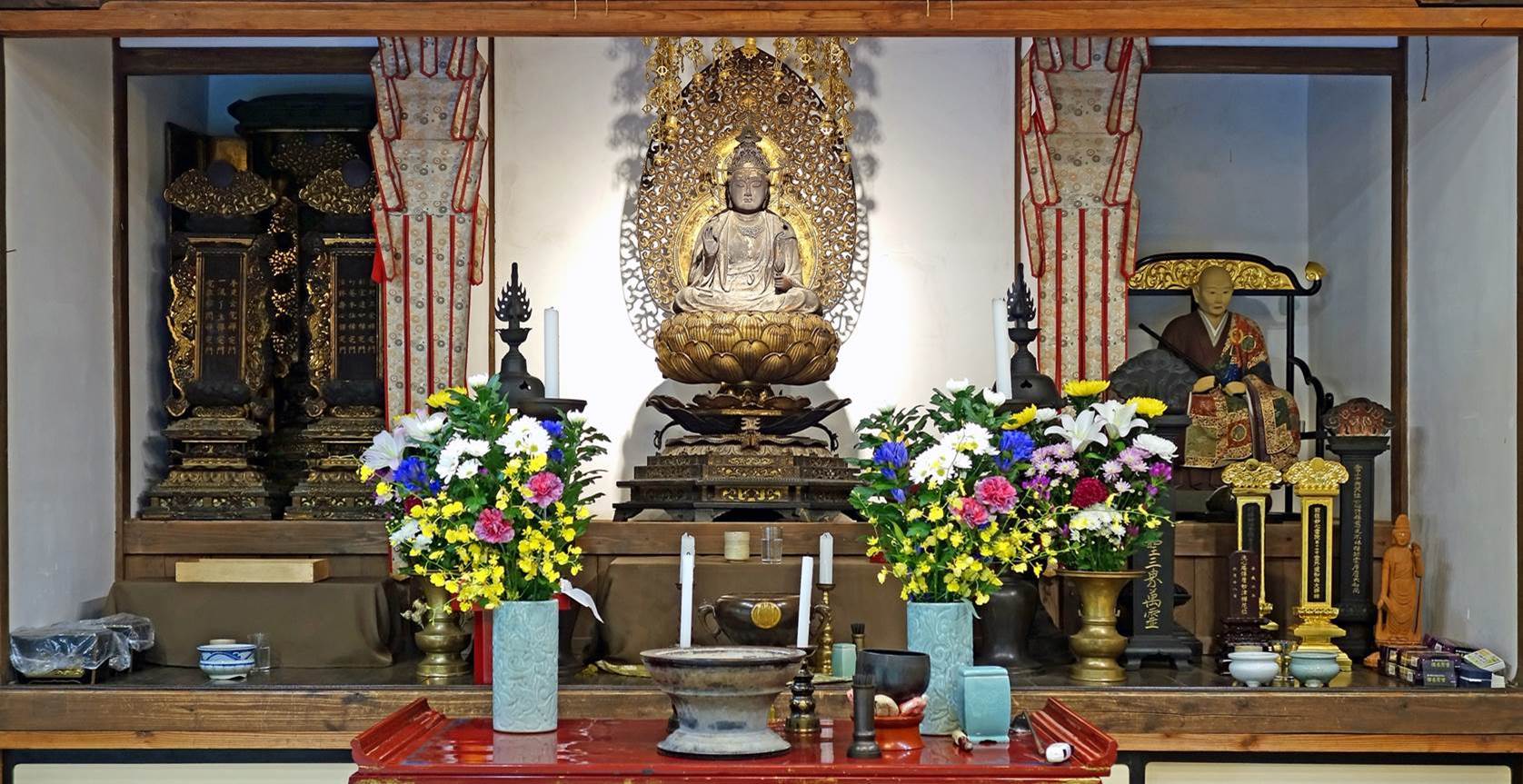
The
Sankeiden, the mausoleum of Date Mitsumine in the precinct of the temple.
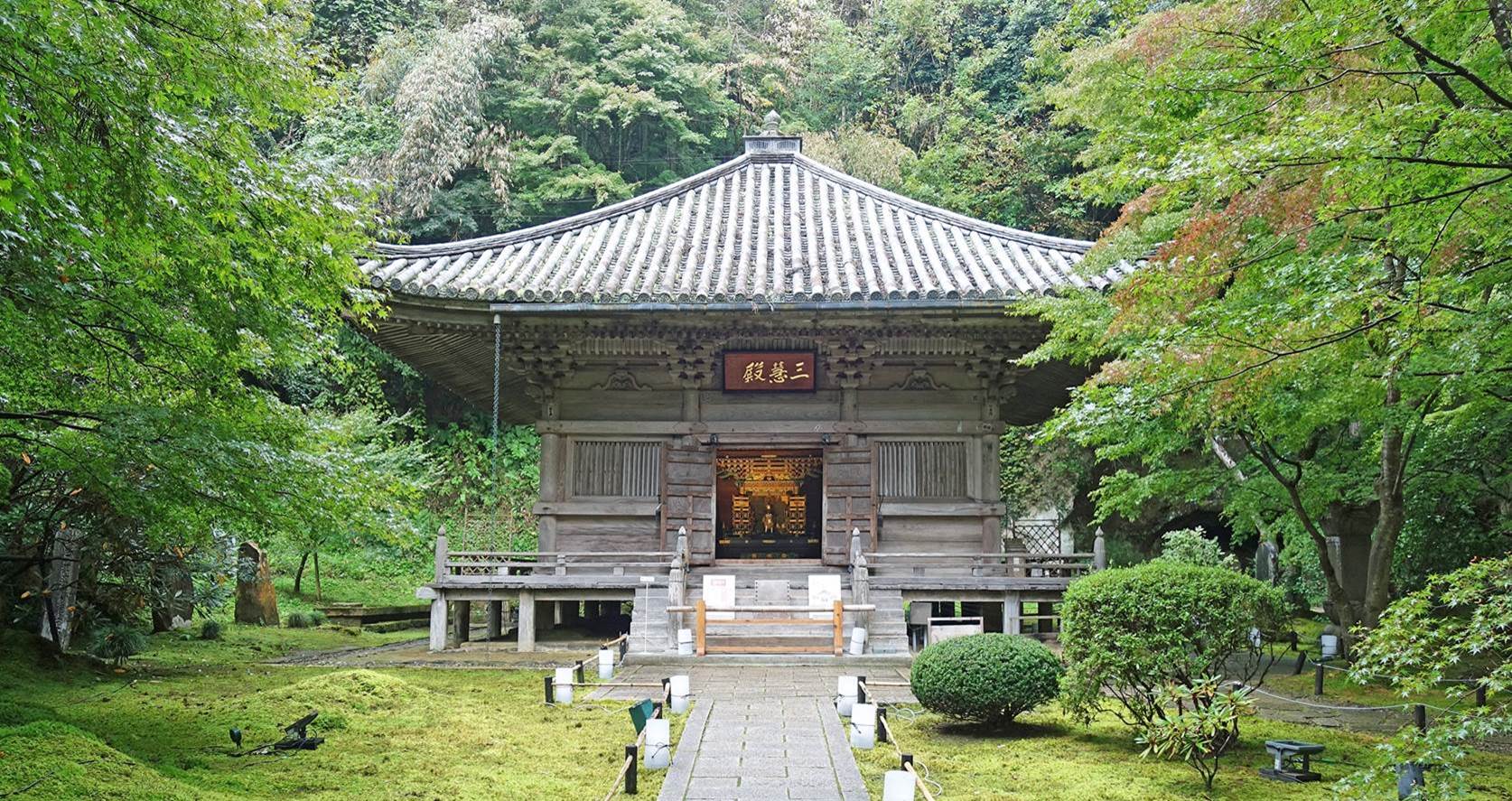
Caves used as
cinerarium in the back of the precinct.
|
|
|
Zuangji.
This temple
was established in 828 as a Buddhist temple of the Tendai sect, but was later
converted into a Zen temple during the Kamakura period. It was reconstructed in
1609 by Date Masamune.
Gates giving
access to the main hall, at the end of a long straight
alley flanked by cedar trees. The gate at the center is called the Nakamon,
while the gate on the left, mostly hidden by a cedar trunk, is the Onarimon,
the gate reserved for high-ranking visitors.
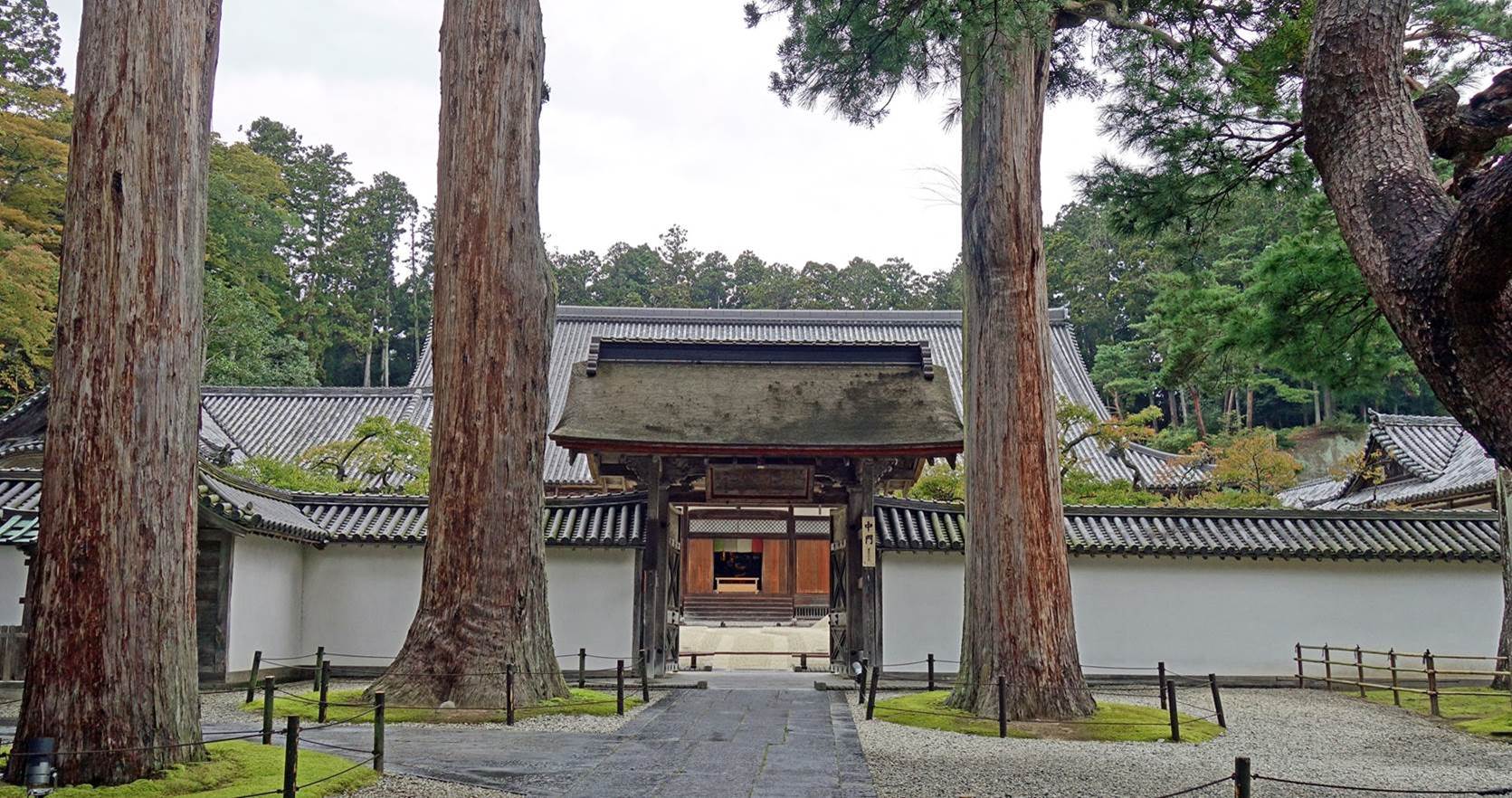
The Hondo
(main hall) standing behind an austere dry garden. It faces southeast toward
the bay. It is 38m wide and 24m deep.
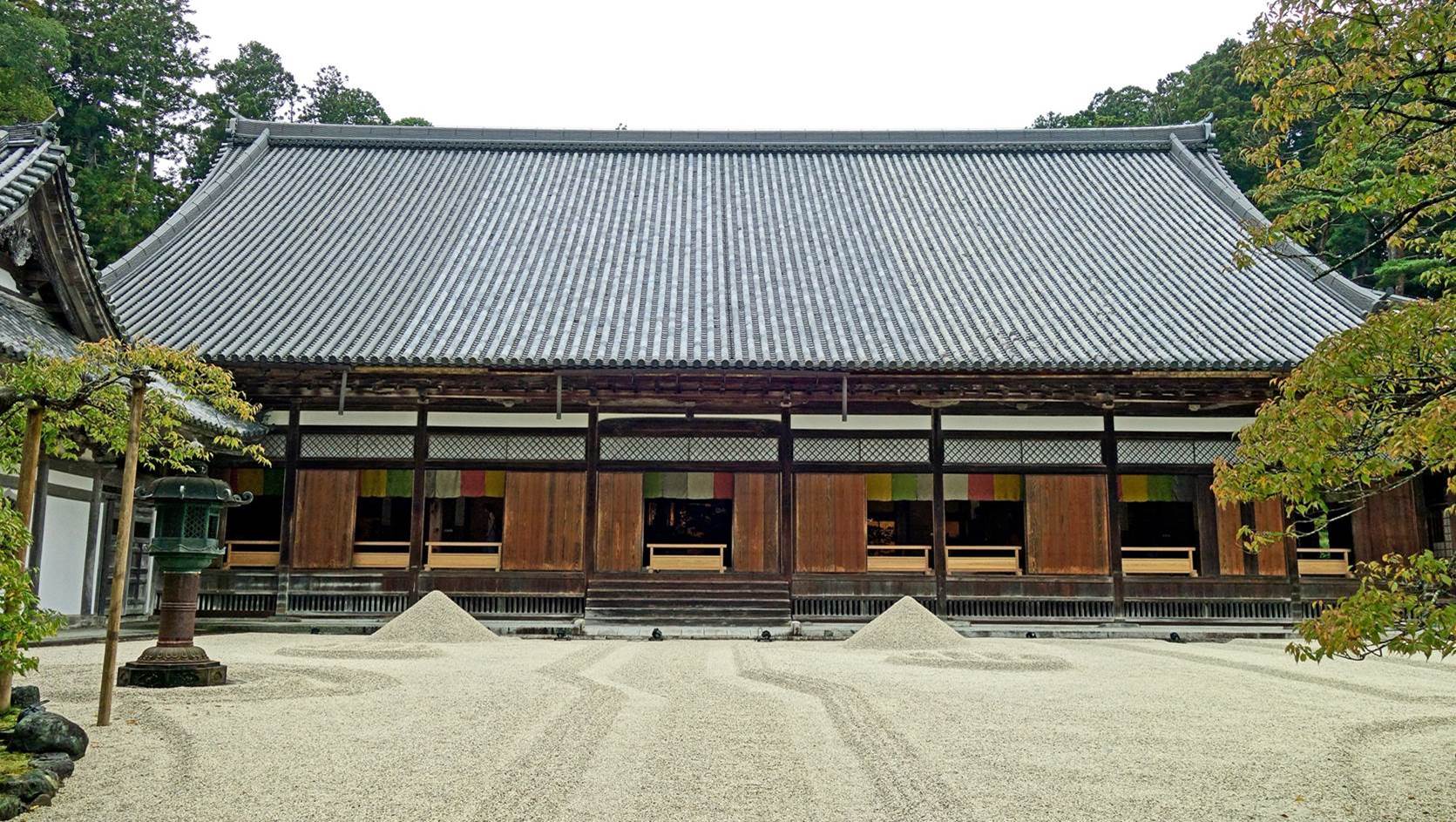
View of the
Onarigenkan to the left of the Hondo. Accessible via the Onarimon, it is the
reception hall for high-ranking visitors.
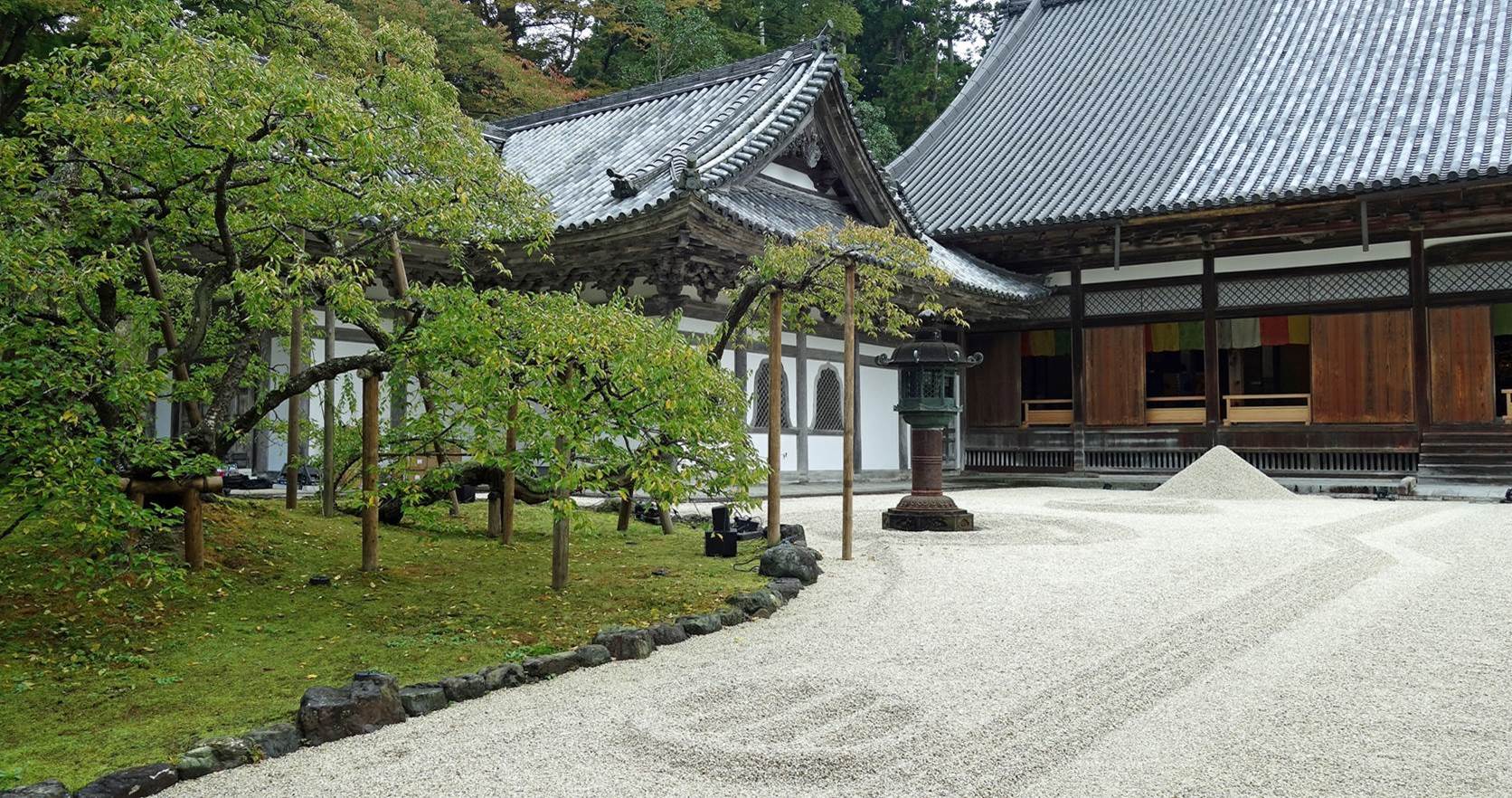
The Godaido,
a tiny temple erected on an islet of the bay southeast of the Zuiganji temple.
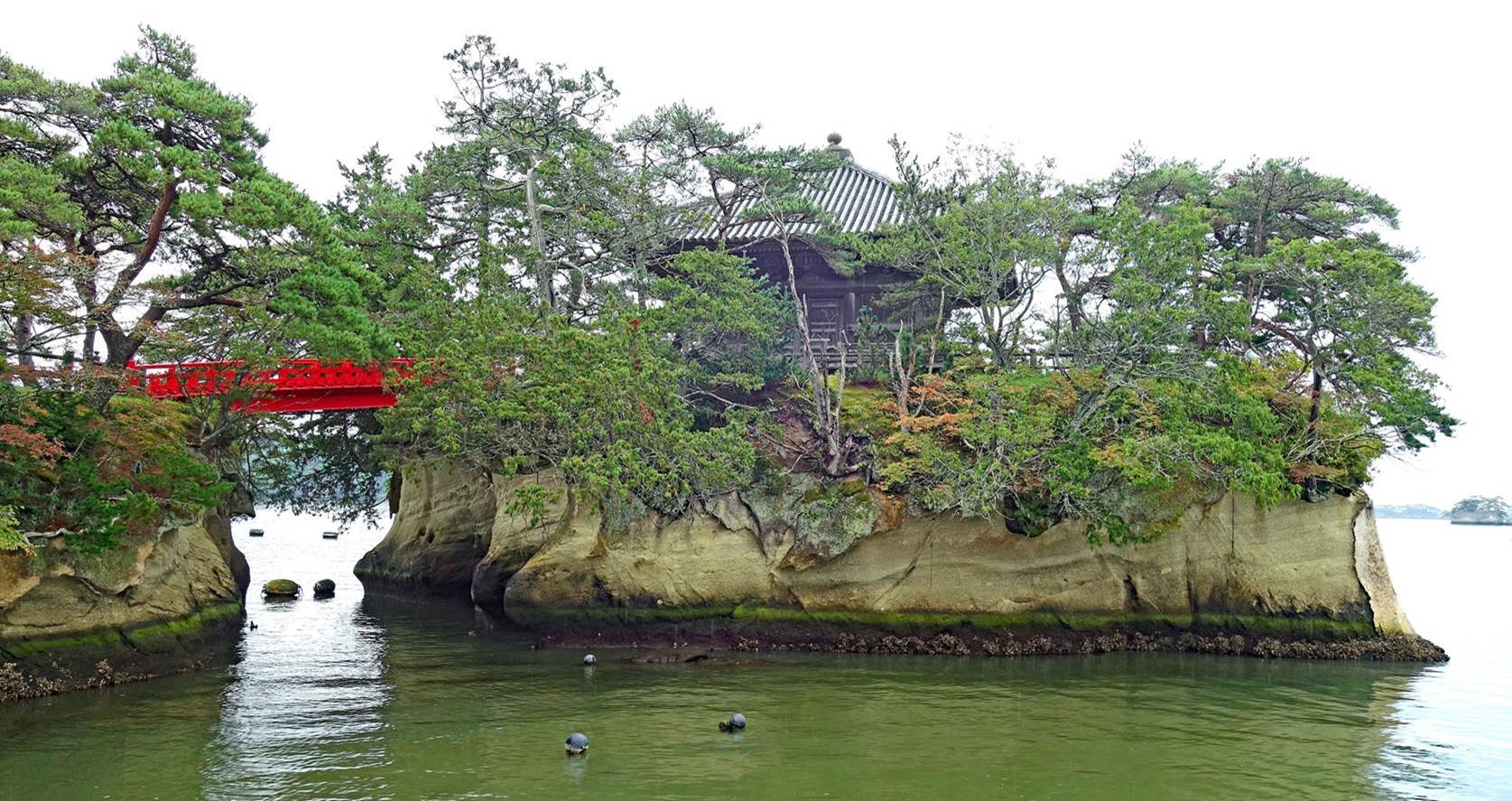
Tea house
originally built in Kyoto and gifted to Date Masamune by Toyotomi Hideyoshi.
Date Tadamune, Masamune's son, moved it to its present location overlooking the
bay of Matsushima and named it Kanrantei, which approximately means ″terrace
to see the waves″. Its doors and walls are embellished by paintings
attributed to Kano Sanraku (1559-1635).
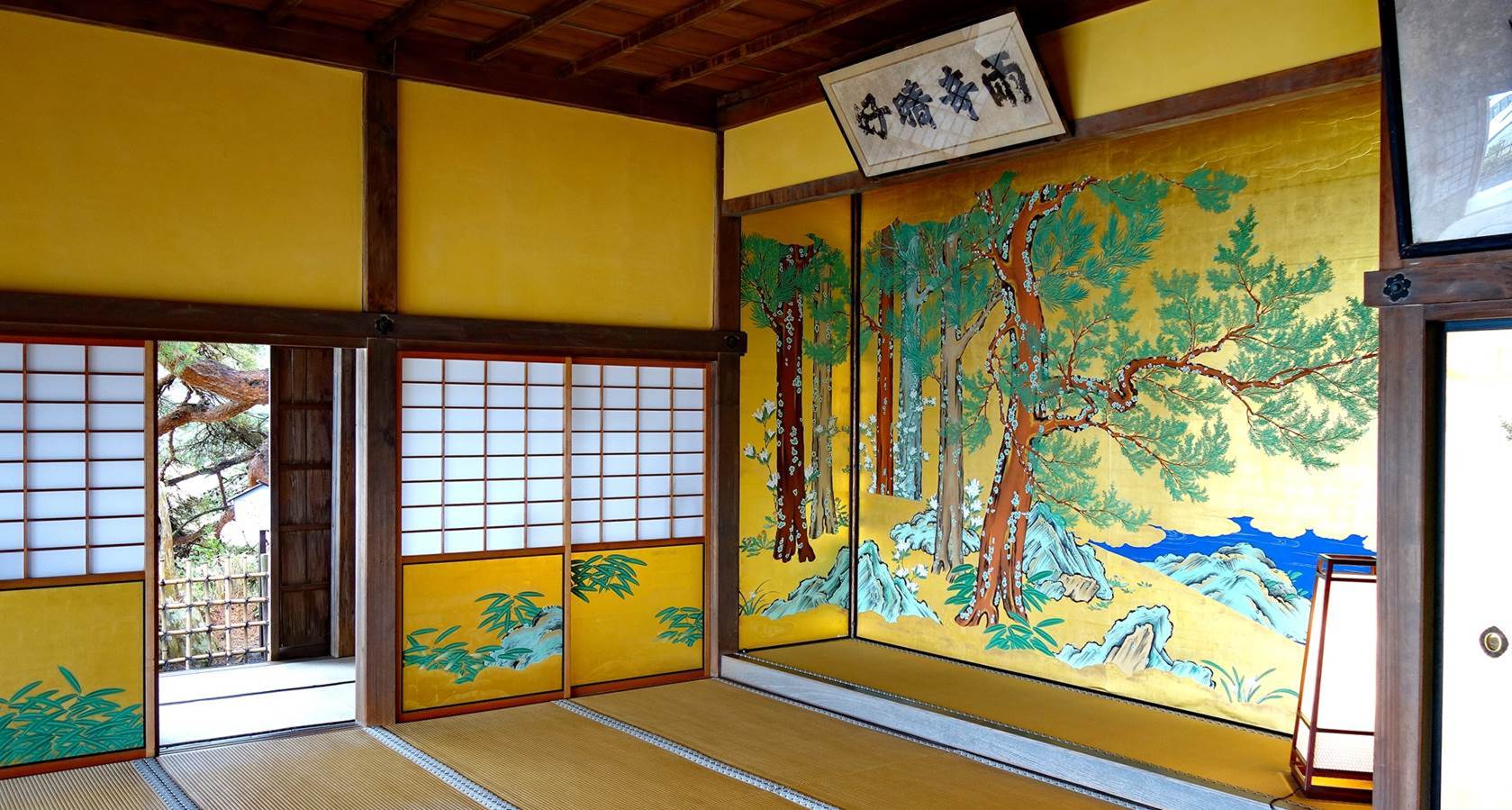
![]()
